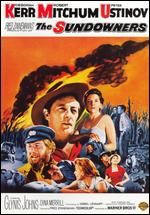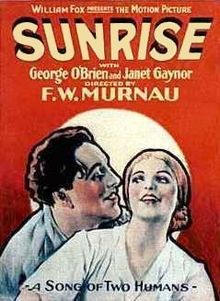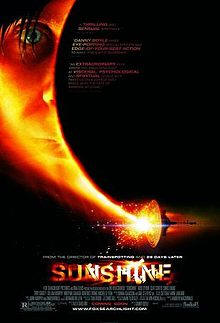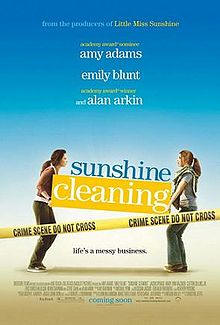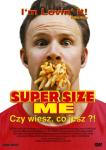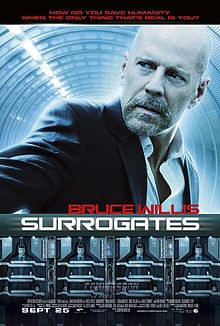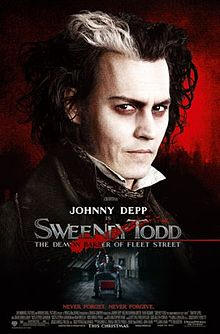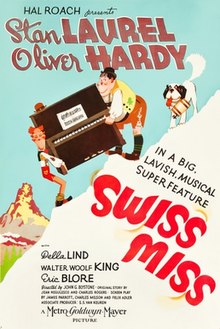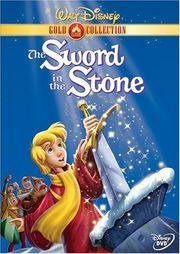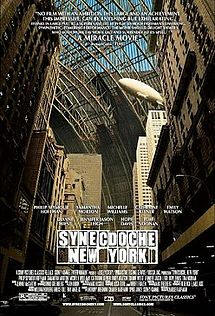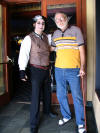|
Movies we've seen © 2004-2013 by John Varley; all rights reserved |
S
|
S.W.A.T. (2003) Three-quarters of a good movie, with a realistic feel. Then it degenerates into an overdone improbability, complete with a private jet landing on a bridge and a mano-a-mano fight in a rail yard full of moving trains. IMDb.com The Saddest Music in the World (Canada, 2003) This will be one of the odder reviews I’ve ever written, which is good, because it’s one of the oddest films I’ve ever seen! First, I don’t recommend it. Second, I’m very glad I saw it. Third, I couldn’t take my eyes off the screen! This is one of the most visually stunning films ever made. The director, a Canadian cult figure named Guy Maddin, has made it look like some strange artifact from an alternate 1930s world excavated from a film vault where it wasn’t particularly well cared for. Images are overexposed and grainy, there are dazzles, haloes, irises, an entire panoply of outdated techniques. Montages galore. The set design reminds me of The Cabinet of Doctor Caligari, and M, and The Last Laugh, and other UFA masterpieces from Germany. The sensibility is like David Lynch in his Eraserhead days. Forbidden Zone is also called to mind. I take it back, I do recommend it, but only for its visual style, it’s that good. But I warn you, the absurdist plot is impossible to care about. IMDb.com Safe House (2012) This starts out with an interesting premise from the spy business, something I would have thought impossible in that overworked genre. Like, I have often thought that Nikki (Julia Stiles) was one of the best characters in the Bourne movies. She was the grunt, the worker bee who ended up in deeper shit than she ever planned for when she joined the CIA. She was one of the ones that Chris Cooper and Joan Allen would point to and shout, in an authoritative, upper management voice, “I want you to do this, and I want it right now!” Here we have another grunt, Ryan Reynolds, who is in charge of a safe house in Capetown, South Africa. He’s bored out of his mind. There hasn’t been a damn thing for him to do for almost a year except keep the security TV screens clean. Then suddenly a big-time case falls on him, and the next thing he knows dozens of people are getting killed in his safe house. It’s too damn bad they didn’t do more with this idea. It goes along fairly well at first, though with my usual complaints about shakycam and split-second editing (and I was overjoyed to see that one of the discussion threads at the IMDb was about that, and everyone agreed that shit is awful). But it got too damn predictable, and too damn stupid-violent. Stupid-violent is when a fight drags on for five minutes of non-stop pummeling, literally hundreds of punches and such landing, any two of which would put a human being on life support in intensive care. And predictable? I guess there are some spoilers ahead, but if you can’t figure this stuff out you must have never seen a spy movie. Like, as soon as we cut to CIA control center back in Washington, it was clear that someone in the room was a traitor, giving information to the people who were trying to kill Reynolds and Denzel Washington. There were only three people it could be, and I knew in five seconds who it was, and I was right. Predictable? When we first meet Denzel we’re led to believe he’s a CIA sell-out, off the reservation for ten years, and is just out to get ten million dollars. Do you believe that? I didn’t, either. Denzel? Not gonna happen. I was right. I could name many other examples, but that’s enough. The “message” was that spying is a dirty business, and everyone betrays everyone else. I believe that to be true, and I also believe that around 50% of the shit spy agencies do is involved in covering their asses and the asses of important people above them. But it’s more of a Le Carre world, not a James Bond world. It’s backstabbing, not machine guns and karate and car chases. There are some good car chases, I’ll give them that, not a lot more implausible than most movie car chases and wrecks these days … which is to say, after the first fender-bender any of these cars would never move again, but okay, they’re fun. And it was nice to see the South African locations. That was something new. Capetown looks quite beautiful. So, I had some fun, but I was snoozing though the last twenty minutes. IMDb.com Safety Last! (1923) I guess everybody has films they just missed. I’ve been a huge Harold Lloyd fan since I attended a small seminar with him at Michigan State in 1966. I’ve seen dozens of his two-reelers, and all his features … except this one, his most famous. The picture of him dangling from the clock high on the side of a building in downtown LA is one of the most enduring images from the silent era. Now I’ve finally seen it, and it’s terrific. He never sets out to climb the building, it’s always just “one more floor,” and his human fly buddy will take over. But it never happens. And on each floor there is a new and brilliantly inventive challenge, from pigeons to painters. Mr. Lloyd lied to us that day so long ago, sort of. He left us with the impression that there was nothing between him and a 12-story fall but a pile of mattresses. The mattress part was true, but the fall would have been more like 10 or 15 feet, because the wall he was climbing was a fake, built on the roof of a tall building and shot from an angle to give you the illusion that he was higher from a solid surface than he was. And the long shots were of a stunt man. Not that I’m minimizing his accomplishment. The first time they dropped a dummy on the mattresses it bounced off and over the side of the building. And, like Buster Keaton, he was incredibly strong. He did do all that what we would call free climbing today, up vertical and overhanging faces with no ropes. And he did it all with eight fingers! A few years before he had been fiddling with what he thought was a prop bomb. It turned out to be real, and blew off the thumb and forefinger of his right hand. For the rest of his career he concealed it with a glove or a prosthetic. IMDb.com Safety Not Guaranteed (2012) Younger viewers will probably not understand why one aspect of this movie depressed me a bit. Here we have a guy who claims he has built a time machine. And he plans to go back into the past with it … back, back, back in time, into the far distant past … … to 2001. Holy shit! To young people today, 2001 is way back in the past. They don’t recall just how far, far distant 2001 seemed when we sat down in the theaters in 1968 to view Stanley Kubrick’s masterpiece. Look at that! Space stations, colonies on the moon, trips to Jupiter in gigantic ships! Well, only the space station part has happened here in the real 2012, but at the time it all seemed possible in just 33 years. Sigh. I’m old. Okay, on to the movie itself. I think it’s a little gem, of the sort I love to see, by relative newcomers on a budget of only $750,000. It is science fiction, and it’s also a romantic comedy that works very well, both because of a good, witty script and good work by Mark Duplass and the lovely Aubrey Plaza (who sounds more like a place than a person, and I’m sure she’s very tired of hearing that) as a young, rather depressed, wannabe journalist named Darius. The idea is simple, and great. Someone places the following classified ad: WANTED: Someone to go back in time with me. This is not a joke. You'll get paid after we get back. Must bring your own weapons. I have only done this once before. SAFETY NOT GUARANTEED. A Seattle magazine gets interested (and this must be the only movie ever shot in Seattle that never shows the Space Needle!), and sends one writer and two interns to ferret out the story. What’s with the guy? What kind of nut is he? As we go along and follow the romance that develops between the time traveler and Darius, one question keeps circling around in my brain: Does he really have a time machine? And another: if he doesn’t, is the story still science fiction? Long before the question was settled (right at the end, naturally), I decided that it was SF either way, crazy or real. The theme was enough for me. And I was delighted right through the fade to black, which is very rare. IMDb.com Sahara (1943) The American army’s first taste of war in the European Theater was in Africa, and it was a bitter one. They were led by an incompetent general who preferred to stay in his headquarters 70 miles behind the lines. The Germans under Rommel slaughtered the Americans at the Kasserine Pass. (You can see the aftermath of this disaster in the early scenes of Patton.) It was such a rout that many troops were separated from their units with no idea where they were or where they should go. This is the (fictional) story of one such group, in a tank commanded by Humphrey Bogart. They pick up some Brits and try to find their way home through the endless sand, with no water. They end up holding off a regiment or battalion (I’ve never been sure which is which, but it’s about 500 Nazis) who are also dying of thirst, and think the Americans are guarding a well, which is actually dry. It’s a damn good movie throughout. One silly thing: Lloyd Bridges trying to play a limey soldier. Luckily, he gets killed off early in the picture. I did a little research on the M3 Lee tank they are driving. American armor in the early days of World War II was devastating and virtually invulnerable … if it had been used in World War I. Actually, the M3 was a death trap, a tin can that was no match for Nazi tanks, which could strand off and destroy them with their longer-range guns. And if the M3 got hit … oh, brother. Its armor was riveted instead of welded, and the result was that the rivets popped out and became lethal bullets that perforated the crew. Who needs Nazis when incompetent American designers are out to kill you? IMDb.com Sahara (2002) I thought I'd follow you anywhere, Michael Palin. I'd have done almost anything to go along with you when you went Around the World in 80 Days. I'd gladly have gone with you from Pole to Pole. Himalaya was rough, and with the current state of my feet and legs I could never do the hiking you did, but as a younger man I'd have jumped at the chance. I haven't seen your Full Circle or Hemingway Adventure, but I'm pretty sure I'd have had a great time. But on this journey, traveling around and through the most forbidding desert on Earth ... It's like Lee said at one point: "I'm glad he's going there, so I don't have to ..." Lordamighty, do I ever agree. He goes some places few people ever go, sees things that only a handful of westerners will ever see. But he walks a great deal of the way, in 56 C. heat ... that's 133 F., boys and girls. And that's the air. The ground would be hot enough to fry shoe leather. I would have collapsed after about ten steps. So, I'd have skipped that part. He also travels through Algeria, where Muslim radicals have declared a fatwa against all westerners. All of them. White skin, and you're a legitimate target. He travels on a train that has been bombed dozens of times in ten years, and stopped by murdering fanatics even more often. I'd have skipped that part, too. But don't be discouraged. The whole point is, you don't have to go, and you can still see all the wonderful and amazing sights he sees, without sand in your food. Michael is his usual charming, endlessly inquisitive self, and he even does some Python stuff in Morocco, at the scene of what must have been two months of madness during the filming of Monty Python's Life of Brian. "Over there is the tower where Graham Chapman fell off and was rescued, rather implausibly, by a flying saucer ..." As he points out, it's not everyone who gets to revisit the site of his own crucifixion. "Always look on the bright side of life ..." IMDb.com
Now, as to the movie ... One thing that even a very bad movie like this can use to earn points with me is to take me to exotic locations. Places I’ve never seen. I wasn’t optimistic with Sahara. I’ve seen sand. In fact, I’ve probably seen every desert in the world, from the Gobi to the Sahara to the great outback of Australia. Of course, many of those were actually filmed in the Mojave or Death Valley or even in the dunes I can almost see from my front door. (Cecil B. DeMille’s original The Ten Commandments was filmed ten miles from here.) What I hadn’t seen was Lagos, Nigeria, the Niger River, and the ancient mud cities of Mali. Cool! I enjoyed that part. I was only a little disappointed to get home, go to the IMDb, and discover I was actually seeing Morocco, Spain, Shepperton Studios and Hampshire. Oh, well, that’s show biz! IMDb.com Salmon Fishing in the Yemen (UK, 2011) For some reason the British refer to what the rest of the world knows as Yemen as “The Yemen.” They do that with “The Lebanon,” too, and I think maybe a country in Africa, whose name doesn’t come to mind right now and which might not even exist. If anyone out there knows why they do this, I’d like to hear about it. It’s a mystery to me, like the superfluous U in labour, harbour, honour, etc. This is an amusing trifle about a crazy sheikh (and do we really need that second H?) from … sigh … The Yemen who has a crazy idea to build a dam in his desert country and create a river and stock it with British salmon. There are so many problems with the idea that Ewan McGregor, a worker in the Bureau of Fisheries (or something like that) can’t even begin to enumerate them. But a scheming public relations wonk from the PM’s office (Kristin Scott Thomas, who has the juiciest part in the picture and eats it up) latches onto scheme as a way to get some good publicity out of that benighted region. The sheikh turns out to be not so crazy after all, but a true visionary, and Ewan and Emily Blunt, from the company that will be building the project, warm to him quickly. Before you know it they are all out there in the freakin’ sand, dropping farmed fish into the water to see if they’ll swim upstream, even though they’ve never seen a stream … It’s all in fun, and I had a great time until that last 20 minutes or so, when the romance (of course there’s a romance, you fool, even though he’s married and she’s engaged to a dead man in Afghanistan) sort of bogged things down, and it all wrapped up too easily. But it wasn’t enough to spoil it, and all in all, it was a pleasant night at the movies. IMDb.com Salt (2010) If you’re like me, you really should write your review of a movie like this the same day you see it. As of now, it’s been about two months (it is one of many in my backlog that built up while finishing the new novel), and I honestly can’t recall a single plot point. I just now scanned the Wiki article about it, and a few scenes come back to me, none of them with much enthusiasm. I recall that Angelina Jolie is effective as a female action figure, and that a lot of things got blown up and a lot of bullets got fired. All to very little purpose. It’s meaningless brain candy that will melt in your mind, not in your heart. IMDb.com The Same River Twice (2003) My generation, the Baby Boomers, have been a pain in the ass since we reached elementary school. Our doting parents spoiled us outrageously, and we figured we were the greatest generation of all time, when in fact our parents have a better claim to that honor. We were going to change the world. Well, we shook things up a little, but now we’re tired, and spoiling children of our own. We are a great bolus passing through the digestive tract of America, and we’ve caused cramps all the way through. By the time we reach the rectum, we’ll really be a pain in the ass. Already the forerunners are into “celebrating” aging, menopause, baldness, big thighs, and soon we will be celebrating death, like Timothy Leary already did. But darn it, some of us had fun along the way. This movie is a slice of duration, like several documentaries we’ve seen recently. This one takes a 20-year slice, from 1978, when about a dozen people spent their summers as tour guides in the Grand Canyon, naked most of the time, to 1998. Lovely, hard bodies. Everything was possible. Now they are mostly settled down into good gray lives. I’m not knocking it. The one dude who is still on the river comes across as a fuck-up ... but he’s having a good time. So are the others, mostly. No less than two became mayors of medium-sized towns. But when I listen to one man talking about the cycles of life, how his father got old, and now he’s getting old, and it’s his children’s time to be young, I thought ... who planned this out, anyway? God? Screw him. I wouldn’t want to be as dumb as I was back then, but I’d sure like to have my body back. And I’m not celebrating what’s going to happen to it. IMDb.com Saludos Amigos (1942) Saturday Night at the Toons! IMDb.com The Saphead (1920) This was Buster Keaton’s first feature-length movie, and it’s important mainly because it was a hit, and cleared the way for his graduation from two-reelers into marquee billing. Other than that … huge Keaton fan that I am, I have to admit that this one is not very good. It was adapted from a novel and a play, and is hardly a comedy at all, except for some comic bits of business that look as if they were thrown in to give Buster something to do. He plays a rich twit (all wrong for Keaton!), and the plot has to do with the stock market. There are almost none of the madcap antics that are Keaton’s trademark. I’m so glad he got quickly back into comedy after this turkey. IMDb.com Saps at Sea (1940) This was the last movie Laurel and Hardy made for Hal Roach, before their disastrous move to MGM and the domination of that massive studio, where they never had much input into their movies again. It’s not one of their best. The music seemed intrusive to me, hammering home the comic points like it was the Three Stooges. Music in an L&H two-reeler was always subdued, just something going on in the background while the boys were front and center doing their genius thing. There were only about three or four musical themes that fit all situations. Also, they seem to repeat some of their schticks too many times. Ollie giving us the exasperated look, Stanley scratching his head. You know the drill. Which is not to say it isn’t funny, there are plenty of laughs. I just wish I could re-score and re-edit it. Ollie is driven mad by his job in a horn factory, where the new horns are tested repeatedly and all at once. Doctor James Finlayson prescribes a long ocean voyage to relax in the sea air. Ollie is having none of it. He’s not going to board a steamer. Their solution is to rent a small, decrepit boat tied up to the dock. But one night an escaped murderer comes aboard and the boat is set adrift. Lots of funny stuff follows. It’s okay, but I’d recommend any of dozens of two-reelers over this almost-feature (57 minutes). IMDb.com Sarah Silverman: Jesus is Magic (2005) Sarah Silverman (hereinafter, SS, for brevity) recently got in trouble for using the word "chink" on network TV. The network apologized. SS didn't. Here's what happened: She said a friend told her how to get out of jury duty. Just write something really inappropriate on the form you fill out. So she wrote "I hate chinks." But then, she reflected, she didn't want to be seen as a racist, so she wrote instead "I love chinks." If you don't think that's funny, then you won't like SS. Here's a couple more: "I was raped by a doctor, which is so bittersweet for a Jewish girl." "I dated a guy who was half-black, but he dumped me because I’m such a loser. Wow, I shouldn’t say things like that, I’m such a pessimist… he's actually half-white." SS is about as "edgy" as they come. She jokes about rape, AIDS, 9/11, the Holocaust, race, you name it, nothing is too taboo for her. ("I have a theory that if there had been black people in Germany in World War II, there would have been no Holocaust. ... not for the Jews, anyway.") She gets away with it because her on-stage persona is so clueless and lacking in self-awareness. She thinks she knows how to be politically correct, but then she'll make some perfectly awful statement ... catch herself ... and then make a correction that is even worse than the first statement. "I love chinks." That sort of sums it up. She is so politically incorrect she makes Bill Maher sound like Jay Leno. She is a breath of fresh air to one, like me, who cringes at liberal circumlocutions like "differently abled," or "senior citizens," or "people of color." Or how about "the N-word"? (The N-word is "nigger," friends and neighbors. There, you heard it here first. I'll bet you were wondering.) If Mark Twain can use it, so can I. Though, come to think of it, Twain has been in trouble recently over that bit of racist garbage Huckleberry Finn ... If SS reminds me of anyone, it is Lily Tomlin ... and Steve Martin. Remember Lily's high school cheerleader talking about how icky people in wheelchairs are? "Why can't people like that just stay at home?!" Then there was Martin, with his clueless but totally self-confident jerk, making an asshole of himself and never realizing it. SS is the female side of that, forever apologetic, and never realizing how awful she is, either. Having said that, it's too bad I have to tell you that this movie mostly sucks. She's very good on the stage, and then they cut away to some other business and it is cringingly awful, and it's not funny, because you get the feeling SS doesn't know it's awful, as she does on the stage. IMDb.com The Savages (2007) An actor’s field day, and a pretty good movie. (I hate the title, though. I expected it to be about savagery, but it’s just the name of the family. If there was some deeper, symbolic meaning, I missed it.) Two adult children have to take care of their father, who is descending into dementia. He was never a good father, they don’t like him, and he has warped their ability to have relationships with others. For some reason the daughter still feels tremendous guilt at putting him into a quite nice assisted care or nursing facility. The movie is unsentimental. There’s nothing to like about this asshole, as there is in so many movies about Alzheimer’s and related horrors of aging. I like that about it, and also that the message is not that putting people in facilities like this is an awful thing to do. Sometimes you just have to preserve your sanity. Both Philip Seymour Hoffman and Laura Linney are very good. Linney got a Best Actress nomination. IMDb.com Savages (2012) Don Winslow is one of my very favorite writers. I know he’s not for everyone, because his stories often have extreme violence in them. But his characters, his settings, his plots … they’re as good as it gets. He doesn’t have a real series like the one-character writers, but he has revisited some of his characters now and then. He recently wrote a prequel to the book this one was based on, and I liked it a lot. The strange threesome of Ben, Chon and O (short for Ophelia) are some of his best creations. Ben and Chon have bred the absolute best marijuana on the planet, and have made a lot of money doing so. But money was never what it was all about, it was about good grass. They have a posse of loyal friends who do most of the work growing and selling the weed, and lots of grateful buyers, from surfers to lawyers. But now the Mexican cartels have noticed them, and intend to take them over. And Ben and Chon say, fine! Take it! Who wants to get mixed up with psychopaths like Benicio del Toro, or Salma Hayek? Only it’s not that simple. Soon they are bathing in blood, doing anything in their power to get the kidnapped O back from truly evil people. The movie goes on very well indeed until the last ten minutes, when it squanders all the goodwill it had built up with one of the worst cop-out endings I’ve ever seen. A truly awful ending. Don Winslow was one of the co-writers, but director Oliver Stone was another, and I can’t help thinking Stone had a big hand in it. I think you might be able to get a lot of enjoyment out of most of the movie (if extreme violence doesn’t put you off) but you’ll have to ignore the ending. And BTW … I have to say that even extreme violence can be relative. This movie is quite bloody, but it’s not one thousandth as bloody as the stuff that happens down there in Mexico every goddam day, and all because of our insane attitude to a harmless weed. Legalize it, goddam it! IMDb.com Saved! (2004) This story is basically the same as we saw recently in Mean Girls, but at a “Christian” school. What it shows is that being blissed out on Jesus is no barrier at all to being the same kind of bitch queen bee we all remember from "real world" high schools. It is very funny, though it goes a little over the top at the end. The message: true Christian faith is a lot more than just a set of inflexible rules. In short, the Christian message I received in my own youth, from a semi-liberal Lutheran church. But folks, there’s a parallel universe out there, and according to the election news, they might even be the majority. These are people whose every living moment is informed by their shallow religious rules, who listen only to Christian music (most of it awful knock-offs of rock and roll), who wear Christian fashions, who can’t say sentence without Jesus or savior or God creeping into it. And I have to say, I’d have found the movie a lot easier to laugh at if this was some sort of creepazoid minority cult. But, my fellow citizens, these fucking fruitcakes are running the country. If they win again in 2008, I may have to leave. Seriously. IMDb.com Saw (2004) VarleyYarn. IMDb.com A Scanner Darkly (2006) I was, frankly, stunned at how bad this movie was. Not a single thing worked. It was, famously, done with interpolated rotoscoping. The interpolated part is computer-generated; rotoscoping was invented by Max Fleischer in 1914 for his Koko the Clown movies. Here, it is a horrible distraction. Keanu Reeves' beard looks like some awful fungus crawling all over his face. Many things don't have shadows. The "scramble suits" the undercover cops wear are interesting ... for about five minutes. Then they just get on your nerves. And really, there isn't much of a story. It mostly consists of dope-addled people sitting around talking nonsense, and that gets old fast. No reason is given as to why 20% of the population is taking this awful stuff called Substance D, and though I assume the rotoscoping was done to give a feeling of a dope dream, no real sense of the high the addicts get is given except for the opening scene where bugs are crawling all over a man. The reviews say that Reaves "fell in love" with Winona Ryder, but it was news to me. There was zero chemistry. World-famous stoner Robert Downey Jr babbled, world-famous pothead Woody Harrelson freaked, and Reeves, who looks stoned at the best of times, mostly just sat there and brooded. The music was insipid. The "revelation" of who "Agent Fred's" boss was, was ... blindingly obvious, the other revelation of what they were doing to Fred was stupid, and the other other revelation of where Substance D was coming from was way, way beyond stupid. This whole film is almost as bad as Substance D except, thank god, it's not addictive. IMDb.com The Scarecrow (1920) Buster Keaton two-reeler. The first reel of this short is simply amazing. Two men share a small one-room house. It is filled with the most ingenious and comic labor-saving devices. Some of the shots must have needed a lot of takes to pull off, as they relied on not just perfect timing, but a lot of luck. I was roaring. The second half is not so inspired, but still funny. This is available on a DVD with the feature Go West. IMDb.com The Scarlet Pimpernel (1982) Sir Percy Blakeney, Baronet and silly fop, is actually the elusive Scarlet Pimpernel, who has devoted himself to rescuing the aristocracy from the horrors of the Reign of Terror during the French Revolution. Perhaps you saw the original, classic 1934 version with Leslie Howard and Merle Oberon. (Or maybe Chuck Jones’ “The Scarlet Pumpernickel, starring Daffy Duck.) This is a lush, well-mounted production, but Anthony Andrews is no Leslie Howard. (Jane Seymour, however, outclasses Miss Oberon in every way, IMHO. All she really has to do is look pretty, and Seymour can’t do anything wrong in that department.) It’s a great, rip-roarin’ adventure, and this version is well done. But no matter how you tell it, the story itself has a fatal flaw for me, and it can be summed up thus: Who cares? Now, I’m not going to justify the crimes of Danton, Marat, and Robespierre. I think it’s neat that all but Marat (assassinated in his bathtub) got to taste the edge of the blade they so enthusiastically endorsed when they were on top. However, this story and all movie versions of it I’ve seen are incredibly dishonest. The Pimpernel is horrified that the children of the aristos are being killed along with their parents. His ultimate coup is to rescue a useless little shitbag known as the Dauphin, heir to the French throne. This makes it a real sob story, but did anyone ask themselves how many children died in the gutters of Paris during the long, long reign of terror of these incredibly decadent, corrupt, amoral, and totally uncaring degenerates who styled themselves the “aristocracy?” It nauseated me to see Sir Percy, one of the richest men in England, surrounded by people whose sole function was to hold his coat for him or fold his handkerchiefs, in his 300-room family rockpile, mooning over “innocent” grandees across the channel. This was class war, folks, and long overdue, and though they horribly mismanaged it, I’m all for the common citizens and fuck the aristos. And no, I do not approve of guillotining children, but if you want to see where the real horror lay, if you want to see the wanton, thoughtless murder of millions of children, if you want to see how most people lived in France at that time, take a look at Perfume: The Story of a Murderer, or some of the newer versions of Les Miserables. (Twenty years in prison for stealing a loaf of bread to feed your hungry family? Sounds about right. Come here, boy, and powder my wig.) That’s what the aristocracy was all about, and whether a particular grandee condoned it or not—and the huge majority never even thought about it, ever—they were guilty as a class. I spit on their powdered wigs. IMDb.com The Scent of Green Papaya (Mùi du du xhan - L'odeur de la papaye verte) (France, Vietnam, 1993) This is more a composition than a traditional movie. There are two large sets, both on soundstages in Paris, believe it or not, one of a middle-class home in Saigon in 1951, another a rich man’s home in 1961. Both are meticulously thought out down to the last drop of water, cricket in a cage, trail of ants, frog on a leaf, grain of rice. It would be impossible to point your camera anywhere on these sets without framing an incredibly lovely still life painting. It you could smell a movie, this would be the one, and you would savor every scent. The plot is simple but moving. Mui, a 10-year-old orphan, comes to work as a maid. She is very good, self-effacing and helpful. We see most things through her eyes, she is endlessly observant and fascinated by the smallest things. A great deal of the movie is seen through windows ... which isn’t as voyeuristic as it sounds, since these homes are mostly windows, very little distinction between inside and outside. There is no glass in any of them, just a variety of screens and shutters. The camera glides through these scenes and we see bits and pieces of what is going on. When she is 20, Mui is forced to move and joins the household of a rich friend of the family. He is her age, grew up with her, never noticed her. One day he notices. It’s love. He teaches her to read. The end. You either like this sort of thing or you don’t. I eat it up. IMDb.com Schindler’s List (1993) What can I say? A masterpiece. I wept several times. Many times more I wanted to kill somebody, but almost any Nazi movie can do that to me. IMDb.com Schlock! The Secret History of American Movies (2001) At a certain point in my life, Doris Wishman was probably my favorite film director. Not that I knew it; when you’re 16, 17, 18 years old and perpetually horny you aren’t likely to read the credits of a movie. But at that age me and some friends used to drive to Houston (no local theaters were enlightened enough to show a Wishman film) to see brilliant spectacles like Nude on the Moon, Hideout in the Sun, Diary of a Nudist, and Gentlemen Prefer Nature Girls. Plot? We didn’t need no steenkin’ plot! It was enough to see all that bare female skin as they played volleyball (never turning to face the camera) or just walked around holding towels to cover the really naughty bits. Then they’d turn and walk away from the camera, and golly, they really were naked! (And they tended to have big asses.) It’s probably hard to imagine in this age of raw pornography on the Internet, but that was about as racy as it got in the early ‘60s. Doris Wishman was the Queen of the nudie-cuties, just as another cinematic genius, Russ Meyer, was the King of the voyeur peep-show comedy with great films like The Immoral Mr. Teas and Eve and the Handyman. Now, at long last, the story of these neglected cinematic greats has been told, along with people like Samuel Z. Arkoff and Roger Corman, with commentary from the likes of Forrest J. Ackerman! The “science fiction” part of this saga has been covered pretty well in other documentaries about giant ants and radioactive killer shrews. This one gets into the down and dirty side of independent movie production in that era. In a word: Sex! The totally amazing thing is that the main realization these producers and directors came to, the moment of genius, was to realize that nobody was making movies aimed at the teenage audience. It seems incredible in this day when teenagers—in particular, shithead fanboys—completely control major movie-making, driving the production of $200,000,000 pieces of crap like Transformers. I guess the critical factor here is disposable income. We didn’t have much. The spoiled brats of today have lots of it. But even we had some money to spend on bubble gum and comic books and a cherry coke down at the malt shoppe, and we would spend it if somebody made a movie we’d like to see. Thus was born I Was a Teenage (Fill in the Blank), and all its low-budget, no-budget, drive-in progeny. This movie covers the ground pretty well, from the nudie-cuties (enabled by a court decision that, since nudist camps existed, movies about them could not be deemed obscene) and the peep shows, to the steamy “expose” film, right on into the very disturbing “roughies,” which mainly showed sexual violence against women. It was at this point that I largely lost interest, both back in the ‘60s and here and now. Though it is educational to see the depth of rage in these awful films, and wonder about the guys sitting out there, one hand in their popcorn sack and the other in their pants. Sad to say, Doris Wishman made some roughies, too. She said she’d make damn near anything if people wanted to see it. And is she any worse than the slime that make the Saw movies of today? I think not. And you know what? Some of these movies were fabulously profitable. Many of them were made for $10,000 or less, and took in $25,000,000. I have to mention Vampira. She opens this movie with some reminiscences. I never saw her show, which debuted in the early ‘50s in Los Angeles, but I did see one of the spin-offs. Very quickly TV stations all around the country were producing their own hokey late-night horror-fests, with a lot of cardboard gravestones, fiberglass cobwebs, and studio fog. Each of them had a host, often as not dressed up like Dracula. KBMT had one called (I think) “Shock Theater!” and it was hosted by the speech teacher at my high school, Joe Peacock. (I guess all speech teachers are frustrated actors.) He came on at every commercial break and made bad jokes with a Transylvanian accent. We all got a kick out of watching him, then discussing the show with him the next day. I’ve been trying to recall the name of his character, but it escapes me. IMDb.com School of Rock (2003) This film is so high-energy, so endearing, that even Mom liked it, and she says she doesn’t really care for Jack Black. (New Review) Jack Black’s talents call for a particular sort of movie, at least back when this one was made. Need manic energy? Jack’s your man. But in parts where a wee bit more subtlety might have helped, he has been way too much in half a dozen movies I didn’t like. (Lately he’s been tempering his performances, as in the excellent The Big Year. Also in a more recent film, Bernie, directed by the same man who did this one, Richard Linklater.) But this one was absolutely perfect for him. He plays it all about nine miles over the top, and it’s just right, because that’s what the character is. Dewey Finn lives Rock in his very soul. Music is everything to him. But to make ends meet he ends up subbing in a very exclusive elementary school. All the kids in his class are dreary overachievers. But he learns that some of them are actually quite good at musical instruments, though not a one of them has ever heard of rock ‘n’ roll. So he sets out to form them into a band. It’s all utterly outrageous and fun and funny and even heartwarming at times. Now, there’s no way in the world I believe that the uptight parents of these kids would suddenly be won over just because their kids were popular at a rock concert, but you accept that in a film like this. There were a lot of extras on the DVD. The one we watched followed the casting and rehearsals with the children, and it was a lot of fun all by itself. Jack was very good with these kids, never talked down, being much more like a kid himself. They all were working very hard—and playing their own instruments!—but having the time of their lives. One of them, Miranda Cosgrove, the snotty Little Miss Organizer known as Summer, has gone on to a modest career in movies and voice characterizations in things like Despicable Me. It was fun to watch her, age 10, talking knowledgeably with Jack about the heartbreak of casting. IMDb.com Schultze Gets the Blues (Germany, 2003) (SPOILER WARNING) This is a German film, but apparently doesn’t have a title in German. Schultze and two friends are retired from working in a salt mine. (Which isn’t as bad as it sounds; I’ve been in a salt mine, in Grand Saline, Texas, and it’s kind of neat.) They don’t have anything to do with themselves. Schultze is the most clueless of them all. He isn’t married, his mother is senile in a nursing home. He hardly ever speaks, never shows any emotion. All he can do is play the accordion, and all he knows how to play is polkas. Then he hears some Zydeco music on the radio, begins experimenting, and comes up with something that might be called Prussian Zydeco. Just the same little ditty he plays over and over. He performs it at a music festival in his town, to no enthusiasm at all. They want the old oom-pah-pah. Then his friends decide to send him to a festival in their “sister city,” New Braunfels, Texas, which is sort of like our Danish Solvang in California, only German. It might as well be Mars. The people are friendly, but when he shows up with his squeezebox he sees it’s the same old oom-pah-pah, plus yodeling. He doesn’t play. He buys a little fishing boat and sets out down the Gaudalupe river and down the Intercoastal Canal for Zydeco country. He has minor adventures along the way. He speaks so little English that he barely knows where he is and seldom understands what people are saying to him. But they are friendly. He hears some real Cajun music. He dies. Back in Germany, they give him a jazz funeral. The German oom-pah-pah band is horrible, trying to play Zydeco, but they’re trying. What never happens is what I had sort of expected. He doesn’t ever learn to play with anything like soul. In fact, he never plays for anyone in America except the guy in the next room in the motel, who bangs on the wall to make him stop. He’s not “discovered.” He doesn’t find love. But everything he sees and hears is brand new to him, and you get the feeling that he hasn’t seen anything new since he went down in the salt mines as a young man. There are worse ways for your life to end. This is a first feature by Michael Schorr, and was a huge hit in Germany. It reminded me of the films of Jim Jarmusch, where not much happens but the daily lives of some not-too-bright people who you grow to like. It started out a tad too slow, too many shots that lingered a little too long, but pretty soon I didn’t care. I really grew to like Schultze. He is such a simple, lonely, friendly, shy guy, and all he has in the world is his music, which he isn’t even good at. But I’d buy the guy a beer. IMDb.com The Science of Sleep (La science des rêves) (France, 2006) Did you ever see a movie that was so visually imaginative, so inventive, so wild and crazy and superficially appealing that you almost ... almost, didn't realize that nothing of real interest was going on? That there was no real story here, or if there was, it wasn't a very good or original one? One example that springs to mind is City of Lost Children, by the crazy genius Jean-Pierre Jeunet. Wow! Knocked my eyes right out of their sockets ... but there's not much there under the surface flash. Jeunet went on to redeem himself with Le fabuleux destin d'Amélie Poulain (Amelie, in English markets), one of the finest movies I've ever seen, and Un long dimanche de fiançailles (A Very Long Engagement). I expect this director, Michael Gondry, to go on to more meaty stuff, too ... because for one reason, he already has, in the form of Eternal Sunshine of the Spotless Mind. The difference between Spotless and Sleep is painfully obvious: Charlie Kaufman, the best screenwriter working in Hollywood today. He wrote the Spotless script, and he knows how to tell a story. Gondry needs some work. Having said that, I will say that this movie is worth seeing. The visuals are so terrific they are worth the price of admission and almost two hours of your time. (Well, maybe an hour and a half; the last part began to seem repetitive.) You've heard of cardboard characters? This movie has cardboard sets, cardboard cities, cardboard cars! And I don't mean that in a bad way. They are wonderful! There is clever animation, eye-popping art, that sense of magic lurking around every corner. I assume Gondry is responsible for a lot of the look of the piece, but I feel I should mention the three production designers, who certainly must have played a big part in making it all come alive: Ann Chakraverty, Pierre Pell, and Stéphane Rosenbaum. Fantastic job, you guys! IMDb.com Scoop (2006) I'm going to forego the chance to point out how useful this film might be if you encountered a canine accident on the sidewalk. (You may insert your own poop scoop joke here, if you wish.) The movie is not that bad. But it's pretty bad. Woody Allen has directed 38 1/3 movies now, with the 39th and a third in the pipeline ... and it's begun to seem like an actual pipeline, and it's not carrying all good stuff. He seems to be compelled to alternate brilliant films with crap like this. He makes Match Point, and then he goes on automatic and tries to reprise his role from Take the Money and Run, or Sleeper. It was funny in 1973. It's not funny in 2006, it's pathetic. These "comedies" either star himself as himself, or someone else as himself. Maybe he thinks we now view this persona as affectionately as we do Chaplin's little tramp, or big, bumbling Oliver Hardy. I got news for you, Woody. We don't. We are sick of your every twitch, shtick, and mug. I hate the way you always have your hands out in front of you, gesturing. I hate your high, intense voice; it's like fingernails on a blackboard. I hate your stammering, and your stupid confabulations when caught in a lie. I'm even getting fucking sick of your glasses. Stop starring in your own movies, Woody! You suck! His part could have been written out of this, not only easily, but to the great improvement of the film. He begins with a good premise—dead reporter jumps into the River Styx and swims back to the world to cover one last story—and totally wastes it. I can see no reason why Scarlett Johansson would spend any time with the totally useless character Woody portrays here. He has wedged himself into the plot like the producer's talentless mistress, and he ruins every scene he is in. It's pointless to go further. But last night, pondering what a mess he had made of an idea the Woody of the 1970s would have knocked out of the ballpark, Lee and I just happened to look at the TV and who do you think we saw? Tony Roberts! "He got old!" Lee observed. Indeed he did, but seeing him sparked this great idea, Woodster old boy, and I'm going to give it to you for free: Annie Hall II. It's 30 years later. Alvy Singer is 71, and suffering from the world's first case of terminal anhedonia. He has had his glory days, and didn't enjoy them. He moved to Los Angeles, which he hated, and starred with Bob Newhart in a sitcom produced by Tony Roberts. It was big hit, and ran for 10 years. His second sitcom, on his own, was a flop. He returned to stand-up comedy, and married his stepdaughter, Yoko. Now he's playing Indian casinos with his routines from the '70s and not getting any laughs. Then one day he starts to vanish. He's getting transparent. The doctors can't do anything about it. The only thing that makes him become solid again is to tell jokes ... but they have to be funny. He desperately cribs material from other comics. He recalls the last time he was happy, and finds Annie Hall and they meet for the first time in decades. Years ago her brother went crazy and killed her parents and 5 other people. She's had both breasts removed and is bald from chemotherapy. She had a job in the World Trade Center and lost 20 of her friends and co-workers ... and still she's happier than he is ... I'll let you run with it from there, Woody. I think it's got Oscar written all over it. It combines the fantasy themes of pics like The Purple Rose of Cairo and Zelig with the real emotion of Hannah and Her Sisters and Husbands and Wives, plus, you'll have the whacked out humor you used to be so good at. You'll have to have it, Woody, or you'll start to vanish, just like your audiences are doing. IMDb.com The Score (2001) From above we see a fat man in a white suit. The way he walks, the sheer size of him ... it's gotta be Sidney Greenstreet. He turns, and ... it is Sidney Greenstreet! I thought he was dead! No, wait a minute, wait a minute ... oh, shit, it's only Marlon Brando. Actually, I'm being mean. Brando is pretty good in this, his last film. The director, Miss Piggy (and who'd a thunk she could be so good at a thriller!), was able to find a way to rein in his excesses. I don't know how I missed this one when it came out, but it's a humdinger. It's almost worthy to stand beside John Frankenheimer's Ronin, which also starred Robert De Niro. Lord, I love a heist movie, and I love a thriller, and it is pathetic how few of them deliver on their promise. 99% of them self-destruct before the last reel, in an orgy of car chases and shootouts. There's hardly any violence in this, but there is tension aplenty, of the sort that only very few writers and directors and actors can create. I won't tell any details because I'd spoil your fun. Let it stand that these guys have to break into an unbreakable place, and it all was logical. Not that I believe anyone could be quite that smart and that competent ... but if there was somebody like that, this is all honest and well-thought-out and cogently presented so that, from time to time you go Ahhh! So that's what that was all about! ... and doesn't rely on superhuman antics a la Mission: Impossible or the countless others of that ilk. See this at once, if you like a thinking person's thriller. I must add one bit gleaned from the trivia section of the IMDb. It's fun to learn this stuff, but sometimes you get a lot more than you wanted to know. They say that, "During breaks, Marlon Brando would walk around the set naked because of the warm weather where the film was being shot." Now, that is an image I could have done without. IMDb.com The Scout (1994) This movie builds well, and then blows it all in the last twenty minutes. Albert Brooks plays one of those little-known guys, a talent scout for major league baseball. He goes to high school and college games with the dream of finding the next Mickey Mantle. A promising young man he recruits totally blows it, can’t bring himself to pitch in Yankee Stadium, and Brooks is exiled to Mexico, watching games in tiny towns where goats graze in the outfield. Then he finds a guy with a 109 mph fastball, who can also hit the pill 600 feet. Since he’s been fired, he now owns this guy all to himself, and soon he’s got him a $55 million/year contract. But this guy’s got troubles, too … All that’s a lot of fun. Albert Brooks is the King of Bullshit, and watching him try to weasel himself out of bad situations is a delight. But then he has to take his star to a shrink to certify he’s not crazy, and it all starts to fall apart. The kid has been abused by his father. Suddenly he doesn’t want to play ball. It all climaxes in stupid scenes atop Yankee Stadium, and what disbelief we have been able to suspend comes crashing down. I mean, maybe it’s funny, at first, that this guy throws so hard he knocks the catcher over every time … but not really. Not over and over. Not when he knocks over the catcher and the umpire, too. Talk about overkill. Not only does he have to be good, not only does this dumb story require him to pitch a perfect game his first time out, he has to pitch an immaculate game: 81 pitches, 27 outs, no balls, no pop-ups, no nothing, something that has never been done in the history of baseball, not even stickball, not even sandlot ball, and never will be done. This isn’t funny, it isn’t inspiring, it isn’t anything but rampant stupidity on the part of the studio execs who forced Brooks and the director, Michael Ritchie, to film this dreck. As if that weren’t bad enough, we have to endure the sight of George Steinbrenner, the man who has done more to harm baseball than anyone since Abner Doubleday didn’t invent the game, playing himself. He should only choke on a baseball suppository. IMDb.com Scrooge (1970) Making “A Christmas Carol” into a musical must have sounded like a good idea. There’s a lot of roistering about in the story, from Fezziwig’s party to the festive Spirit of Christmas Present to Scrooge’s joyful rebirth. But you also have to find a winning song for when Ebenezer is feeling grumpy, and Leslie Bricusse hasn’t managed it, among quite a few other shortcomings. Bricusse is a lot better with quirky material like Stop the World, I Want to Get Off than with a traditional story like this, and he hasn’t managed to come up with a single memorable song here. Albert Finney will never make my list of memorable Scrooges, and that’s too bad. Alec Guinness as Marley’s Ghost is pretty good, but the kid doing Tiny Tim is awful. It is so easy in that role to slide over from the sympathetic to the simply pathetic, to where you just want to swat the cheerful little cripple. IMDb.com Scrooged (1988) This was our Christmas Eve movie this blessed year of 2008, the last year the chimpanzee from Texas will defile our White House. I’ve always had a soft spot for this one, and don’t really understand why so many critics were so harsh with it. I loved the character of Frank Cross (Bill Murray), who would have horrified Ebenezer Scrooge if they’d ever met. I loved the updating, with the Ghost of Christmas Past a New York City cabbie, and Christmas Present a frenetic sadist fairy played by Carol Kane. In fact, it’s all great until the last five minutes, when the screenwriters (Michael O’Donoghue and Mitch Glazer) couldn’t seem to get quite the right handle on how Frank sees the error of his ways, and let Murray vamp on a little too long. But that’s a minor carp. This one, A Christmas Story, and National Lampoon’s Christmas Vacation would make a nice triple feature. Then if your blood sugar’s too high, take a dose of 180-proof Bad Santa to get the sweetness out of your mouth. IMDb.com The Sea Hawk (1940) Nobody could buckle a swash as well as Errol Flynn, and this is one of the very best swashbuckling sea adventures. It was directed by Michael Curtiz, who may be the most under-rated guy in Hollywood from this era. Maybe it’s because there is no trademark “Michael Curtiz” film. Yes, he is well known for directing classics like Casablanca and action movies like this one, but he was all over the map, from Mildred Pierce to Yankee Doodle Dandy. This one begins with a terrific ship-to-ship battle filmed with two full-sized galleons on the largest set on the Warner Brothers lot. Hundreds of Spaniards and English pirates, blazing cannons, splintering timbers of the Spanish oars, with Errol Flynn dashingly in charge. What more could you ask for? These days it would be imaginary ships and guys swinging on ropes in front of green screens. IMDb.com The Sea Inside (Mar adentro) (Spain, 2004) Based on a true story of a quadriplegic poet who fought for 30 years for his right to die, and when he was unable to convince the legislators and courts, was helped by friends. I believe in the absolute right to die, not only for the physically disabled but for anyone who finds life intolerable. Any other point of view means you believe the state, or the church, or your neighbors own your life. To me, your life is the only thing you really own, the only thing that matters, anyway. If I decide one day that I just can’t take it anymore or even that I’m just not happy with my life anymore, I will end it. If I am sufficiently disabled that I can’t do it myself, I’d hope I would have friends who would help. Many groups of the disabled are opposed to assisted suicide, afraid that it’s the first step toward getting rid of those who are a burden on society. Many also are offended by those who choose not to accept conditions that they themselves accept, and point out that they are leading enjoyable, fulfilling lives. In my opinion, a quadriplegic has no more right to demand another quad must live than I do. His experience is his own! I personally feel that I would not want to live as a quad, but I could be wrong. If it ever happens to me, I demand the choice! This is a very good movie that covers all the angles. Javier Bardem delivers a fantastic performance, mostly bed-bound. Most of the time he is amused by all the fuss. To him it is simple and inarguable, but of course other people have other ways of looking at it. It is also interesting that his lawyer has a degenerative disease. She decides to end her life, too, but waits too late. This decision is never easy, and the film does not shy away from the heartbreak it causes those left behind. But in the end ... Whose life is it, anyway? IMDb.com The Sea is Watching (Japan, 2002) The movie takes place in a geisha house, and is taken from an unproduced script by one of my two favorite directors of all time, Akira Kurosawa. But it’s a minor piece. IMDb.com The Sea Wolf (1941) A really good sea adventure which relies for its power almost totally on the performance of Edward G. Robinson as Wolf Larsen, a fascinating figure who is a self-taught scholar and philosopher, a smuggler, a sadist, and many other things. He rolls right over this movie and completely overshadows Ida Lupino and John Garfield. This Jack London novel has been filmed no less than 13 times, but there is really no need to see the other twelve. This one is it. IMDb.com Seabiscuit (2003) A big Hollywood movie in the best sense of that term, based on a story that could have been imagined in Hollywood, but happens to have been true. IMDb.com Sealed Cargo (1951) I’m a big fan of movies produced by the studio system from the ‘30s, ‘40s, and ‘50s, but I’m also the first to admit they can be more than a bit formulaic. They discovered what the audience wanted—romance, even if it’s implausible or unnecessary, good-looking people in peril, and most of all, a happy ending, even if it made no sense—and they gave it to them, year after year. So when I sit down on the couch and start a movie from that period that I've never heard of, my expectations aren’t high. I expect to be professionally entertained. And every once in a while I realize I’m seeing something that, while not a masterpiece, is better than the run-of-the-mill action romance. This is one. It’s not so much that it lacks clichéd elements. It has them, such as the fact that there is no need at all for Carla Balenda to be in the picture except to give Dana Andrews a scene where he kisses her. There’s no chemistry. There’s no time for it. I’m not complaining, mind you, I’m just pointing out there is no reason for her to be on a fishing boat known as a Gloucesterman in Nazi U-Boat-infested waters other than romantic interest. Dana is the captain of this particular tub, off the coast of Nova Scotia. As the Navy has told him, there’s more need of codfish in wartime than of just another swabbie, so he has remained a civilian. One night in a dense fog he and his crew hear Nazi machine guns. The fucking Nazis did that to fishing boats, to save torpedoes. They come across the hulk of a big sailing ship, storm-damaged and shot up. Aboard is only Claude Rains, the Danish captain. He tells his story, and Dana takes his ship in tow to a small port. But there’s something fishy about it all, and it ain’t codfish. A Danish crewman is suspicious of Captain Rains, and of another of Dana’s Danish crew. They explore the hulk at anchor and discover that beneath the cargo of Jamaican rum is a big room full of maybe a hundred torpedoes. The ship is a cleverly disguised sub tender, refueling and re-arming the U-Boats. Here it’s not so much the story (which ain’t bad) but the way it’s told. The scenes in the fog and on the empty ship are genuinely spooky. The discovery of the mechanical fish is nice. The action as the people of the village and the American crew battle the fucking Nazis is well-mounted. It’s the small things, the paying attention to details, that sets this apart for me from a hundred other wartime action pics. I was pleasantly surprised. IMDb.com Secondhand Lions (2003) Maybe Michael Caine and Robert Duvall just wanted to work together, I don’t know. I can’t find any other way to account for casting Caine as one of two crotchety old Americans living out in the boonies. Caine is one of my favorite actors, but a convincing American accent is beyond him. This is not a bad movie, but not really memorable. IMDb.com A Secret (Un secret) (France, 2007) I guess there are six million Holocaust stories, and it sometimes feels that I’ve seen five million of them. I’m not trying in any way to be flippant here, nor am I saying it’s time to stop making movies about the Holocaust. That should never happen. Maybe the thing I’m trying to articulate in trying to figure out why this well-made story just didn’t grab me is that, if you do make a Holocaust story it needs to be extra-special in some way, or it will turn out to feel like … sorry about this … just another Holocaust story. We really don’t want to end up bored by them, do we? And I wasn’t bored, not quite, just not much engaged. For one thing, the time line was fractured so much that it took a long time to sort it all out. (And perhaps, except those quite a bit more knowledgeable about the French experience than I am—which I suspect is 99% of Americans—it is hard to know just what these characters are doing.) For instance, do you know much about the difference between “occupied” France and Vichy France? Was there much point in a Jew fleeing from one to another? Apparently there was, and I hadn’t been aware of that. So here is a film that probably made more of an impact on French audiences, who know the history, than it did on me. Or, maybe I’m just an historical ignoramus. For whatever reason, I never got really involved in these people, despite the dire straits they found themselves in. IMDb.com The Secret Lives of Dentists (2002) A low-key, wonderfully acted small movie about a family in crisis because the husband suspects his wife of infidelity. I enjoyed it a lot. IMDb.com Secret Window (2004) Defenestrate this one. IMDb.com The Secret World of Arrietty (Japan, 2010) The Borrowers was a series of children’s books by Mary Norton, the first one coming out in 1952. It was about tiny people living in normal people’s houses and “borrowing” stuff to use as furniture, to eat, etc. Since, as far as I can determine, they never put anything back, the most appropriate title might have been The Thieves, but I guess that wouldn’t have gone over very well. The books inspired at least three TV adaptations and mini-series, and a full-length live-action theatrical release in 1997 starring John Goodman and Jim Broadbent. I saw it, and thought it was okay. Here we have a Japanese anime version that has gone under several titles, released by Disney in this country with dubbed voices by Amy Poehler, Will Arnett, and Carol Burnett. As I’ve said elsewhere, I was a late convert to anime, and only of the very best kind done by a handful of geniuses. I will never be a fan of the low frame rate or any of the other money-saving measures that can make the form look so cheap, but there’s no denying that the best of this stuff is visually stunning and has some of the more imaginative stories you will ever see in cinema today. This movie is the first directorial effort of Hiromasa Yonebayashi, who was chief animator of some of the greatest anime features, like Ponyo and Howl’s Moving Castle and Spirited Away, under the great Hayao Miyazaki. The imagination displayed here is not as stunningly original as it was in those films, but it’s just as beautiful, and very endearing. It’s a much smaller story. It did not go where I expected, always a good thing, and no western animation department would have okayed the ending, which was sweet and poignant. I recommend it, and hope this guy keeps working. IMDb.com Secretariat (2010) It’s not easy to make a movie whose outcome you know. It can be done: The Day of the Jackal (the first one, not the moronic remake) comes to mind. You know De Gaulle survives, but still you are fascinated and tense. This movie succeeds in that, too. You don’t need to be a sports fan or a follower of horse racing (I am neither). The fact is, if you don’t know the basic story of Secretariat you are either very young or criminally under-informed. There is no question that Secretariat is the most remarkable horse that ever lived. Not only did he win the Triple Crown, something that’s been done only nine times in history, but he set a track record in each race, the Derby, the Preakness, and the Belmont, all of which still stand today, 37 years later. (The Preakness record is unofficial because … if you can believe this … the timer broke down. I have a mental image of the little timer robot at the finish line, goofing off, twiddling its cybernetic thumbs, and suddenly the horse comes thundering by. “Hang on! You weren’t suppose to be here for another seven seconds!” So he just gives up.) He won at Belmont by 31 lengths. Horses with broken legs don’t usually finish that far behind. Of course there were only four horses in the field. Everybody else had given up and gone home. No one else had the slightest chance, and they knew it. So this is not an underdog story (though they try to jazz it up by making the owner an underdog, which is not really true). Secretariat was never an underdog. He was simply magnificent. As the track announcer at Belmont put it, he was a tremendous machine. He was huge. His heart turned out to be two and a half times the size of a normal horse’s. At Belmont he started out slow, as was his habit, and turned in a faster time for every quarter mile. In other words, at the end of 1½ miles he was still accelerating! The only way to make a movie about such a phenomenon is to simply celebrate it, with wonderful photography and great editing, and this movie does that. You are almost on the horse—something I would never do in real life, which is one of the reasons I love to go to the movies. IMDb.com Seeking a Friend for the End of the World (2012) Here’s a good idea that never quite comes off. Parts of it are funny, and the whole thing is thought-provoking, but it’s hard to skate a line between comedy and pathos, and this one veers around a lot. We’ve seen a million films about things after an apocalyptic event, and quite a few about an approaching apocalypse. It is always either averted (Armageddon), or the disaster is not quite large enough to kill everybody on the planet (Deep Impact is a good example). But what if there is no escape? A 70-mile-wide asteroid is headed for the Earth. A last-ditch effort to divert is has failed as the movie opens. Seventy miles is easily big enough for a mass extinction event. I suppose it’s possible for a handful of people to survive deep in underground shelters, but even that seems a longshot to me. Bottom line, everyone has three weeks to live. How would you react? What would you do with your 21 days? I guess it you are religious, you spend a lot of time praying to whatever paper fantasy you worship. Repent of your sins, and sin no more. That should be easy enough to do for three weeks. For others the answer is hedonism. We see parties where people are giving their children hard liquor (why not? Let them in on the party, they’ll be dead soon) and gleefully shoot heroin. An orgy develops at a restaurant. It’s never been easier to get laid, and the girls don’t worry about pregnancy or disease. A huge number of people have just walked away from their jobs, their families, their whole lives before the death sentence. Services are breaking down, no planes are flying, travel is getting difficult. And there are those who like to smash things. Again, why not? Burn down that building, torch that car, it’s all going to be space debris soon. There are those who would kill, to settle scores, or just to see how it felt. There is a handful who seem to want to go on with business as usual, and Steve Carrell is one of them. He is adrift, his wife walked away from him as they listened to the radio about the world-saving mission exploding. He goes to his job, where it is mostly empty. There are job openings, says the man in change. Anyone want to be Chief Financial Officer? Anyone? No takers. Stuff like that is funny. But it’s hard to ignore the coming asteroid when you park your car and a man jumping from the building smashes your windshield. It’s also hard when the riots begin. Stuff like that is not funny. Steve hooks up with Keira Knightley and they combine quests for what they’ve decided they need to do for the end of the world. Along the way they meet people like William Peterson, and Martin Sheen, as Steve’s father, with whom he has issues. I was prepared to get mightily pissed off if it turned out there was a last-minute reprieve. I don’t think it merits a spoiler warning to say that there is no saved-by-the-bell, though we don’t actually see the end of the world—nor do we need to; this isn’t a special effects movie. It’s all on a human scale, not a cosmic one. I will say that I was a bit annoyed at a last-minute change, which was the sudden announcement that, oops!, we miscalculated, the asteroid will arrive a week ahead of schedule. What? Not only is that idiotically impossible (astronomers would be able to forecast that down to the second), it’s not even needed. It changes nothing. Keep to the damn countdown clock, damn it! Like I said, the movie never quite manages to split the difference between things that are blackly funny (TV announcer with 16 hours left to go: Don’t forget to reset your clocks tonight for daylight saving time!) and things that are weepy. But I will say that it does get you thinking. What would you do? For myself, I haven’t decided, and if I did I would probably choose a different course if it was actually happening. IMDb.com Separate But Equal (1991) You can't really dislike a movie like this. It is so earnest and so well-intentioned, and the story is an important and fascinating one. But you can't really like it much, either, because making a movie about real history without overhyping it too much with false events (as in the execrable Mississippi Burning, on much the same subject) so often means that what you're left with ... is a very slow story. One might even say boring. Sydney Poitier as Thurgood Marshall is not well cast, in my opinion. The tone of intense indignation he used so famously well by saying "They call me Mister Tibbs!" just doesn't work that well for me when he is coming ... down ... hard ... on ... every ... ... ... word! Add an intense whisper to the last two words, and you've pretty much exhausted his emotional range in this picture. Again, as I said, sincerity and good intentions does count for something, but I kept thinking that a tight, well-done one-hour documentary could have been a lot better than 3 hours and 15 minutes of arguing and debate. Let's face it: Lawyering is not really an exciting life, in spite of what you've seen in the movies and on TV, and courtrooms are infrequently dramatic in real life. IMDb.com A Separate Peace (2004) I’ve never read the novel this is based on. It was made once before, in 1972. This is a 90-minute version for Showtime, by Peter Yates (Bullitt, Breaking Away). It’s well-acted, and it’s a good story, but it has a sort of condensed feel to it. It could have been at least an hour longer, I wouldn’t have minded spending more time with these characters, get to know them a little better. IMDb.com A Separation (Jodaeiye Nader az Simin) (Iran, 2011) Sometimes, with the very best movies, there’s not a lot I can say other than rather broad generalities. It’s a courtroom drama, but it’s not like any courtroom you’ve ever seen, taking place mostly in drab bureaucratic offices and hallways. Not a bewigged barrister nor flamboyant defense attorney to be seen. The plot is pretty easy to summarize. It concerns a middle-class couple who are at odds about leaving Iran. She wants to leave to give her 10-year-old daughter a better chance in a less restrictive country, he feels he must stay and take care of his senile father. Easy to see both sides of that. She won’t leave without her daughter, so she leaves him and goes to live with her parents. He hires someone to attend to the old man while he’s at work, and eventually she ties him to the bed so she can go out and … well, maybe it is a bit complicated. He is infuriated, shoves the caretaker when she returns, she has a miscarriage. Did he know she was pregnant? Was the miscarriage the result of the fall? That, and many other questions, have no easy or obvious answers. There are no really bad people here, you can see everyone’s point of view, even with the deep cultural differences between this Muslim society and our own. That’s what makes it so special. Everyone lives in moral shades of gray in the real world, unlike so many movies. This one will make you think, and talk it over with others who have seen it. Terrific writing and acting in every part. This movie won the Oscar for Best Foreign Language. I’m sorry to say I haven’t seen any of the other nominees yet, but this is a worthy winner. IMDb.com September 11 (2002) Shortly after 9/11/01 someone named Alain Brigand had the idea to hire 11 directors from different countries to make 11-minute movies in reaction to the atrocity. They would have complete artistic control. The result came out on 9/11/02, and is now available on DVD. Most of them are quite good, and one is devastating. Naturally, there have been objections that some are anti-American, but I don’t really see much of that in evidence. Many of them relate 9/11 to other atrocities, and I don’t see anything wrong with that, and none of them in any way denigrate the deaths of the people in the towers or on the planes or at the Pentagon. There is a perspective to be had here. In fact, awful as it was, 9/11 was not the most horrific event in human history; not even of the 20th Century. But it is still so fresh, so raw, the images so far beyond what we are accustomed to seeing in less-photographed, more ongoing horrors, that it sticks a knife in my gut and twists it, and probably always will. If you want to be surprised by the segments, stop reading here. IMDb.com SPOILER WARNING
Séraphine (France/Belgium, 2008) Based on a true story. In 1914 Séraphine Louis is a woman of 50 who spends her days on her knees scrubbing floors and her nights making amazing paintings by candlelight. She mixes her own paints from things she finds around her, and hasn’t the money for canvas. This is about as humble as you can get. She is noticed by Wilhelm Uhde, a visiting art critic who was an early supporter of Picasso and the discoverer of another “naïve” artist, Rousseau. He tells her how good she is and raises her hopes, but then WWI intervenes and he has to flee to his native Germany. Years later, in 1927, he discovers her again and is amazed by her progress. She is painting huge canvases now. We see the real pictures and they are stunning. He becomes her patron, gives her a monthly stipend, sells some of her stuff, and plans a big show. Here’s where you expect her to be uninterested in the material trappings of life, since her inspiration comes from above, from the angels. But she loves the idea of being comfortable, of moving out of her shithole of an apartment and into a big house. She loads up on silver and crystal, has an expensive wedding gown made, figures she should buy a fancy car. All of this is way beyond her means, but she seems to feel that millions and millions of francs are just around the corner. And that could have happened, but the Depression intervenes and suddenly the folks who might have bought her stuff are selling their collections instead. Uhde tries to explain this to her, but she isn’t having it. She was so on the verge of being somebody, only to have it all snatched away. She snaps, and spends the rest of her life in an insane asylum. It’s always been clear that some people are just not cut out for success (read some of the horror stories of those who have won huge lotteries), but seldom have I seen someone so utterly undone by crushed aspirations. This is a slow and thoughtful movie, and lives or dies on the performance of Yolande Moreau, who won the Cesar, as did the film itself. She well deserved it. And Séraphine’s paintings now hang next to Rousseau’s. IMDb.com Serenity (2005) No fewer than 4 people wrote to me via the website and recommended this movie. Some were wildly enthusiastic. The viewers at the IMDb gave it a very high 8.0. Metacritic gave it a 74 and their users rated it a stratospheric 9.2. Rotten Tomatoes gave it 80%. Wow. I didn't like it. Not even enough to finish it. We watched half an hour, paused the DVD, and asked each other if we really wanted to continue. "Eh." So we watched another 15 minutes, paused it, and never came back. That's almost half the film. I'm not saying it was bad. I just didn't give a shit. I guess you need to know where I'm coming from. Serenity is the brainchild of Joss Whedon. He is best known for "Buffy the Vampire Slayer" (which I've never seen), and "Angel" (which I've never seen.) (I'm not saying these shows are bad; I know several people of discriminating tastes who like them. We just don't watch much TV.) (In fact, now that "The West Wing" is gone and "The Sopranos" is on hiatus, we don't watch any TV. ) This movie was based on something called "Firefly," (which I've also never seen: Hat trick!) which ran on Fox for a while and apparently was totally botched: episodes shown out of order, if you can believe that, and canceled in mid-season. The legion of fans were pissed, as they should have been. Here's something else about me. I didn't like "Star Trek," in any of its incarnations, TV or theatrical. I never watched "Doctor Who," or "Battlestar Galactica." I hated X-Men, was bored by all the Batman movies except parts of the last one. I loved the original Star Wars, but my reaction to all the sequels ranged from indifferent to actively bored. What I saw in 45 minutes of Serenity was a lot of inferior Star Wars, including things like the Empire vs. the Rebels, the famous bar scene, and the Millennium Falcon, complete with Han Solo clone, a slice of Blade Runner, a dash of Alien, a wee bit of The Matrix, and a twist of Kill Bill. Wild originality, huh? Thinking back to some of the films on that list, I realize that what I have grown mortally tired of is what "science fiction" has come to mean in the minds of the movie-going public. SF used to be a movie ghetto featuring low-budget black and white turkeys like Them! and Curse of the Werewolf and Plan 9 From Outer Space. Every once in a while an intelligent film like Invasion of the Body Snatchers would come along, but even that was low-budget, and drew little critical notice. Then in the '60s and '70s came 4 movies that transformed how SF was seen in Hollywood: 2001: A Space Odyssey; Star Wars; Alien; and Blade Runner. The first was maybe the most revolutionary movie since The Great Train Robbery. It was the first "special effects" movie, and the first to really attempt to show what outer space would look like. Come to think of it, it may remain the only movie ever to do so. I can't think of a single film since that has dared to show spaceships in silence; even Apollo 13 couldn't resist a deep whooshing sound as the capsule sped by. Then came Star Wars, and we were off to the races ... and after a while, it was a race I didn't care to see anymore. Star Wars was loads of fun, and silly as pants on a snake. It was the first to show a "lived-in" future. Then the others had their own elaborate futures. And goshdarn it, there hasn't really been a new vision of the future since then. Little things here and there (parts of The Matrix), but just about everything dealing with space travel since then has been space opera. Which has its place, but I yearn for something intelligent and original, and find it, ironically, only in low-budget projects like Primer. Action! Big and stupid fight scenes with fists, swords, light sabers. Chases. Villains and superheroes. And most of all, special effects. The SFX people can now do anything, with the result that nothing is now really mind-blowing. You don't need a big studio anymore. You can cobble together an SFX movie on your iMac. Hell, you can do it on your cell phone. Really, come on now, what haven't we seen by now? Only one thing comes to mind, and it may already have been done and I just didn't see it. That is a really, really, really gigantic interior space. I'd like to see Rendezvous with Rama. I'd like to see Ringworld. Or even a little thing I wrote a while back called Titan. But only if the stories are character- and/or plot-driven, and the SFX are there just as background ... IMDb.com A Serious Man (2009) Reviewed in Coen Brothers. IMDb.com The Sessions (2012) There’s a lot to say about this movie, but first I have to comment on the Oscar insanity. Helen Hunt got a nomination … for Best Supporting Actress! Now, I’ve complained about this before, about large roles showing up in the supporting category, but this was way beyond ridiculous. Just the worst ever. If this was not a leading role, I don’t know what is. She is in the largest female role. She is on-screen for most of the picture. The story is about her and Mark O’Brien. What the hell do you need more than that to be a lead actress? The Academy’s rules defining these things are seriously fucked up. On to the picture. I had the weird feeling that I had just seen it, but that is just because a few days before we had seen The Intouchables, another film about someone who couldn’t move and his attendant. But they were very different in many ways. A quadriplegic can’t feel anything below the neck. Someone who had polio and is in an iron lung is more severely disabled—able to be out of the big tube only a few hours a day—but is just as sensitive as anyone else. He just can’t move. The movie is based on an essay written by the real man here, Mark O’Brien, titled “On Seeing a Sex Surrogate.” A film was made about him previously, “Breathing Lessons: The Life and Work of Mark O’Brien,” and won an Oscar for Documentary Short in 1997. I think it is a reasonably accurate re-creation, though some have raised some questions. O’Brien is played by John Hawkes, someone I hadn’t seen before, though he was in two movies we didn’t finish: Martha Marcy May Marlene and Winter’s Bone. In the latter, I understand he played a really evil hillbilly awfully well. This is a completely different thing. He can only use his face in his acting, and he had to seriously contort his body to simulate what a man who had spent most of his life in an iron lung would look like. It’s very effective, and I hear it was quite painful at times. The director, Ben Lewin, who got into this because he also had polio as a child, says he auditioned several real disabled people for the role, but no one was quite right. I suspect he was afraid of having someone in the lead who might not be able to deliver, as he knew Hawkes could. To his credit, he did cast a real disabled woman with deformed arms, Jennifer Kumiyama, in a very important role, which she performed quite well. When an actress appears nude in a film, the adjective most often used for the performance is “brave.” I don’t know about that, seems to me it would vary from actress to actress, depending on how she felt about exposing herself. Some are easy with it, like Emma Thompson and Farrah Fawcett, and others won’t do it under any circumstances. But if it really is brave, then Helen Hunt has to qualify as about the bravest woman in films today. She is naked in fully half her scenes. Sometimes she is partially under the sheets, but sometimes it’s the real Full Monty, if that applies to girls. You will be quite familiar with her breasts by the time this is over. And it had to be that way, there was no way they could be coy with this story, which is totally about a man who just wanted to get laid once before he dies. It’s as much about the process of intercourse as anything. … I take it back, a little. We see no male genitals. I think the movie would have been improved if he had not been fig-leafed, either, but I understand the fault is not with the director, but with the stupid movie rating system. A pecker earns you an NC-17, which is death. Female pubic hair, you can still get an R. And, if you want to get technical about it, when a woman does a full-frontal nude scene you don’t see genitals, you see hair. If she had spread her legs, the NC-17 stamp would have come out, too. But other than that, it’s very explicit, not only in what’s talked about, but what is shown. The movie is greatly helped by the always reliable William H. Macy, who is a long-haired, progressive, Berkeley-type priest. O’Brien was a devout Catholic (he has a great line: “I believe in a God with a sense of humor. I would find it absolutely intolerable not to be to able blame someone for all this.”), and visits Macy before he sets out on his sexual odyssey to see if there’s any loophole to the NO ADULTERY rule in the church. Macy says, technically, no, but he feels in his gut that Jesus would give him a pass on this: “Go for it.” Later, after each session, the two talk it over, the good and the bad. The first session, O’Brien has an orgasm as soon as Hunt peels the sheet back. Embarrassing. Helen Hunt is one of my favorite actresses. I’ve liked her in everything I’ve seen her in. Here she plays a real person, too, Cheryl Cohen-Greene, who was a pioneer in this still rather unusual occupation of sexual surrogate. Berkeley is the obvious place for all this to happen, given that it’s sexually sophisticated and probably the most disabled-friendly city in the country. There is a sub-plot about how her growing attachment to O’Brien is affecting her “open” marriage (well, it would have to be, wouldn’t it?), that’s less interesting than the main plot. Also there is a brief scene in a mikvah, the Jewish ritual bath taken after menstruation or childbirth, and as part of the conversion process, which she is undergoing. I enjoyed this movie quite a lot. IMDb.com Seven Brides for Seven Brothers (1952) Here’s something I didn’t know. From wiki: "The script (by Albert Hackett, Frances Goodrich, and Dorothy Kingsley) is based on the short story "The Sobbin' Women", by Stephen Vincent Benét, which was based in turn on the Ancient Roman legend of The Rape of the Sabine Women." The word “rape” was a bit different back then, and really referred to what we would call abduction. In the legend, the women soon agreed to marry their abductors, as in the film. In this movie Howard Keel (Adam) and Jane Powell are married in great haste, and when they get back to his remote cabin in Oregon, she finds he has six brothers, all named from the Bible in alphabetical order: Benjamin, Caleb, Daniel, Ephriam, Frankincense (call me Frank! Or I’ll bust you in the chops!) and Gideon. They all live like hogs. Jane learns ‘em some manners, and they go a-courtin’ in town. They all find girls who like them, but they all have beaus. So they kidnap the six women and bring them back, sealing off the one road in a snow avalanche. The girls get to like the boys, and marry them all in the end. The film was a 1954 Oscar nominee for Best Picture. And though it was a sort of orphan on the MGM lot, with much more money poured into Brigadoon, it out-earned that one at the box office. And I really can’t see why. The color photography is nice, and the dancing is fantastic, but there really isn’t one memorable song in the whole thing. Today, the best thing about it is a single musical number at a barn raising that is one of the best dances ever put on film. It was choreographed by Michael Kidd, and is just awesome. These guys are dancing on single planks, doing moves that a later generation of young women would do on the balance beam as gymnasts. One of them is the great Russ Tamblyn, who I learned actually was a gymnast, and another is the late, great Tommy Rall. (Oops! Make that just great. He’s still alive.) I once saw Russ Tamblyn on stage in The Best Little Whorehouse in Texas, and the dude can sure dance. He made this movie when his career was hottest, seven years before his most famous part, Riff, in West Side Story. IMDb.com Seven Days in May (1964) This and Fail-Safe, released the same year, are the classic Cold War dramas (Dr. Strangelove being the best—and only—Cold War comedy). This one is the better of the two, I think, though it doesn’t really involve the threat of nuclear annihilation. The idea of a military takeover of the US government is scary enough for me, and of course it would be done by just the sort of steely-eyed “patriot” Burt Lancaster so brilliantly portrays here. Kirk Douglas and Fredric March and Edmond O’Brian and Ava Gardner are all good, but it’s Burt’s picture. An excellent script by Rod Serling and direction by John Frankenheimer make Fletcher Knebel and Charles W. Bailey’s novel so plausible it could give you nightmares, because you know there are guys just like James Matoon Scott lurking in the endless halls of the Pentagon, who would just love to bring down this president. IMDb.com Seven Pounds (2008) There’s not really much I would want to say about this movie that I could say without issuing a SPOILER WARNING right up front. I suspect you’ll have a pretty good idea what’s really going on here by at least the halfway point. I did, a little earlier than that. And I was right, though I may not have known all the details. I mean, what is an IRS agent doing living in a large house on the beach in what looks like Point Dume? You have any idea what a falling-down shack sells for in that area, or anywhere on the coast, for that matter? All I could think was, I hope the IRS isn’t paying its agents salaries like that. But when you see Will Smith seeking out a woman who needs a heart transplant, a blind man, and a man who is in kidney dialysis, and trying to find out if they are good people … well, isn’t it pretty obvious that he intends to donate his heart, his eyes, and his kidneys? And we know he isn’t dying, because the movie opens with him calling 911 to report his own suicide. We see little flashes of his self-loathing and other little details that seem to indicate he may be responsible for the deaths of seven people, including his wife. And that is the case. He’s a man trying to make amends, who can no longer live with himself, but doesn’t want to throw away the one thing he has left, which is the potential in his body for saving others. The only mystery, in my mind, was what being an IRS agent had to do with all this, and that is sorted out in a believable fashion near the end. Not a bad story (certainly not as bad as many of the reviews would have you believe). Naturally, Will falls in love with the heart lady (Rosario Dawson), and you wonder if he might now have found a reason to live … but what a quandary! She has a rare blood type—the same as his, which is why he picked her—and the chances of another heart being found are remote, so if he doesn’t off himself, she will die, and quite soon. Will Smith is trying to stretch himself, to move beyond the amiable comedies he is so good at, and I applaud that. You don’t want to end up a pathetic case like Will Ferrell, stuck in the same schtick you were doing a long time after it stopped being funny, as in the terrible Land of the Lost. But he’d better not abandon the lighter stuff. I kept feeling that any number of actors could have done this part, and a lot of them could have done it better. And the movie suffers a bit from lack of pacing. I think it could have been fifteen minutes shorter and would have then packed a harder punch. Technical objections: I had never seen a suicide by jellyfish. Will has a large cylindrical tank in his beach house with a jellyfish in it, and later moves tank and jelly to a motel. I got the feeling the screenwriter overreached a bit in trying to come up with something novel, but I had a hard time buying it. For one thing, I’ve kept saltwater fish, and it’s not easy. Jellyfish don’t live very long in a tank—it’s only recently that large aquaria have begun displaying them—and they would not be likely to survive the handling that the one in this film gets. I’m not sure if home aquaria are up to the task of keeping these creatures alive for even a little while. I could be wrong about that; there have been a lot of advances in the technology since I pursued the hobby. And it’s minor, a fussbudget complaint, I admit; it makes a good visual. But a more serious problem is using them as a means of suicide. The box jellyfish is indeed (as we see in a DVD extra) extremely poisonous, the scourge of Australian beaches. So if you intend to donate your organs after your death … do you really want those organs infused with the deadliest neurotoxin in the world? I think not. (It is also said to be the most intense pain humans can endure.) It left me wondering what would be the best way to kill yourself and leave the important bits salvageable? Ideas, anyone? Maybe the David Carradine way out? IMDb.com Seven Psychopaths (2012) Pretty mixed feelings about this one. It’s a dark comedy, and I got some very good laughs. Quite a few, actually. But it was so aware of itself, so self-referential … and yet, that was a big part of the joke … as I said, I’m conflicted. A rather normal guy (Colin Farrell) is writing a screenplay called Seven Psychopaths. But all he has is the title, and one psychopath, so he’s looking for more. Little does he know that he is already friends with two of them. Christopher Walken (who can play a psychopath in his sleep) is in this case a pretty reasonable guy, whose beloved wife is in the hospital with cancer. And Sam Rockwell has a scam where he kidnaps dogs, waits until the owner posts a reward, and then “finds” the dog and returns it to the owner. Only this time he has kidnapped the Shih-Tzu belonging to the biggest psychopath of them all, Woody Harrelson, a crime boss. Woody really loves little Bonny, perhaps the only living being he has ever loved, and is willing to kill any number of people to get her back. And so the killing begins, with poor Colin in the middle. At about the mid-point in the movie, the three are in a car together, on the run, and still talking about the movie. One of them suggests the characters should go out into the desert and sit around talking about morality and shit like that, and have no final shoot-out in the end. Because the first half was so bloody. And the first half of this movie is bloody, and funny at the same time. At the very least (if you don’t find exploding head shots funny), it’s startling. I’d already suspected it, but it was here I knew that the script they were writing was the movie I was watching, more or less, but still subject to re-writes. And they do go out in the desert, and they do talk, but Sam insists that there be a shoot-out at the end, or it wouldn’t be much of a movie. The others resist, but Sam does something that guarantees a shoot-out, which we get. Several of them, in fact, none of them the sort that you’ve seen over and over. So just what is my problem with it? Can I complain because the movie is so self-aware, so into itself? Not exactly, I like imaginative ways of telling stories. Is this called “deconstruction?” I don’t know. It’s just that, as I was watching, I felt a slight annoyance. But you know what? As I’m writing about it, I like it better and better. In fact, though I don’t use a star system in these reviews, I think I just added a star retrospectively, which is funny in itself, isn’t it? Like I’m re-writing my own review, or changing the ending ... The writer/director is Martin McDonagh, whose previous movie was In Bruges, which I thought was one of the best films of 2008. This one isn’t quite in that league, but I’ll look at his next one. (BTW: Do not stop the DVD when the credits start to roll. It ain’t over. Earlier, one of the psychopaths considered for the story told of his and his wife’s crusade to kill serial killers. They become serial killer killers. We see several of their victims and their gruesome ends, including an old man identified as the Zodiac. It’s pretty funny. If you like to see serial killers burned alive.) IMDb.com The Seven Year Itch (1955) It’s hard to believe, but I had never seen this one. It’s a Billy Wilder comedy, and I love Wilder, have seen almost everything he ever made, in America anyway. It’s based on a hit Broadway play that ran over 1,000 performances. But the code of the day meant the sexual situations and innuendo had to be toned down considerably, much to Wilder’s annoyance. Tom Ewell managed to get cast in the role he originated, which is a surprise, as he was a supporting player all his life. You’d have thought they would have replaced him with a bigger name. But they didn’t, they replaced the girl (who is never named) with Marilyn Monroe who, I guess, is perfect for a part that is essentially nothing but a male fantasy. In fact, there is a theory that she was meant to be imaginary. I don’t know if the writers had anything so deep in mind, but it sure would fit with Ewell’s rich Walter Mitty fantasy life. The problem, for me, is that the schtick here is Ewell’s constant monologue to himself. He speaks his every thought. That works well for about half an hour, then it begins to seem rather relentless, and finally it just grated on my nerves. This is the movie containing the famous shot of Marilyn’s skirt being blown up by a passing subway. (That was on the poster, anyway, though in the movie we only see her from the waist down.) They shot it in New York, but the footage didn’t satisfy Wilder, so they built a set in Hollywood and did it again. And after 40 agonizing takes, Marilyn finally got her lines right. IMDb.com The Seven-Ups (1973) Here is a crackerjack cop thriller with another excellent performance by Roy Scheider and what I think of as the New York Mob Ensemble, which is about a dozen actors who were in just about every wiseguy film from The Godfather up to “The Sopranos.” A lot of familiar faces whose names you don’t know. But it owes its best scene to one guy you probably don’t know, but have seen: Bill Hickman. He was a stunt driver and actor in small roles. He’s the guy we saw who was driving the ’68 Dodge Charger, pursued by Steve McQueen through the streets of San Francisco in Bullitt. He also did the driving for Gene Hackman, under the elevated railway in The French Connection. And he designed and drove—again, as himself, in the interior car shots—in the amazing chase in this one, through upper Manhattan and into New Jersey, where he drove the car into the back of a truck, peeling off the roof as if it were tin foil. This is so amazing to me, this trilogy of the absolute best car chases of the ‘70s, edge-of-the-seat, engine-roaring, no-dialogue masterpieces from back in the day when there was no CGI, when you knew these were real cars driven by real men with real skill. Sure, there are longer, louder, much more elaborate car chases these days, but you can make the entire thing in the computer, and where’s the excitement in that? So I say of these chases that they have been exceeded, but seldom equaled, if you dig what I’m saying. IMDb.com Shall We Dance (2004) A total trifle, for when you’re in the mood for something that won’t strain your brain. A lawyer is suffering a mid-life crisis and, instead of boffing his younger secretary or whatever, decides to learn to dance. The only tension is how his wife will react to it, because he’s so uptight he doesn’t tell her, he sneaks around. Don’t worry. Everything will be fine. The key to a movie like this is often the minor, supporting characters, and they’re all good here, all fully fleshed out. No surprises, but fun for the right kind of evening. IMDb.com A Shark Tale (2004) Incredible colors and textures and flexibility in these bodies and faces. I was most taken with a pair of Rastafarian jellyfish. A lot of funny one-liners, many of them based on our knowledge of The Godfather. (“You’ll be sleepin’ wit’ da fishes. Da dead fishes.”) Staggering visual imagination ... but not much else. The story is a dead fish. Some good music. From the makers of Shrek, but without the heart. IMDb.com Shattered Glass (2003) Excellent story based on fact, of one of the most egregious examples of the rash of lying reporters we’ve heard of in recent years. The guy seems positively pathological, because he was not untalented, but he yearned to be the golden boy so much that he went from merely embellishing his stories to making them up completely. It had me on the edge of my seat as Glass’s lies were peeled back one by one, with him denying and denying, inventing lie after lie to cover up his original lies. Excellent. IMDb.com Shaun of the Dead (2004) One of the best spoofs I’ve seen in a while. What if zombies invaded London ... and nobody noticed? Shaun doesn’t notice, anyway, not for a long time. After all, what do zombies do? Shamble, stare vacantly, moan from time to time. Not all that different from a regular day. The main characteristic of zombies, other than their unfortunate habit of killing and eating live people, is that they are slooooooooow. Unless you’re actually lying on the sidewalk, you’ve got very little to fear from them. The movie is best during this early part, as we see snatches of alarming news on the telly, see odd things in the background, hear constant sirens ... and Shaun strolls by it all, oblivious. When he finally notices—a dead woman getting up with a hole drilled through her big enough to see through finally grabs his attention—Shaun and his best mate, who has reached an almost Zen state of dumbness himself, try to behead her with old record albums, and have plenty of time to argue over which ones have to be saved and which ones they can do without. In fact, Shaun and all his friends have plenty of time to carry on all their old arguments while the zombies shuffle relentlessly after them. After all the blood and mayhem there is even a happy ending. Turns out there are plenty of uses for zombies after you capture them and chain them up. They are even good at video games. Very clever. IMDb.com She Wore a Yellow Ribbon (1949) I’m far from a John Wayne fan, but in the right part, he’s hard to beat. This is part of the John Ford “Cavalry Trilogy,” the only one in color, and it’s a doozy. The Monument Valley has never looked so good in saturated Technicolor. They also used some camera tricks to make it come even more alive. Wayne is a retiring cavalry officer, and all he wants to do is prevent an Indian war with the Cheyenne. He finally manages to do so. Wayne was actually too young for this part, but with a little gray in his hair he handles it all very well. IMDb.com Sherlock, Jr. (1924) Not one of Buster Keaton’s best features, which, as I’ve said before, merely means it is very, very, very good. He is an aspiring detective and works as a projectionist in a nickelodeon. The best part by far is when he drops off to sleep and imagines himself stepping into the screen. Every time the scene changes he is still in his original position, which leads to lots of complications, such as falling into the ocean. This was very hard to do with the technology of the day. IMDb.com Sherlock Holmes (Probable 2009, unless the sun explodes.) (And I kind of hope it does.) I know it’s not kosher, but a few times in the past I’ve written a review of a movie I haven’t seen, and don’t intend to see. The trailer for Garfield showed me that that orange hairball would be even more annoying in 3D than he was flat on a newspaper. I didn’t even have to see the trailer for Alvin and the Chipmunks (but I did, to my horror) to know the only way I’d ever see those hairballs was strapped in a chair like Malcolm McDowell in A Clockwork Orange. I wrote reviews of both of them. Why the hell not? Now I’m going to outdo myself and review a movie that hasn’t even been released yet. Now comes a movie even more dreadful in its concept than either of those loathsome things, a movie that almost makes me nauseous to even think about. Why? Because it is obvious from the trailer that they have turned Sherlock Holmes, one of the most cerebral characters in literature, into a rock-‘em sock-‘em action hero. In less than three minutes we see Holmes in a bare-knuckle fistfight, using things that resemble nunchucks, overpowering someone with some sort of kung fu moves, in a sword fight, firing a pistol in at least three different scenes, and in mortal combat with a hammer-wielding giant. We see explosions. We see a hair-raising fight on the precipice of an unfinished bridge. We see… Oh, I can’t go on. What’s wrong with all those things, you ask? Nothing, in and of themselves. It is even possible that this will be an okay action-adventure film. But not with Sherlock Holmes!! I can’t begin to fathom why anybody thought it was a good idea to violate one of the world’s most beloved characters in this way, when there are still dozens of stupid comic book characters no one has filmed yet. Do they imagine the name will bring in legions of illiterate idiot fanboys to see the latest chop-socky extravaganza? If so, I have some fine ideas for them. How about Oliver Twist finding a magic lantern and getting superpowers, then battling evil in jolly old London with his sidekick, Fagin? To sex it up he could live above an S&M whorehouse run by Mary Poppins. Mr. Toad from The Wind in the Willows could be the comic relief, and give the director a chance to use those nifty motion-capture suits. I recommend Zac Efron or John Cleese for Mr. Toad, Taylor Swift—she’s very hot right now—for Mary, Will Ferrell in the role of Fagin, and Meryl Streep as Oliver, for that Oscar consideration. I can see her now, belting out “Superfuckingpugilisticsexymalatrocious” in a duet with Mistress Mary. Or, Jim Carrey could play them all. And by the way, Robert Downey Jr.’s British accent sucks. Why didn’t they just go whole hog and make him American, maybe in turn-of-the-century New York? IMDb.com Sherlock Holmes (2009) TAKE TWO. First feature At the Drive In with Invictus. IMDb.com Sherlock Holmes: A Game of Shadows (2011) Okay, okay, okay. I decided I’d make an effort to lighten up after my review of the first in this series. Not that I still don’t hate, hate, hate that movie. Just that I would try to go into this one deliberately not seeing the hero as Sherlock Holmes, and that guy by his side as not Doctor Watson. Hard, but not impossible, I told myself. Could it work? I don’t really know, because it didn’t really matter. Holmes or no Holmes, this is a stupid movie, just like the first one. From the very first stupid fight to the very last stupid fight, it sucked, big time. I guess I’m really in the minority (else why would they keep staging action scenes like this?) but to me, this awful technique of alternating shots of suuuuuuppppeeeeerrrr sloooooowwwwww moooooootioooooon with shots that jerk by like lightning ruin an action scene, they don’t enhance it. So here we have our heroes fleeing though a forest while being attacked by mortar shells, and when one hits everything just sort of freezes as bodies and smoke and a million wood chips from shattered trees drift slowly through the air. Then all at once they jerk forward at about 10X normal speed, and then they slow down again. Why? Why, why, why? Can anyone tell me how this makes it more exciting? It literally brings everything to a dead stop while we get to admire the detail of the SFX director’s art. Only we’ve seen this exact same thing a thousand times by now. It is boring, boring, boring. The whole movie is boring. I never would have seen this one at all except for it being Noomi Rapace’s first starring role in a big Hollywood film, post-Lisbeth Salander. I had intended to wait for the DVD, but I weakened, and blew $3.50 for me and $3.50 for Lee (we have a very cheap theater in our neighborhood), and so another seven dollars went down the drain. How did she do? Very well, I thought, with the little they gave her to do. She still has the intensity, that strong face with the cheekbones and the eyebrows. When she’s on the screen, she’s what I’m looking at. She fit the part of a wild gypsy woman right down to her blonde Swedish-Icelandic hair roots (ha!). Now I’m eager to see her in another good film, and my hopes are pinned on one of the big summer blockbusters that might actually be good: the lead role in Ridley Scott’s Prometheus, due out in June. After that she’s lined up for three more big movies with directors like Brain de Palma and Catherine Hardwicke. I’ve got my fingers crossed. IMDb.com SherryBaby (2006) Poor Sherry. She's one of those people who go through life always a step or two behind other people, and behind where she's trying hard to be. She's not a bad person, but everything she does is just a little bit ... off. She is inappropriate, she has a quick temper that doesn't serve her well, she is impatient, she tries too hard, she is self-centered. She is a drug addict who just got out of jail, clean, going to AA and NA, but still craving. She has a terrible history that we only learn late in the story, and which I will not reveal ... but given that history, she may never have had a chance. She's got a daughter who she thinks she adores ... but I'm not sure she knows how to love. The daughter has been cared for by her brother and sister-in-law, and it's clear they are a lot better at it than she is. You can't say she has no parenting skills, because she's very good with other children. But around her own daughter she is smothering, clueless, given to the big gesture, but unable to reach her. She's a walking pile of contradictions, and I'd have said her case was hopeless (this is quite a depressing film), and yet she pulls back from the final bad decision, and I'm left with a small feeling of hope. I rented this because we heard Terry Gross interview Maggie Gyllenhaal about it on "Fresh Air." I was intrigued. So far I had only seen Maggie G. (and that name makes me long for the days when the studios shortened them!) in more standard roles, not the chancier stuff she's better known for, such as Secretary. Now I'd like to see that. She is tall and a bit gawky and absolutely fearless. She plays a nude scene more naturally than almost any actor I've ever seen. I have to say I was very impressed with her performance, and with all the others in the movie, and with the writer/director, Laurie Collyer. IMDb.com Shine a Light (2008) First off, let me say that I am not a fan of concert movies, even if they are directed by Martin Scorsese. Lee doesn’t agree with me. She has fond memories of The Last Waltz. I saw it, but can’t remember anything about it except that it happened in Winterland, where I saw a few concerts in the ‘60s. The only concert film I can recall really loving is Woodstock, and that’s a lot more than a concert film. Second off, I’ve never been a big Rolling Stones fan. Sure, they’re iconic, they have some numbers that move me, but I’ll bet I couldn’t assemble two sides of a vinyl LP with the songs that I really love. I’ve never liked rock singers and guitarists that posture, and Mick Jagger is the boss-hog posturer. They say he’s a great dancer, but Lee, who likes him and the Stones a lot more than I do, feels that he just prances. In either case, I really don’t enjoy seeing a man whose appetite for adulation is so ... immense. But what the hell. Lee wanted to see it, and the Netflix sleeve said it was only 1 hour and 40 minutes long. I could watch for 100 minutes. Well, Netflix lied. The film runs 122 minutes. At 100, I checked out. I’d had about all of The Mick I could stand. My god, these guys are so old! If they were Americans, all but one of them could be collecting Social Security. Their turkey necks, the deep ridges in their faces ... Keith Richards looks like he’s wearing heavy eye makeup, and I don’t think he is. His face is a WWI battlefield, all trenches and barbed wire. In his favor, he seems to have generously let a family of pack rats move into his hair and bring all their stuff. How long will these dudes keep it up? As long as people keep coming, I guess. Jagger is estimated to be half a billionaire, so it ain’t the money. It might be the joy of making music ... but they didn’t convince me. But, as I said, I’m a sourpuss. (Note) The IMDb says there’s an IMAX version of this. Ohmigod! Just watching it on our 42-inch hi-def screen brought me much, much closer than I wanted to be. I can’t imagine looking up Mick’s nose in IMAX. IMDb.com The Shining (1980) Reviewed in Stanley Kubrick Films. Ship of Fools (1965) Stanley Kramer directed this long, sometimes ponderous movie from Katherine Anne Porter’s book, which she took 22 years to write. I’ve never read it, but it seems obvious that the screenwriter had to pick and choose among many stories, omitting some entirely. It’s an allegory, they say, about Nazism, set in 1933 on a voyage from Mexico to Bremerhaven. There are the usual characters—all of them well-played by a stellar cast including Elizabeth Ashley, George Segal, Lee Marvin, Vivien Leigh (her last movie), and Oskar Werner, who is particularly good. Jose Ferrer is the Nazi in the group, a blowhard who no one believes anyone could ever take seriously with his genocidal ideas. He denies he’s an anti-Semite. He loves the Arab people! Ha, ha. It is fitting that he is forced to share a cabin with the only Jew aboard, who snores like a diesel truck. The Jew, sadly, simply won’t believe that his beloved Germany could ever fall under the sway of people like Ferrer. “There are a million Jews in Germany,” he says. “What are they going to do, kill us all?” Down in steerage are 600 sugar cane cutters being shipped back to Cuba because there’s no work in Mexico. Being deported with them is Simone Signoret, a 40ish drug addict who stood up for the workers. She pleads for help from the ship’s doctor, Werner, and a romance develops between them. Some of the stories are better than others. Ashley and Segal are fairly boring as feuding artists. Vivien Leigh is a cynical and depressed and over-the-hill socialite, and I didn’t care much for her, either. But the star, to me, is the man who isn’t a part of any of these soap operas, a man who interacts with all of them, an observer (he even addresses us directly at the beginning) who tries to remain neutral. This is the great Michael Dunn. (He got an Oscar nomination for this, and lost to Martin Balsam in A Thousand Clowns. That would have been a close call for me.) He was a remarkable man, all three feet ten inches of him, his body twisted by a particularly nasty form of dwarfism and arthritis. He was a terrific singer—I’ve never heard him sing, but he did on “The Wild, Wild West” and other shows. He had an IQ of 178. He was a tireless worker with dwarf children and their parents. He played the piano until his condition made that impossible, held jobs as varied as college cheerleader and house detective in a hotel. He was in terrible pain most of his life, and died young. And he could act. He rejected Munchkin roles, and went for serious drama or good comedy. He paved the way for people like Peter Dinklage to be taken seriously. In this movie he is sly and smart, and has scenes with most of the big stars, who universally accept him as an intellectual equal and, beyond an initial moment of startlement, just like anyone else, only smaller. He has a delicious scene with Lee Marvin, who is a crass, crude, washed-up baseball player who tries to explain how it was that he could never hit a curve ball on the outside corner. Dunn suggests to him that hitting a curve ball on the outside corner might not be all there was to life. Do you understand? Pause. No, says Marvin. Pause. “You know what I think you are?” No, what? “I think you are a sawed-off intellectual.” Long pause, then Dunn laughs loudly, and in a moment, so does Marvin. It’s a great movie moment. IMDb.com Shooter (2007) First feature at the drive in. IMDb.com The Shop Around the Corner (1940) In 1937 a Hungarian named Miklós László wrote a slight little comic play called Parfumerie. It was about a man and a woman who work in the same store and really don’t like each other. At the same time, each has a pen pal, having hooked up through a personal ad in the newspaper. These postal would-be lovers have agreed not to write about what they do, what they look like, or even to mention their names. They would instead write of philosophy, and love, and … well, I really can’t imagine. They see it as more romantic that way, I guess, and they are wild about each other. (I would also guess that their letters would be dreadful to read.) Naturally, it turns out the pen pals are also the store clerks. The great Ernst Lubitsch found the play and turned it into this delightful little gem. He even retained the Budapest setting, which I found slightly unusual. I don’t object; far from it, I think it was wise, it’s just that it would have been so easy to move it to Chicago or Los Angeles and not risk alienating American audiences who are always a little suspicious of Europeans. The dialogue retains an Old World formality that I found appealing. The stars are Jimmy Stewart and Margaret Sullavan, with excellent support from Frank Morgan (the Wizard of Oz!) and Felix Bressart. The story is, in fact, so appealing that it’s been made into a radio play, a Broadway musical (She Loves Me) and remade twice on film: In the Good Old Summertime with Judy Garland and Van Johnson, and You’ve Got Mail, with Tom Hanks and Meg Ryan. IMDb.com The Shop on Main Street (Obchod na korze) (Czechoslovakia, 1965) I hadn’t seen this one in over 40 years. I was fresh out of Texas, living in a dorm at Michigan State, and there were two “art” theaters in town, plus a film society and film courses you could take as electives. I devoured these films, stuff that never made it to Port Arthur or Beaumont, Texas. About the only foreign films I had ever seen were a few Brigitte Bardot steamers and 8½, which puzzled and intrigued me. So here was a film from Czechoslovakia, of all places. (Now just Slovakia.) I knew of the Holocaust, though not many details about it. And I have just scanned the IMDb and found that, as I suspected, there were basically no American fiction movies made about it before 1965. These days, of course, we have Holocaust movies by the (excuse the expression) carload, but back then, no. And very few European films, either. Maybe it was all still too horrifically fresh, or maybe there weren’t many writers and directors willing to tackle such an awful subject. (Sidney Lumet and Rod Steiger had made The Pawnbroker in 1964, but that one had yet to wrench my guts out.) So this stark black and white masterpiece (Oscar for Best Foreign Film, and deserved it) took me unawares. I watched the fascist state in operation, and to this day, I am murderously opposed to anything that has even the faintest whiff of totalitarianism, and I include the far right wing of the Republican Party in my list of fascists. This movie holds up well. Just as relevant today as when it was made. It made me confront a lot of things. At the time, I remember thinking that the hero was, in fact, a coward, but I’ve learned a lot since then. One thing I’ve learned is that we are not all cut out to be Miep Gies, who sheltered Anne Frank. Sorry, we’re just not. I have never had to find out if I’m brave in that way, my moral courage has never been sternly tested, and may it come to pass that I never have to find out how I’d respond. IMDb.com Shopgirl (2005) An open letter to Steve Martin: I love ya, baby, but you need to stop and evaluate your career. I'd suggest you sit down with Bill Murray to do so. What do you want, Steve? Big paychecks? I know your expenses are high, since you collect modern art. If so, keep churning out those remakes, and remakes of remakes, like Cheaper By the Dozen (two of them!), Sgt. Bilko, The Pink Panther, The Out-of-Towners, and Father of the Bride parts one and two. The first part of Bride was okay; the first part of Cheaper sucked so bad we didn't see the second ... and there's the problem, Steve. Your name has been so tarnished by cash-in stuff like that, and like the awful Bringing Down the House that we didn't bother with stuff like Bilko and Panther ... and with Bowfinger, which I heard might actually have been funny. Are there other movies you've done that are good and we didn't see because the brand name "Steve Martin" is now so tacky with unnecessary remakes? You have done your "Wild and Crazy Guy" period, and I loved it, from The Jerk to The Man With Two Brains. But your second movie, Pennies From Heaven, served notice that you weren't a one-note guy, that you weren't going to be satisfied to be Chevy Chase (and look what's happened to him!). You did All of Me, a comedy with a lot of smarts. Ditto Roxanne. Then one heck of a string of really great comedies: Planes, Trains, and Automobiles; Dirty Rotten Scoundrels; L.A. Story; Housesitter; and Parenthood. In there was a completely serious and great performance in Grand Canyon. So we know you can be funny, and you can be serious, often both at the same time, that you have aspirations, and want to stretch. But what have we gotten in the last decade? Your work has been 90% crap. Make up your mind, Steve. Shopgirl is damn good, but if you bookend it with Cheaper By the Dozen and The Pink Panther, you're going to disappoint everyone. I urge you to follow Bill Murray's example, put your money where your mouth is. Or in 20 years you're going to be sitting in the back seat of a car with Rod Steiger's corpse blubbering "I coulda been a contendah!" IMDb.com Short Cuts (1993) We had seen this before, but a few weeks ago we saw an Australian film, Jindabyne, that inspired us to see it again. I have a Laserdisc copy. The thing is, Short Cuts, by Robert Altman, is a longish movie (183 minutes) made from nine short stories by Raymond Carver, intertwined. The Aussie film takes just one of those stories and expands it to full length. The Aussie film is damn good. Not as good as this one, but come on, this is Altman. One measure of just how good this movie is can be seen by simply listing the cast, or most of them: Matthew Modine, Julianne Moore, Fred Ward, Anne Archer, Buck Henry, Huey Lewis, Lily Tomlin, Tom Waits, Andie MacDowell, Lyle Lovett, Jack Lemmon, Lili Taylor, Robert Downey, Jr., Jennifer Jason Leigh, Chris Penn, Tim Robbins, Madeleine Stowe, and Frances McDormand. There are others, too, including Alex Trebek as himself. So we have nine stories, some of them connected to each other from the early scenes, others not coming together until much later, some of them hardly connected at all except for chance encounters. The one everyone remembers most vividly is the one that was used in Jindabyne, where some men go fishing in a remote wilderness, discover the body of a nude, murdered woman in the river, and decide there’s no point in trekking out to report it—she’s already dead, right?—so they continue fishing. Seemed reasonable at the time, I guess. Then there is Tim Robbins as a very bad motorcycle cop. Lily Tomlin is a waitress who hits a little boy with her car, tries to help him, but stands helplessly as he walks off. She doesn’t know that an hour later he collapses and is in the hospital, in a coma. Frances McDormand is divorced from a real prize jerk, Peter Gallagher, who visits her house while she’s gone and tears it up with a chain saw. Chris Penn is a pool cleaner married to Jennifer Jason Leigh, who spends all day making money talking on a phone sex line while at the same time putting diapers on the baby. He never says anything about it, but you can see it’s eating at him. Mathew Modine is the doctor treating the injured boy, and he’s married to an artist, Julianne Moore. Bruce Davison is the father of the boy. His own father, Jack Lemmon, who abandoned him 30 years ago, shows up without warning. It’s one hell of a performance by Jack. There are many other stories not quite as easy to summarize. What’s amazing to me is that I had very little trouble keeping up with this huge cast and all their stories, though Altman hops over them very quickly. And looking back over the stories, I hadn’t remembered how many of them involved a man being a real bastard. Not that all the women are blameless victims of their men, but there are not many men here that one would admire. Peter Gallagher and Tim Robbins in particular are total scum. No redeeming qualities. Also Tom Waits as a limo driver and Lily Tomlin’s boyfriend. Also Lyle Lovett as, of all things, a mad birthday cake baker … though both of them surprise me later. If you’re looking for conventional narrative, go somewhere else. Many of the story threads just stop, and we’re left wondering. Some of the threads, in fact, end in events that will have a severe aftermath, but we never see the aftermath. I say, get over it. All events in our lives have an aftermath, and another after that, and another after that, including your own death, whose aftermath you will not witness, either. A story must end somewhere, and little in life has a discrete dramatic resolution. And this movie is very much about life, not about forcing events into a dramatic scheme. We see events that are almost apocalyptic in their intensity … and then life goes on, as it always does. This is a pretty damn sexy movie. There are several scenes of full nudity, including a stunning long scene where Julianne Moore proves she is a natural redhead. Not many actresses would have had the guts to play that scene, but again, this is Altman. Throughout there is music, jazz and bluesy jazz, mostly performed by Annie Ross and The Low Note Quintet. This is Altman’s longest film, by far, and in some ways it can be seen as his masterpiece. Though he has half a dozen others I would also call masterpieces, my personal favorite being M*A*S*H. He has a lot in common with Woody Allen, I think. Not stylistically, and not in subject matter, but in the fact that both were so well-respected that actors of the very top caliber, actors who could earn multi-million dollar fees, were eager to work with them for not much money at all. Just for the privilege of working with him. He’s gone now, but what a legacy of cinema he has left us. IMDb.com A Shot in the Dark (1964) Review in The Pink Panther Saga. IMDb.com Shoulder Arms (1918) Charlie Chaplin goes to war, and ends up capturing the Kaiser and most of the German army … but it turns out to be just a dream. This is the shortest of Chaplin’s feature films, and the most popular up to that point. It is also the last Chaplin feature I had never seen. I don’t think it’s his strongest. In fact, I’d say it’s my least favorite silent feature. The dream structure feels like a cheat, and there’s not so much of his brilliant antics as I’m used to. That said, he’s always worth watching. IMDb.com Show Business: The Road to Broadway (2007) Compared to the movies, they don’t make a lot of documentaries about Broadway. This is one of the better ones. The conclusion you have to reach at the end is quite simple. Theater on Broadway could be immeasurably improved by lining about a dozen people up against a wall in Shubert Alley and shooting them. I’m referring to the theater critics, of course, mostly New York critics, who used to be able to kill a show after one performance, but now can kill it while it’s still in tryouts. Why do people listen to these assholes? Not even Roger Ebert, surely the most powerful movie reviewer in America, can kill a movie with one bad review, and in fact, a lot of bad movies with bad reviews still make a lot of money. I don’t know if that’s all a good thing, but it is good in the sense that people don’t really listen to movie critics like they seem to listen to this small group of buttheads, who we see here smugly sitting around a table and dissecting with their rapier wit the work of their betters. If you are a theater lover, like I am, try The Season, by William Goldman, absolutely essential reading. For one year, in 1968, he attended every show that opened on Broadway, and a lot of off-Broadway plays. Then he wrote what is still, almost 40 years later, the best book about it I’ve ever seen. (A copy of it can be seen in this movie, sitting on someone’s desk, second book from the top.) (He’s also in the movie, but not long enough.) Basically things have gone from bad to worse, but still the “fabulous invalid” lives on. A million or two spent on a major musical used to be big money. Now a big one will cost up to $15 million, and has a much smaller shot at making its money back than a Hollywood blockbuster. What an insane crapshoot! Why do they do it? Because they love it, and because it is the most exciting thing in show business. This movie follows four musicals that opened in 2004. We see them in rehearsals, being reviewed, closing, right on to that make-or-break night: The Tony Awards. They are: Wicked. This is the big, expensive one, at $14 million dollars. (Coincidentally, we had just seen one of the co-stars, Idina Menzel, in Enchanted the very day we watched this.) “Overproduced,” one critic intones. I haven’t seen it, though it’s been playing just down the street from us at the Pantages for almost a year now. All I can tell you is I like the music, and “overproduced” is a pretty stupid word. We didn’t come to this seeking Tennessee Williams, did we? We didn’t pay $100 and up—these days, maybe way up—for a sensitive little one-set three-character piece, did we? Critics are idiots. Taboo. It was a hit in London, and Rosie O’Donnell loved it and spent $10 million of her own money to bring it to Broadway. And that was it’s biggest problem, it seems. Broadway is as celebrity-gossip driven as Hollywood, and Rosie is controversial, so before it even opened the catty claws were out, savaging her as much as the play. Now, I’ll confess, this is the story of the life of Boy George, and there are few people I could be less interested in. I doubt I’d have bought a ticket. But a show should rise or fall on its merits, not the antics of its producer. Caroline, or Change. Hate the title, loved what I saw of the singing of the star, Tonya Pinkins. This is an attempt at a “small” musical, with unglamorous settings. I have no problem with that: I loved A Chorus Line, along with everyone else, which is most bare stage, and years ago I saw Serafina! on Broadway, whose sets were mostly chain-link fences and barbed wire. This is by Tony Kushner, who is most famous for Angels in America. I only saw the HBO version, and was not wild about it, except for the pleasure of seeing Roy Cohn dying in agony from AIDS. Here we have the story of Tony growing up in Louisiana, with a mostly black cast. I’d have given it a try. Avenue Q. You can’t help rooting for these guys, Robert Lopez and Jeff Marx. Nobody told them you couldn’t just show up in New York with a show consisting of Sesame Street-like puppets with visible operators and a lot of catchy, witty tunes, and take Broadway by storm, so they just did it. They began off-Broadway, then moved to the big time, and next thing you know they were a smash and in contention for the Tony. This was budget Broadway, and they were up against Wicked and Taboo (which, it turns out, didn’t even get nominated), multi-million-dollar extravaganzas. Nobody figured they had a chance. “Where is their audience?” the round-table critics sneered. “Sesame Street kids, all grown up now?” I hope all those asshole bet large on Wicked, because come Tony night they opened the envelope, and the winnah is … Avenue Q, in what everyone called the biggest upset in Tony history. I haven’t seen it, more’s the pity, but all you have to do is see a few of the clips, available on YouTube, of songs like “If You Were Gay,” and “The Internet is for Porn,” and you can’t help feeling the Tony voters were just endorsing something that was different, off-the-wall, and sheer fun. Caroline, or Change was dead serious, maybe too serious, Wicked was your standard Broadway fare, Taboo was a vanity project by and about Boy George, and The Boy From Oz (the other nominee) was a vanity project by and about Peter Allen. How could you not vote for Q? There is a short sequence here that quickly covers the other shows that opened—and all too often, closed after only a few performances, or even during previews. It’s scary. Sure, some of them probably sucked, but I can’t believe that many of them did. And it’s heartbreaking, in a way that a movie bombing just is not. You make a movie, you move on to the next one, whether you are cast or crew. Then the tech people edit it, the marketing people do their thing, prints are made, and it’s shipped to the theaters a year after you made it, you’ve almost forgotten it. It bombs. Oh, well, by then you’re in the middle of something else. Not on Broadway. The knife slides right into your guts when the producer calls the cast together during the second week of something you’ve been slaving at for over a year, and tells you there will be no show tomorrow, and thanks for coming and pouring your heart into it! It’s so sad. And much of it could be so avoidable, if not for the sharp knives of the people who don’t have the talent to put on a show in Farmer Brown’s barn: the critics. IMDb.com The Show-Off (1934) Here’s one from early in Spencer Tracy’s career. He plays a windbag who possibly doesn’t mean anybody any harm, but harms them nonetheless. As they say in Texas, he’s all hat and no cattle. A young woman inexplicably falls for him—okay, he’s glib, and she’s naïve, it happens—and they marry. He’s a liar and a fantasist, and I hated pretty much everything about him. He’s one of those guys who has to touch you to talk to you, throwing his arm over your shoulder, invading your personal space. Her parents are onto him—all it would take for me would be the first time he called me “Popsy-Wopsy” and my wife “Mumsy-Wumsy,” which he does over and over—but love is blind. What really pissed me off is that in the end he comes out smelling like a rose. IMDb.com Shrek 1 & 2 (2001 & 2004) The second one was even better than the first, and the first was glorious. IMDb.com & IMDb.com Shrek 4-D (2003) Only 12 minutes long, and as far as I know the only places to see it are Universal Studios in Orlando and Hollywood. It’s shown in a theater where the seats rock and bump along with the action. I have to say I wasn’t too impressed. All it really has going for it is the 3D, and by the end of 12 minutes even that is wearing thin. No real plot (there’s hardly time for one). Worth seeing because you’ve already paid your admission into the park, but no more than that. IMDb.com Shrek Forever After (2010) First feature At the Drive In with Iron Man 2. IMDb.com Shrek the Third (2007) First feature at the Vineland Drive In; second feature Blades of Glory. IMDb.com Shutter Island (2010) First feature At the Drive In with Up in the Air. IMDb.com SiCKO (2007) Dear Michael Moore, All right, I give up. You’ve won me over. I don’t think I’m ever going to like you very much, but I’ve come to believe that you’re a necessary evil, and I’m at the point where I’ll accept almost anything that fights the current regime and the multiple messes that exist in this country—not all of them the direct result of Monkey Boy and his thugs. The health care crisis existed before the Smirking Chimp ever shambled out of the tar pits of deepest Texas to smear our precious Constitution with his feces. Trouble is, Michael, you’re a liar, and I don’t like liars. You’re also a propagandist, and I’m not very comfortable with those, either. What I’ve finally accepted is what you are not. You are not a journalist. Therefore, you have no obligation to present the other side of the story. You are not really a documentarian, though your films resemble documentaries. You are an advocate, a debater, and as such, you may shade your argument—another term for lie—in the service of what you (and I) see as a greater good … though I have to swallow hard to say that. I want to believe that the truth will out, but with Fox News—and for that matter, the New York Times and the Washington Post and CBS and CNN and the whole tremulous rat pack, the disgraces to journalism that we now call the “mainstream press,” kowtowing to the power structure, swallowing lies and liking it … I can no longer see my way clear to playing fair, straight, and honest. It’s a sad world when I have to accept the likes of you as my spokesman, but there it is. We have a tumultuous history together, Michael, you and I. I loved your Roger and Me. I ate up your impression of the little guy doing battle with the powers that be. You had obviously found your metier, and did a grand job of exposing the rot underlying Big Corporate America. Then came Bowling For Columbine, where you tried to tell me (among many other howlers) that Canadians living in big cities don’t bother to lock their doors, and where you ambushed an Alzheimer’s sufferer in his own home. That man was Charlton Heston, who I detest with all my heart and soul, and you managed to make me feel sorry for him. Shame on you, Michael. You seemed to be arguing for gun control, which is a concept I heartily endorse, but you didn’t have much intelligent to say about it, and seemed clueless (as am I) about what to do about it. It ain’t the guns themselves, it seems. Canadians have guns. What to do, what to do? Well, what you did was hurl some shit and hoped some of it stuck to something. Terrible movie. See, I was still believing, way back then in 2002, that telling lies in a good cause is counterproductive to your cause. People will point out your errors and omissions, your slanted pictures, your cherry-picking of facts, and you will lose your credibility. Then came Fahrenheit 9/11. Okay, I know when I’m licked, Michael. It didn’t sway the election, but I believe it played a big part in the cascade of revelations that by now has flushed Monkey Boy and his thugs far down the sewer pipe toward the cesspool of history. For that, I will forgive almost anything. Now we have SiCKO. Once again we have a presentation of the stories that advance your case, even if they are dubious. Yes, I was outraged and sickened and near tears at the tales of people who have suffered at the hands of the so-called “health care” system in these United States. Yes, I chuckled as you led us though the paradises on Earth that are the health care systems in Canada, Great Britain, and France. Even Cuba. So what if, with only a teeny bit of googling, I was able to discover that most of those horror stories were resolved in the patients’ favor long before you filmed them. So what if the Canadians, the Brits, and the French all have troubles of their own with their systems? Fifteen percent of British subjects are so fed up with the National Health that they pay for their own medical care out of their own pockets. Which means they pay twice, since their taxes already support the system. (And so what? By definition, these are people who can afford it. Let ‘em pay twice.) Canadians do tend to wait longer for elective procedures than we do in the US … but those of us with no insurance (like me) often can’t afford them at all. For those of you with insurance, it’s a crapshoot as to whether the for-profit HMOs will cover something. So once more, Michael, we have a lot of half truths, misdirection, flagrant appeals to emotion, and flat-out phony data. Yes, sir, step right up, which cup is the little pea under? Surely you can pick the red queen out of just three cards after I shuffle them, can’t you, sir? The various pundits and editorialists and opinion-makers are gleefully pointing them out as I write. Just take a look; they’re easy to find. The most egregious fault here, to my mind, is the consistent references to “free” medical care to all. This is not unique to you, Michael, I know that. Proponents of socialized (egad, don’t use that word whatever you do, not in America!) medicine consistently refer to it as free. It is, of course, not free, never has been, never will be. Canadians, Brits, French, and the people of all other countries who have such a system pay for their medical care through their taxes. If we get such a system in the US, your taxes will go up. There is absolutely no doubt of this. And you know what? Fuck ‘em. Fuck ‘em and the HMOs they rode in on. They’re going to throw a lot of horse manure in your eyes, hoping that you will miss the main point that even most Republicans admit: Our health care, touted as the “best in the world” (and it is, it is, if you can afford it), is in a shambles. Doctors hate it, patients hate it. Everybody hates it except for the insurance companies, HMOs, and drug manufacturers, who have been growing fat as pigs wallowing in slop for decades now as layer after layer of administrative costs have been heaped on our groaning backs. To me, it all comes down to this. You enter a hospital, either bleeding and on a stretcher, or doubled over in pain from who-knows-what. You’re terrified. You may be dying. Which would you prefer to be the first words out of the admission nurse’s mouth: A) “Who’s paying for this?” Or … B) “Tell me where it hurts, and how can I help make it stop?” Here’s something I know for sure: For all their drawbacks and, yes, costs, you would have to search a long time to find a Canadian, Brit, or Frenchperson who would like to get rid of the National Health and go to a system of private insurers … beyond those 15% of disgruntled Brits, of course. Similar percentages apply in every nation that has socialized medicine. Here’s another thing: By a huge majority, most Americans want a system like that. Even though it will raise their taxes! Poll after poll has shown this. So why don’t we have it? Well, look at the health care lobbyists in DC, and you do the math. Virtually all of our legislators have been bought and paid for. Michael, you even put price tags on their heads in this film, and I love you for it. (Hillary commanded a very nice fee, but not nearly as much as Monkey Boy.) And here’s another thing. (And I don’t have the facts at my fingertips, so I’ll make them up, like you, and like the Republicans. I’m sure they’re in the ballpark.) HMOs and their like add from 20 to 30 cents in administrative costs to every dollar we spend on health care. The much-despised Medicare and programs like it add about 5 cents on the dollar. I’ve never been an advocate of government programs, I agree that most of them could fuck up a two-car funeral, but the math here is really, really simple. IMDb.com Sideways (2004) There are so many things to love in this movie it’s hard to know where to start. The writing and the acting are just about perfect. So how about ... the wine? Describing fine wine to me is like describing a sunset to a blind man. I can accept that people can distinguish fine nuances, but for myself, I can barely distinguish a red from a white with my eyes closed. Sideways has the best of both worlds here. It takes wine very seriously indeed, and still pokes gentle fun at its pretensions. And when the characters begin talking about the process of wine, the infinite variations a master vintner must take into account to produce a fine wine, the metaphors are very good indeed. We had an added bonus in that they made this picture in our back yard. Not only that, but they got it right, which is rare in a movie. Often the setting is simply scenery. Anyone who knows San Francisco knows the car chase in Bullitt is bunk. Couldn’ta happened. I’m not complaining, mind you; I know the constraints of moviemaking, and you use the locations you can, the best way you can. But in Sideways the setting is a character: the Santa Ynez valley, the small towns of Buellton and Solvang and Los Olivos, where Lee and I had lunch with our good friend David Crosby a few weeks ago. And not only can you find all the places in this movie (some with the names changed, such as Fess Parker’s winery becoming Frass Canyon Vineyards ... and later I found out that frass is a word meaning “insect excrement”), you could probably make a road map of all the places they drove, and it would make sense. It’s been big business around here. Wine sales are up, and you can take Sideways tours that visit all the locations and get very, very drunk. IMDb.com Signs (2002) I totally, absolutely loathed this movie. From the whole crop circle idiocy (it has been conclusively disproved, but that’s not enough for some morons), to the mindless absurdity of finding out that throwing water on the invading aliens will kill them (and I hope, if you haven’t seen it, that I’ve just ruined the movie for you; maybe you’ll avoid it), this is total crap from frame one. Water! Well, duuuuuh. Could an alien race possibly be so stupid as to invade a planet whose surface is seven-tenths water, whose air is often saturated with it, where the deadly poison falls from the sky regularly ... and walk around naked? to show you how totally stupid Hollywood can be, this is the second time I know of that this imbecilic idea has been used. (See Alien Nation.) IMDb.com The Silence of the Lambs (1991) One of the all-time great adaptations of a book. And it was the sequel to an excellent movie in its own right: Manhunter, originally titled Red Dragon, which itself was remade to cash in on Anthony Hopkins’ incredible creation of Hannibal Lector. Don’t even ask me about Hannibal. Okay, ask me ... IMDb.com Silk Stockings (1957) Take the best male dancer ever to hoof it in Hollywood (Fred Astaire) and my personal favorite female dancer (Cyd Charisse), add in the music of the best writer of popular songs (Cole Porter) and the choreography of Hermes Pan (and don’t you just love that name?—real last name, Panagiotopoulos), and how can you go wrong? Well, you can’t, though it isn’t quite as good as the film it is a musical remake of, Ernst Lubitsch’s brilliant Ninotchka, starring Greta Garbo and Melvyn Douglas. Except for the disastrous Finian’s Rainbow, this was Fred’s last musical film, even though he hasn’t slowed down a single step. Cyd wouldn’t be doing much dancing after this, either. Actually, nobody in Hollywood would ever dance as much as they used to, as this was near the end of the vogue for big musicals featuring solo dancers. It’s a little ironic that, in their other collaboration, The Bandwagon, four years earlier, much was made of the differences in their ages. Cyd’s character worried that Fred was too old for her. Here, nothing is made of the May-December element of their romance. This movie contains three terrific dances between Cyd and Fred, and my single favorite solo female dance performance, when Ninotchka transforms herself from the dowdy commissar to … well, to Cyd Charisse. Before that she is very good with her deadpan delivery. Fred kisses her and she says, without changing expression, “That was relaxing.” Soviet romance! Once more I observe that Cyd was just about the only female dancer of her time to dance in flats instead of high heels. Partly it was because she was better at ballet style than tap, though there are two boisterous numbers here where she shows she can tap in flats almost as well as my favorite lady tappers, Ann Miller and Eleanor Powell. The other reason was, I think, that at 5’7½ ”, she would have been taller in heels than both Astaire (5’9”) and Gene Kelly (5’7”). And that’s good, because I think flats freed her to do the moves that showed off those incredible legs. Jules Munshin, George Tobias, and Peter Lorre are there for comic relief, and Janis Paige is more of a distraction than anything else. (This was pretty much her last movie, though afterward she did a lot of television. And she’s still alive!) I’d have preferred more Cyd and Fred. Near the end Porter and Astaire try their hand at a sort of rock and roll song and dance, and though Fred is game enough, it’s clear that neither man is really comfortable with it. IMDb.com Silver City (2004) A few weeks ago I did what I hope was a humorous riff about Robots, where I drew parallels with the Bush administration. I was goofing that time, but in Silver City it really could not be more obvious who director John Sayles and star Chris Cooper are skewering. Cooper plays little Dickie Pilager (cute), son of the Governor of Colorado, running for the US Senate. He is a total, clueless, fumbling, bumbling, tongue-tied idiot, exactly like George W. Bush. Even his dad knows it. He is incapable of stammering out an answer to the simplest question without stepping on his dick. Richard Dreyfuss is there to keep him from doing that, teaching him to walk and talk and wiping the drool from his chin, which is apparently all that we require from a leader these days. By the end of the film Dickie has learned to sit up, roll over, bark, wag his tail, and deliver a simplistic speech, and has managed to retain a few Pavlovian answers to stock questions. That is all his handlers will ever allow him to face. W only does his crapulous “Town Hall” meetings with picked audiences of adorers, and will never face a tough question in a press conference twice from the same reporter, as that reporter will never be called on again. In fact, by the end of the film you can hardly tell Pilager’s an idiot, the only way I can see that he differs at all from W. The plot closely resembles Chinatown. A private detective is hired to investigate a drowned man that Dickie inadvertently hooks while pretending to fish for a TV commercial and quickly gets in way over his head. The water in his lungs is chlorinated. (“He had salt water in his lungs, Jake.” “He drowned in the LA River, which is bone dry.” “It’s Chinatown, Jake.”) Silver City is all about water, too, polluting it, not stealing it. But it’s still Chinatown, Jake. I won’t tell you how it comes out, but remember that Jake Gittes didn’t bring anybody to “justice.” They were just too big. In this case, the only one powerful enough to have the last word is Mother Nature, and unfortunately it isn’t the actual bad guys she will punish (they’ll get off with a pathetic fine), but their descendants. And yours. The movie is well-written and has a fantastic cast, and should make you angry ... but it is also frustrating because, unlike Chinatown, this isn’t in the past, this isn’t old felonies and crimes against humanity, this is today, and all too accurate. I’m afraid that, five years into the ongoing train wreck that is the Bush Administration, I just can’t really appreciate the satirical side, and am mostly too discouraged to get enraged by the reality. So they’re raping the environment. What else is new? Get in line, Mother Nature, behind the war in Iraq, the stolen election, the degradation and terrorization of the American electorate to the point they will actually vote for a man and a party as evil and cynical as W and his neo-con thugs. IMDb.com Sin City (2005) Say you’ve got a great big pile of steaming horseshit. You’ve heard that there are a lot of people out there who like great big piles of steaming horseshit, or maybe you’re a horseshit aficionado yourself. So you hire the very best photographer in the world. Cartier-Bresson, or Ansel Adams, or Dorothea Lange, if they weren’t all dead. The photographer lights it wonderfully, with that special eye, that special genius, and takes a picture that just knocks your socks off. What you’ve got is still a photo of a great big pile of steaming horseshit. Or you can call it a “graphic novel.” It’s still horseshit. Now, say you want some actual action, say you want to make a movie about horseshit. You get the best prop man in Hollywood to design a very clever shovel, a visually interesting shovel, a shovel that people will be talking about for years to come. You hire a special effects man to run a big wind machine. You hire a computer geek to make a really wonderful, artful, just flat-out fantastic background. You shovel up the horseshit and toss it into the wind machine against a blue screen and film the resulting action. This is called “animation.” It looks fantastic! The critics rave! But what you have is still a great big pile of steaming horseshit hitting the fan. I don’t object to violence in movies. The Wild Bunch and The Road Warrior are on my Top 25 Movies list. I have enjoyed movies based on comic books, though I admit that list is a short one. I liked Kill Bill, Part 1, until it finally stepped over the edge and over the top in the final half hour. But I thought Kill Bill, Part 2, was ... not a steaming pile of horseshit, but boring, pretentious bullshit. What have we come to, friends and neighbors? What has happened to our society that these ugly, super-violent, misogynistic images of horror are accepted as great art? I guess we’ve been eased into it. I know plenty of people said the same things about Kill Bill, and I can certainly understand it. It was awfully violent. It was unbelievable. But I felt it had some wit. I guess I can’t explain the difference between that movie and this one. It’s like porn: I know it when I see it. I know the difference between images of violence that wink at you, that are clever, that make you gasp and then laugh uneasily, and this ... this worship of torture, dismemberment, decapitation, child molestation, sado-masochism, humiliation, cannibalism, and relentless degradation. Misogyny. Lee and I agreed: this movie is wonderful to look at. Lord, the creativity that was squandered on this turd, the visual style, the noir homages. And that’s where it ends. I’ve been reading some reviews from the people who loved it—and 7 respected critics gave it 100% on whatever meters they use. One worshipped the tough-guy dialogue. The dialogue was doo-doo! Another said it had a “thrilling undercurrent of morality.” I guess that was when the guy said “I’ve never hit a woman,” and then beat the living snot out of her, in vivid red against black and white. Or maybe it was when the guy tied another guy (a very bad guy, it’s true) to a tree, cut off his arms and legs, and then let a dog devour what was left of him. Yes, sir, morality for the 21st century. I know it’s a comic book, I expect over-the-top antics. But getting bullet-riddled like Swiss cheese, and surviving? You remember L’il Abner’s “ideel,” Fearless Fosdick? When Fosdick got in a gunfight with thugs, both of them would end up with holes neatly drilled through their heads and bodies. Flies flew through the holes. They took no notice of it. That’s the level this movie operates on. Only with Fosdick, it was funny. IMDb.com Since Otar Left (Depuis qu'Otar est parti...) (France, 2003) An old woman, her daughter, and her granddaughter, share a home in Tbilisi, Georgia. The country is a mess, something I hadn’t realized; the power goes off at night, the daughter used to be an engineer and now can’t find work. The old woman thinks things were better back in the days of Stalin. Her son, Otar, a medical student, has moved illegally to Paris to find work. Then Otar dies, and the daughter and granddaughter don’t have the heart to tell her. We’ve seen this theme before in Life is Beautiful, and in Goodbye, Lenin, where a son conceals from his ardent communist mother that East Germany has ceased to exist. It’s handled very well here. Grandma is no fool and ... I don’t want to spoil the surprise of how she reacts when she finds out the truth, or what her granddaughter does once she gets to Paris. It is a metaphor for the communist era when, as one person puts it, “we all lived in a lie, told each other lies, and all accepted it.” IMDb.com Singin’ in the Rain (1952) See my review of An American in Paris. I said that the best musical of all time was whichever one of these two I’d seen most recently. So now this one is the all-time champion. AAIP is only a darn good musical for most of its length, and then comes the ballet, which boosts it onto a whole new level. SITR is brilliant from beginning to end. There are no weak parts. The story is simple, straightforward, and funny as hell. It is full of sly wit and satire, and pokes fun at many Hollywood customs and individuals. The chemistry between Gene Kelly and Debbie Reynolds is superb. Donald O’Connor is every bit the dancer Gene Kelly is; if he’d been handsome instead of goofy-looking, he’d have been Kelly’s romantic rival. It must have taken a lot of courage for 19-year-old Debbie Reynolds, who was not a dancer (she was a gymnast!), to hoof it between Kelly and O’Connor in the “Good Morning” number. Legend has it her feet were bleeding when she was through. There is also a story that Kelly was so hard on her that she was discovered by Fred Astaire sitting under a piano and crying, whereupon he started coaching her. Believe that or not, up to you. Rita Moreno is in the movie, but most of her part was left on the cutting room floor, as they say. Kelly’s solo in the water is possibly the best single dance number MGM ever made, if you’re into ranking these things. It is certainly the most iconic. And lastly, kudos to director Stanley Donen and director of photography Harold Rosson for some pretty sharp camera moves that enhance the dancing. Camera booms were not as steady back then as they are today; you can see a certain amount of bounce in some of the longer dolly-in dolly-out shots. They were pushing the technology, and I respect them for it. IMDb.com A Single Man (2009) Based on a novel by Christopher Isherwood, who wrote the stories that later became the musical Cabaret. The novel was one of the first mainstream books that dealt openly with homosexuality, and played a part in the rise of the Gay Liberation movement. It’s a day in the life of a gay college professor who has lost his younger lover and sees no reason to go on. He is doing everything one should do before suicide: notes to friends, keys, deeds, even the suit he wants to be buried in. He keeps flashing back to his earlier days. It’s set in 1962, during the Cuban Missile Crisis, something he barely notices. Who cares if the world is going to blow up, when you don’t expect to see tomorrow? It’s an actor’s piece, and Colin Firth got an Oscar nomination. Julianne Moore is also wonderful as his best friend, who he had an affair with as a younger man. It got off to a pretty slow start, but drew me in, especially in the scenes when he’s putting the gun into his mouth … and then finding one thing after another that isn’t quite right. It’s darkly funny, and I grew to like him then. IMDb.com The Sisterhood of the Traveling Pants (2005) Four 16-year-old girls, close friends practically from birth, discover a pair of magical jeans that somehow fit all of them, the tall and thin, the short and chubby. They are parting for the summer, and agree to mail them to each other so each will have equal access to the magic. Given that plot outline, I expected a fairly dumb result. All of them will get handsome boyfriends, straighter, cleaner teeth, loving parents, lots of Xmas presents, and the fat girl will lose weight. But the pants are just a plot device that takes us into much darker territory than that. There are real issues addressed here: loss of a parent, anger at a parent, death, and how getting what you want can be the worst thing that can happen, among other things that concern teenage girls ... and all of us. The five young actresses here are incredibly good, the script is smart. There are some very moving moments. Mom: This ain’t your mall rat comedy. These are serious, likeable girls. I’d recommend it to you, but bring a hankie. Many hankies. IMDb.com Sita Sings the Blues (2008) Finding a movie that shows you something brand new, something you’ve never seen before, is sort of like winning the lottery for $250,000,000. (Except for the part about getting rich and paying off your debts and never having to work again and buying a yacht and a private island and a Rolls-Royce and a mansion and hiring servants …okay, it’s not like winning the lottery, but it’s still pretty cool.) Nina Paley created it pretty much by herself on a home computer, but don’t let that worry you. This is some mighty sophisticated stuff. She’s a hell of an artist. Describing the film is a problem, though. In reaction to her boyfriend breaking up with her via email from India, she got depressed and began reading the Ramayana, an ancient Sanskrit epic. She began relating the story to her own life, and animating it. The result is fantastic. The art varies from Hindu and Indonesian imagery to something called squigglevision, to … pretty much anything. It is all punctuated with blues songs by Annette Hanshaw from the 1920s. When things get confusing, the action is commented on by three Indians, who are themselves fairly confused. It’s hilarious and visually stunning. And seeing the story, I’m struck once again by the thought that Hindu gods are a really scary and violent bunch. In a Heavenly No-Hold-Barred Smackdown they’d eat the entire Greek, Roman, and Norse pantheons for breakfast, and still have room to devour the odd Buddhist. It has a bizarre distribution history. Because of complicated copyright issues she couldn’t afford to release it in the traditional way. Only a small number of DVDs were created, and Netflix seems to have gotten most of those (that’s how we saw it) but it’s available for free download. Don’t ask me where; I know nothing about that, but it should be easy to find. It’s an experiment. She’s a member of this QuestionCopyright.org group that believes everything should be free to everyone, but has never told me how I would make a living under such an arrangement. I think they’re fucking nuts, but I don’t hold that against her. Plenty of great art has been created by nuts, and as long as I don’t have to give my work away, I don’t care what she does with hers. IMDb.com Sitting Pretty (1948) Robert Young and Maureen O’Hara get top billing here, but the picture belongs to Clifton Webb, whose portrait of live-in “nanny” Mr. Belvedere was funny enough to win him an Oscar nomination and two sequels, which I haven’t seen. Belvedere describes his occupation as “genius,” and you really can’t fault him. Prissy and condescending, he proves to be able to do almost anything, the least of which is to tame the unruly sons of the suburban couple who reluctantly hire him. (His first name is Lynn, and when they accept his application by mail they understandably figure it’s a woman.) He’s doing something mysterious in his room, which is always locked. It turns out he took the job to sort of go undercover in the suburbs, and is writing a tell-all book about the small mindedness of many of the people who live there. He himself becomes part of the neighborhood gossip when Young goes out of town and Belvedere and Maureen are seen together in the house. Alone! This was still pretty scandalous in1948, if you can believe that. My, how proprieties have changed in my lifetime! The book becomes a best-seller, and the gossips are shamed. This is all pretty funny stuff, though a bit dated. It also stars Richard Haydn, who you probably have seen playing super-stuffy types such as butlers. I had fun. IMDb.com Six Feet Under (HBO) DVD. We followed our usual practice of waiting until the DVD came out to see this. It’s not really part of a plan, but it works out well. We usually don’t seek out new things to watch on TV; there’s not enough time in the day to watch all the stuff that people say is good. Thus, I personally never saw Cheers, Friends, Seinfeld, or M*A*S*H (the last was deliberate on my part, I liked the movie so much I just couldn’t see Alan Alda as Hawkeye, nor tolerate a laugh track.) So we didn’t see the first season of The Sopranos, or The West Wing. But these days you can catch up on DVD. There are two seasons of this one available on DVD now, and we started at the beginning. And it’s excellent! Life in a funeral home turns out to be one of the funniest sitcoms ever to come out of that dismal swamp of sitcoms: America. (Most of the best have come from England, at least for the last 20 years.) I particularly like Dave, the uptight, closeted gay co-owner, and the quandaries he faces. Rachel Griffiths from Muriel’s Wedding is particularly good, you’d never guess she’s Australian. In fact, the whole cast is great. IMDb.com The Skeleton Key (2005) Kate Hudson is tremendously appealing and was terrific in Almost Famous. Since then, she’s been in pretty much nothing but turkeys. She’d better start finding better roles in better movies, or she’s going to vanish. This isn’t that part, nor that movie. It has its B-movie charms, and most of the drawbacks. I’ll allow a director two or three GASP! moments in a “scary” movie: a cat jumps out, a door slams shut, a hand reaches into the frame and grabs a shoulder, something awful falls out of a closet or pops out of a box. But I counted nine such moments before we were halfway through. These things are dishonest and make me angry. Horror should proceed honestly from the situation, not from cheap tricks and scare chords from the sound track. There’s a lot of hoo-hah about hoodoo (as opposed to voodoo), and the story more or less hangs together, in its own terms, and I’ll admit the ending surprised me quite a bit, I never expected them to go there ... but it’s not really much of a film. IMDb.com Skidoo (1968) I found myself wondering if anything in the world has ever dated as fast as ‘60s (and into the ‘70s) movies about hippies, LSD, and the counterculture. I mean, these things became embarrassing relics between the time the bulb was switched on in the projector and the light hit the screen. Of course, in one sense they were dated the moment the shooting script was finalized, as no writer or director working in Hollywood in those days had the slightest clue what hippies were all about. According to the old men making these films, hippies all drove psychedelic VWs and school buses, spouted meaningless empty-headed platitudes about love and shit like that, danced all day to third-rate bubblegum rock, and, oh yes, were usually accompanied by several stoned-out chicks wearing nothing but body paint. Well, sure man, I was there, I saw all those things from time to time, but they miss everything that was important about those lovely days. This one was directed by Otto Preminger, in an apparent attempt to show everyone he was “hep” to the “scene,” that he “dug” all the “grooves” those crazy “beatnik” kids were laying down. Who says a 63-year-old Kraut can’t be a cool cat? The product is so embarrassing that, according to Spider Robinson, Gleason stormed out of the premiere threatening to sue everybody. Cool it, Jackie. You read the script for this piece of shit. You booked yourself into this toilet. This is another one that Spider turned me on to (or inflicted on me, I still haven’t decided) with the warning that it was the weirdest movie he’d ever seen. Well, I won’t say it’s the weirdest (I’ve seen some pretty weird movies) but it’s one of the weirdest ever made with big Hollywood money and (reasonably) big Hollywood names. Jackie Gleason, Carol Channing, Frankie Avalon, Groucho Marx, with short parts by a whole bunch of others, from Slim Pickens to Peter Lawford. There’s not much point in going over the plot except to say the centerpiece is dropping a lot of LSD in the soup at a prison and everyone freaking out colorfully while Jackie and two friends escape in a homemade hot air balloon. Sounds like fun, doesn’t it? It isn’t. We never laughed once at this thing, though our jaws dropped a lot. The film climaxes with a stunningly bad rendition of the title song, “Skidoo” by Carol Channing aboard a huge yacht where Groucho Marx is a paranoid Mafia boss. Oh, yeah, Groucho assessed his own performance as “godawful.” You said the secret woid, Groucho, and the duck came down and shat on your head. He seems to be in a trance. One scene, he’s got this gorgeous girl sitting in his lap, he’s unbuttoning her blouse, and he’s staring off into space. Reading cue cards? Who knows? It’s beyond bizarre. Oddly, the only thing worth a damn in this horror show is … the end credits. No kidding! They are sung, every word of them, and it’s a long list of credits, right down to the grips and office girls. Now, that’s unique. I have never heard credits sung before. With any luck, I’ll never hear them again. IMDb.com The Skin I Live In (La piel que habito) (Spain, 2011) Pedro Almodóvar is, as they say, the preeminent director in Spain, and he has a large international following. I haven’t seen many of his films, but of those I have seen, I’ve been intrigued. He’s made films in both Spanish and English, and some of them have enjoyed success on this side of the Atlantic, such as Volver and Broken Embraces. I think I’ll put more of his films on my “to see” list. What he gives us here is no less than a mad scientist. Antonio Banderas is a filthy rich doctor whose wife burned to death in a car crash some years ago. Since then he’s been obsessed with developing a new type of artificial skin. But there’s much more going on. Who is that lovely woman imprisoned on the second floor of his palatial estate? Why does he seem to be rebuilding her, putting new patches of skin on her? Was she horribly burned? The story bounces back and forth over time, and we see his only daughter being driven mad by a rape, and killing herself. We see the good doctor kidnap the rapist, and then employ a truly astonishing form of vengeance, to the point where you begin to actually feel sorry for the bastard, something I didn’t think was possible. But … I can’t tell you more without issuing a spoiler warning, and I don’t want to, because it was such a revelation. There is a great amount of nudity and sex, some of it brutal. Be warned. Other than that, it is a beautiful movie to behold, full of brilliant colors and white light. It’s a movie I will be thinking about for a long time. IMDb.com Skins (2002) There is a small but growing genre of films about modern-day Indians, most of them heartfelt but maybe technically a bit deficient, because they are made on a shoestring budget, and maybe not the best acting, because a lot of amateurs or first-timers are used. If you don’t mind this (and I don’t, if it’s from the heart), this is a good one. A particularly good ending, which I will not spoil here. IMDb.com Sky Captain and the World of Tomorrow (2004) We just spent a week in North Bend, Oregon, looking after Lee’s mom, who suffered a small stroke a while ago. I didn’t have a lot to do, so I did something I don’t do a lot of these days: went to see two movies in actual movie theaters. The first was De-Lovely, because I like musicals on the big screen. This was the second, and we caught the very first showing at the old Egyptian Theatre in Coos Bay, a genuine movie palace built in 1924, complete with $30,000 pipe organ (in 1924 dollars!) which is seldom played these days, and were given a tour backstage by the manager when he saw Lee taking pictures of the interior. The old Vaudevillian flyloft was still intact, with painted backgrounds hanging high in the air, no longer usable because the movie screen is fixed in place. The only change they’ve made to the place is to enclose the balcony to make two small theaters upstairs, as has been done to just about all the old movie houses these days. It doesn’t really affect the look of the place much, and everything is still in amazingly good shape. Sky Captain is the perfect film to see in these surroundings. Talk about retro! Famously, the entirely film was shot against blue screens and the scenery was dubbed in later, by computer, possibly the first film to use this technique for every scene, though increasingly SFX films use it for up to half of a film these days. (Carrie Fisher remarked way back when the first Star Wars was released that it was weird to have to react to something George Lucas told her would be happening when he morphed it in, and I heard Gwyneth Paltrow say the same thing a few days ago. I had thought most actors would be used to it by now.) I assume there were a few props here and there, and they probably had a mock-up of a P-40 fuselage and wing for Sky Captain Joe to walk around on. But the rest was all CGI. Right from the very first, a scene of the Hindenburg III docking with the Empire State Building in some alternate 1939, you know you’re in for something different. Sky Captain and the World of Tomorrow deliberately sets out to get the look of those old science fiction covers from the 1930s, right down to the fading that has happened to all but the most well-preserved copies. Much of the movie is almost black-and-white, sepia-toned, infinite shades of brown—except for Gwyneth Paltrow’s luscious red lips. That is combined with the story sense of the movie serials of that era and later, with scenes that you will remember, in a much more primitive version, from feature-length movies of that time. Here you’ll see it all. Giant robots in a dozen varieties. Zeppelins, propeller-driven giant aircraft carriers hovering at 10,000 feet. Gleaming spaceships and ray guns and just about everything but bug-eyed monsters and half-clad screaming women. Also, of course, a clichéd plot and dialogue that is strictly B-movie, but with some sly digs here and there. The very last line is a great one. It worked wonderfully for me, visually. I am not sure how it will be received by those who didn’t grow up with the pulps and the movie serials. It is all very dark and sometimes fuzzy and impressionistic, almost a whole new look for a movie. The director re-created New York City of 1939; now I’d like to see the same sensibility brought to a wholly imagined city, as in Things to Come, or The Triplets of Belleville. IMDb.com Skyfall (2012) … is the ancestral estate of McBond, James McBond. I hadn’t known he had Scottish roots, but it seems they got that right. In fact, the screenwriter went to some pains to include some of the things that Ian Fleming revealed about the character, including the fact that his parents died when he was eleven. I was surprised when he arrived there at the ugly old house, which was short of being a castle but a lot bigger than I had expected. I’d always been under the impression that he was from … not the working class, exactly, but more like the middle class. A city boy. At the beginning of this DVD they try to sell you a huge Blu-Ray set (with 120 HOURS of extras!) for the 50th anniversary of Bond, James Bond. Yikes! I recall seeing the second one, From Russia, With Love, when it was new. I thought it was pretty damn great. One of the best fight scenes ever, between Sean Connery and Robert Shaw in a tiny little room on a train. Counting that one, and adding in Dr. No, which I only saw later on TV, there have been 23 Bond films now—not counting the first Casino Royale and Never Say Never Again. Or that famous short film with Craig, Daniel Craig, and Elizabeth, Queen Elizabeth. Bond, James Bond, has been played by six men, and Andress, Ursula Andress. I liked this one better than the last two. It wasn’t quite so over-the-top unbelievable as Quantum of Solace, though of course they were unable to resist two of the stupid standards of the genre these days. Maybe three. First, at the end of the terrific opening action sequence, Bond, James Bond, falls from a moving train into an abyss that might as well be bottomless, into a raging river, on his back. As I’m sure you know, at around 100 miles per hour landing on water is very little different from landing on concrete. Shit like that takes away a great deal of my pleasure in watching an action sequence. Then, near the end, we get the obligatory “outrunning an explosion” scene, where Bond, James Bond, is running through a tunnel with fire on his heels. At the last minute, he ducks into a side passage. As I’m sure you also know, explosions move a great deal faster than any human being can run. As you may not know, an explosion like that will use up all the oxygen almost instantaneously. He would have suffocated if he had survived the blast. So, he’s dead three times in the movie. And we’ve reached the point where we must be grateful for that, because in the typical action picture today—such as A Good Day to Die Hard, which I haven’t seen, but the trailer was enough—the hero is dead ten times. So that’s what I didn’t like, and it’s really a generic dislike, because that sort of silly shit is totally standard today. What I liked was, again, Daniel Craig, who is a very good 007. And Dench, Judi Dench, as M. And the story, which relies on the fact that 007 is getting older, and a little creaky here and there. And Bardem, Javier Bardem, as the bad guy. And lots of other stuff. The final fight at Skyfall is very nicely done, other than the tunnel explosion. These movies have been around long enough that they take a form about as rigid as a sonnet. There are things we have to see and hear, such as one time when 007 identifies himself as … well, you’ve gotten that point already. There is the Bond Girl, two in this case. There is the moving gun barrel and the blood running down the screen, at the end of this movie. There are the fantastic opening credits light show, which have evolved from a simple (but very innovative for 1963) projection of letters on a girl’s dancing, semi-nude body in From Russia, With Love, into the truly eye-popping CGI extravaganzas we see now. There is a sexy song, this one written and performed by Adele, just Adele. And there is John Barry’s immortal 007 theme. There is the Aston-Martin and the other gadgets, mercifully kept to a minimum and joked about in this one. One of the action sequences takes place on the roofs of the old marketplace in Istanbul, which is a city where a lot of action movies are set these days. Always you get an establishing shot of the magnificent Hagia Sofia. And in fact only a few weeks ago we saw Taken 2, which has another action scene set on the very same rooftops. In that one, the actors are running. In this one, they’re on motorcycles. I found myself wondering if there’s a little booth or something in the marketplace: TO FILM A CHASE, TAKE A NUMBER AND WAIT UNTIL YOU ARE CALLED. Then the muezzin in his high tower sings out “Number 55! Calling number 55! Bruce Willis, and party of five hundred!” IMDb.com Slam Dance (1987) When somebody does stupid things in a movie I always ask myself if I would have done better in the same situation. I mean me, not some James Bond or Sam Spade or Jack Reacher. In other words, an ordinary guy thrown into a perilous situation not of my making, and me never having had to face life-or-death decisions outside of a book I’m reading or movie I’m seeing. If I’m honest with myself, I’ll have to admit that I might very well behave more stupidly than the bozo up on the screen, at least until a bit of a learning curve set in. We flatter ourselves, sitting on the couch, thinking “I wouldn’t have done that.” Actually, a lot of the time, we’d have done exactly that. It’s just that, in the movies, we want the poor dork to not fall for the same sucker punch again, nor enter the room without switching on the light, nor walk into a situation that we, sitting comfortably, think we wouldn’t do. So here we have an ordinary guy (Tom Hulce), a cartoonist, who is suddenly beaten up and thrust into a car where someone asks the usual movie question: “Where is it?” Where’s what? He hasn’t a clue. Having made his escape entirely by accident, he sleepwalks through the next hour, learning a wee bit at a time. By the end it all starts to make sense, and he starts thinking ahead in new terms, because it has sunk in that he’s on his own, his life has changed, and there’s no going back. And this is nice to watch. If there is a problem here, it is that we sort of want this guy to quickly react with the preternatural reflexes and knowledge and street smarts and flawless planning of a Jack Reacher. That’s why we go to movies about innocent men wrongly accused, for wish-fulfillment. I’ll admit to a preference for movies like that, too, but this one is more realistic. Hulce is supported by Mary Elizabeth Mastrantonio and Virginia Madsen (who we met backstage at the Hollywood Bowl!), both of them very good-looking and very good actresses. Madsen was 26 when this was filmed, in her prime. There is also the wonderful Harry Dean Stanton, who is still alive, 86 years old, and still going strong in films like The Last Stand with ex-Governor Arnold and Seven Psychopaths with a whole bunch of good actors. I can’t wait to see that one. BTW: This is not the first film to play fast and loose with locations, not even the first to give a misleading impression of the Hollywood sign. But in case you were wondering, there is no place in Hollywood that would give you such a view of the iconic sign from the huge terrace of a house the size of a castle. There are such houses, many of them, but not where we see this one. We have driven every winding road in that area, and the houses, though large, are all on very small lots. Also, it is not possible to drive a car up under the sign without cutting some very heavy chains and drawing security. And finally, the sign is much bigger than what is shown in this movie. This one was made on the cheap. IMDb.com Sleeping Beauty (1959) Saturday Night at the Toons! IMDb.com Sleuth (1972) On a recent trip to Portland I was digging through old VHS tapes and LaserDiscs (yes, I have a working LaserDisc player, and quite a nice collection of those big old silver platters!) in the cobwebbed confines of the Varley Vault in Mom’s basement. I came across a copy of this, which for some reason has become quite the rarity. It seems there was a DVD release, but it must have been quite early in the progress of that format, as it is now out of print, and selling for … take a deep breath… $80 to $200 at Amazon! That seems insane to me, and I can’t figure out why it hasn’t been re-released to go along with the recent re-make. (Sort of. It seems Harold Pinter completely re-wrote it. I’m very dubious, but I haven’t seen it yet.) So I brought it home, along with some other rarities like Nights of Cabiria, Kurosawa’s Stray Dog and Ikiru, and my treasured set of all 10 episodes of “Cop Rock.” Totally unavailable, anywhere! Alas, my VHS player had recently given up the ghost, so I had to go looking for a new one … and did you know that no one makes a VHS deck anymore, except for those “dual” VHS/DVD players that are bottom-rated by Consumer Reports … ? Extensive, bemused aside: It’s odd to look back over the electronic graveyard, isn’t it? If you’re my age it is, anyway. In my life I’ve seen the tail end of 78 rpm breakable recordings (my Aunt Cokie had quite a collection), 33 1/3 hi-fi monaural, stereo, and quadraphonic vinyl (some audiophile companies still release a few “virgin vinyl” records, whatever that is), and 45 rpm singles, the staple of my rock ‘n roll youth. I once had some commercially recorded reel-to-reel tapes of groups like the Tijuana Brass. Most people have never even seen one of those. The 8-track went the way of the dodo, and if the cassette tape is still being manufactured I’m not aware of it. (I’ve got a ton of them!) LaserDiscs flourished for a while among cinemaphiles—the quality was amazing!—but were killed by the DVD. There was that RCA high-speed needle-in-a-groove video system, SelectaVision. I saw a big stack of them in a thrift store a few years ago. Who the hell has a player for one of those? Turns out somebody does. The Betamax died an early death, and then the victor in the war, VHS, bit the acetate. CD sales are flagging, and those in the know say they’ll soon be dead. Ditto, if you can believe this, the DVD, which only appeared last week. I used to shoot film in 8mm with a Bolex camera. There was also a Super-8 format. Both long gone. In video cameras there was the VHS and VHS-C formats, which were bulky, and then the 8mm, which was not. DVD read-write cameras had hardly got off the ground before they began to be replaced by hard-drive, Tivo-like cameras. Go into Best Buy today and you won’t find any tape cameras, and what you will find is about half DVD and half hard drive. I suppose I could still find a projector somewhere for my 8mm film, but how can I play my 8mm videotapes? The camera died, and I don’t have a player. (Okay, eBay sells them.) The TRS-80 desktop computer used floppy discs that were really floppy, and the size of an LP. Then there was the 5-inch disk in cardboard, and the 3 ½-inch “floppy” in a semi-rigid plastic case. (I have a reader for those sitting on my desk. I don’t know why.) I recently went through a stack of CD-ROMs in the Vault and threw all of them away. Why bother, when the info is much broader and easier to access on the Internet? The next computer “standard equipment” was the CD burner, and the computer I’m writing this on has a DVD-CD burner that will read a bewildering variety of formats. Units on sale today are all Blu-Ray read/write capable. But who needs that, when you can buy a 4gig flash stick smaller than a stick of gum for $50, or a terabyte (a trillion bytes, y’all!) external hard drive for $250? The HD-DVD was killed before it was even off the ground, and those same experts say the Blu-Ray movie is doomed, too. Five years, ten at the most, you’ll never have heard of it. MP3s and movie downloads, that’s the coming thing, for sure, they say. I’m sure some of you younger readers have never even heard of some of these formats. Feel pretty smug, don’t you? I’ll bet you think the MP3 file is the be-all and end-all of audio formats, don’t you. Nobody could possibly improve on it. Well, don’t count on it. There’s something out there that will make it obsolete. And soon. And now, back to our story … I found one place online that sold VHS players. It was called Overstock.com, and they had half a dozen models, all of them from crappy manufacturers like Sylvania and the one I ended up buying for $45, Emerson. 4-head, Hi-fi … a piece of crap, but in many ways much more sophisticated than my first VCR, a top-of-the-line (at the time) JVC that must have weighted 30 pounds, was built solidly as a brick, had a wired remote with PLAY, STOP, FF, and REW only, and cost me a cool $1300. The Emerson weighed about 12 ounces, and worked fairly well … for about two days. Then it started switching itself off after about 30 minutes of play, and crinkling my priceless tapes when you pulled out the cartridge! It’s currently back in the box, to be mailed back for a refund. I hope. So we went out to a pawnshop and bought a Toshiba unit for $20. Works okay, though the tracking can be a bit iffy … and it didn’t come with a remote, so many of the functions are not available, as only the basics are on the front of the machine these days. Which means I can’t turn off the friggin’ on-screen counter at the top … oh, the trials and tribulations of the owner of an obsolete format! I read the postings of some people at Best Buy and Circuit City, and a lot of them are buying one, two, or even three VHS/DVD machines to put up in the attic against the day when you just can’t find a new one! Enough of that. Long digression, wasn’t it? Now, the movie. This is a movie review … and Sleuth remains one of my favorites. Given its unavailability I’m sure many of you have never seen it, so I won’t give away any of the plot. It was the last film of Joseph L. Mankiewicz, one of the greats. Laurence Olivier and Michael Caine both got Oscar nominations, and deserved them. (Marlon Brando won, for The Godfather.) The huge mansion set is wonderful, and an important part of the plot, jammed as it is with the games that Agatha Christie-style detective novelist Andrew Wyke loves to play. The story line is improbable, but that’s okay, in that it’s mainly spoofing these sorts of movies, though it has a vicious bite in some scenes. It twists all around, and the chief delight is the dialogue, by both of the actors, and Alec Cawthorne, as Inspector Doppler. Wonder why we never saw him again? Two nice bits of trivia: The portrait of Wyke’s wife, Marguerite, the bone of contention between the two men—the mcguffin, if you please—is of Joanne Woodward. And Michael Caine was terrified to be paired with Olivier … and who wouldn’t be? According to the IMDb, he didn’t even know how to address him, so he got up his nerve and asked. And Olivier replied: “Well, I am the Lord Olivier and you are Mr Michael Caine. Of course that's only for the first time you address me. After that I am Larry and you are Mike.” Neat. IMDb.com Sleuth (2007) I was so excited when I heard about this project. The original Sleuth (see above) is one of my favorite movies. It is a funny and tense battle of words and wits between Laurence Olivier and Michael Caine, played out in a mansion that is a wonder to behold. It was so good that, normally, I would have thought a re-make would be a terrible idea … and then I heard about the casting. Michael Caine would be in it again, but he’d be playing the part that Olivier had in the original! Now, that opens up all sorts of possibilities. Jude Law would take Caine’s part. Sounded like great casting to me; he was supposed to be a pretty boy, and Law can be great in the right part. And it was to be directed by Kenneth Branagh, who has done some of my favorite Shakespeare adaptations, with a script by … hold on to your horses … Nobel laureate Harold Pinter, probably the most respected playwright of his generation. Show me to the box office! Then a few doubts began to creep in. I heard that Pinter had never read or seen the original play, a masterpiece of sly stagecraft by Anthony Shaffer, nor the movie, scripted by Shaffer and directed by one of Hollywood’s greats, Joseph L. Mankiewicz. This was to be a “new take” on the material, by Pinter. And I recalled that I had never actually seen a Pinter play, though I’d seen some of the movies he scripted from other people’s books, like The French Lieutenant’s Woman and Turtle Diary. Okay, he can sure write for the screen. Then the reviews started coming out. A few people liked it, but mostly, they were unkind. So I didn’t see it in the theater, and have only now seen the DVD. Oh, my. How could four talented people have gone so very, very wrong? That’s not a rhetorical question. I have an answer. Caine and Law are fine, as usual, doing the best they can with the material they are given. Branagh is … competent. He gets way too arty with some of his shots, but there is an almost Kubrick feel to some of the lighting and composition. No, the problem is in the script. It really, really sucks. It is as if Pinter went through the script and decided to totally reverse every element that made the original such a tour de force, and so delightful. He was definitely not going for delightful here. The movie is an ordeal. You feel like you’ve been worked over with a nightstick. Pinter follows the plot, sort of, for the first two thirds of the movie, but he sets it in a … I guess you have to call it a house, as Michael Caine seems to be living in it … that is the polar opposite of the original set. Polar is the right word, too. I’d sooner live in a walk-in freezer. It’s all concrete, filled with blue light, and “furnished” with items that would have piqued Torquemada’s interest, when he tired of the rack and the red-hot spikes shoved up the rectum. Seeing Michael Caine actually sitting in one of these torture devices is way beyond ludicrous. The original movie was brimming over with wit, with repartee, with ingenuity and cleverness. Pinter’s idea of repartee here is for someone to shout “Fuck you!” Shaffer’s screenplay was a duel. Fencing. Elegant moves, choice words. Pinter’s is sheer brutality, professional wrestling at its worst. Body slams and shouted noise. There was a lightness to the original, even when at its most tense. Shaffer never for a moment expected you to believe his preposterous plot; it was a celebration of all the sillier elements of the classic, very very British drawing room mystery, as practiced by Agatha Christie and her ilk, when detectives were always cerebral eccentrics like Hercule Poirot or titled idlers like Lord Peter Wimsey, and plots were labyrinthine and existed only as puzzles to be solved. Olivier’s Andrew Wyke had become rich writing this sort of thing. Pinter starts off right, by making Caine’s Wyke a writer of modern-day thrillers, equally as unlikely as the old school, but bloodier. That’s as it should be. We live in a different age, and it could have been fun to highlight the differences. Caine’s Wyke is not a member of the upper class, and that’s good, too. He is a brilliant actor, but he can’t really pull that off. But that could have been done and still remained true to the playful nature of the original. There was no need to use a bludgeon. For the last third of the movie, Pinter goes off into what I must assume is Pinterland, where characters talk at each other and make little sense, flit from one idea and emotion to another without any connection, and begin behaving completely unlike the loathsome people they had been before, only to become more loathsome. Homosexuality is hinted at, and where did that come from? The ending is simply stupid. The whole movie was a bit like watching a good friend being gang-raped by baboons, and being unable to do anything about it. IMDb.com A Slight Case of Murder (1999) Donald E. Westlake was one of the best writers who ever lived. Not just one of the best at hard-boiled crime (under his pen name of Richard Stark), not just the best comic writer ever, with his John Dortmunder series and others. One of the best writers, period. He had a fair number of his stories made into movies, and almost always they fucked it up. Of the Dortmunders, at least six movies were made, and all of them pretty much stink except the first, The Hot Rock, which had a very faithful screenplay by William Goldman. In spite of the completely wrong casting of Robert Redford, they made it work because they stuck to the story. And that is the secret of making a good movie out of a Westlake. Stick to the story! So simple, and yet so hard for the simpletons of Hollywood. Nobody, but nobody was better at plot complications and ingenious ideas. Dortmunder once stole a bank. Not robbed it, stole it! Hooked up a trailer hitch to it and drove it away! And they made it into a pretty bad movie, Bank Shot. So all praise to William H. Macy and his co-writer, Steven Schachter, for sticking exactly to the novella on which it was based (which was called, I think, “A Travesty.”) This is a sweet little gem, well worth your time. And as usual with a Westlake story, you will never guess how it ends. IMDb.com Slumdog Millionaire (2008) This is the current front-runner for the Best Picture Oscar, and of the ones I’ve seen (and I admit, I haven’t seen many) it is the best. The only movie I can recall this year that I enjoyed more is WALL-E, and the Academy in its wisdom elected not to nominate that. The story is Dickensian, though tougher than anything Oliver Twist had to endure. It uses an ingenious device to tell the story of Jamal, played by three actors at different stages of his life, a throwaway orphan who lives with his brother in what is basically a garbage dump. He has become a contestant on the Indian version of “Who Wants to be a Millionaire?” (Me! Me! The name is John Varley, Monty! Pick me!) He has a chance to win up to 20,000,000 rupees … which is at least $1.98 in real money. (Kidding. It’s actually $411,311.07 at today’s exchange rate. Not what we’d call a huge fortune, but your rupee goes a lot further in India.) And he keeps answering the questions right. This ex-slumdog and current chai-wallah, who never went to school … so what gives? They’re suspicious, and try to find out just how he’s cheating by beating it out of him. And so his story emerges, as he explains how he came to know each answer. The truth is usually not pretty. He has lived an incredibly hard life. Workhouse? Don’t make me laugh, Jamal would have loved to be in a workhouse, with regular meals of delicious, nourishing gruel. The horrors of the underbelly of India are hard to watch and almost impossible to believe, but they’re all true. But don’t worry. This is a Dickensian tale, and things always work out in the end in a story by Boz. Just remember, at the end, when Jamal is stumped for the answer, shout out “ARAMIS!!!” and everything will be okay. If you stop to think about it, the story is wildly unlikely. So just don’t think about it, okay? Is Great Expectations believable? It is not, but that doesn’t stop it from being a great story. Just go with the flow and let this great tale wash over you. There has been a great backlash in India over this film. Many if not most Indians are pissed off that it shows so much of the ugliness of Indian life. We are modernizing, these people shout. We have the world’s largest middle class. We are an economic powerhouse. Well, you know what? Fuck ‘em. It is very true that India has come a long way, and we see quite a lot of that, from huge forests of apartment buildings going up to the giant service economy providing tech support and answering billing questions from faraway Americans. India is achieving miracles of education, and in 50 years who knows what they’ll have accomplished … but in a way, that just makes it all the more poignant, doesn’t it? No one can deny that this stuff still goes on, that India has some of the most miserable, hopeless, and destitute people on the planet, and that not a lot is being done for them. They are going to have to be faced sometime, and trying to shove the vast slums into the shadows won’t do anything about the problem. This is the Mumbai I saw (it was Bombay then) twenty years ago, before the economic revolution began. Beggars everywhere, children knocking on your taxi window. Incredible crowding and filth, bad smells, the dirtiest water I ever saw. And we never strayed far from the tourist centers around the Taj Mahal hotel (scene of recent terrorist atrocities). So suck it up, India! This ain’t an exposé, it’s a story about one boy struggling to overcome incredible odds, and it should humble you that such things still exist in the New India … and one hopes, fill you with resolve to do something about it. IMDb.com Small Change (1976) See L'Argent de poche. Smart People (2008) Dennis Quaid is a college professor mourning the death of his wife, and just going though the motions of teaching. He has a fuckup adopted brother (Thomas Haden Church) who shows up looking for a place to stay. He has a super-smart daughter (Ellen Page) who is not so much worried about doing well on the SATs, as fearful that she will not ace them, two perfect 800s. Quaid begins a relationship with Sarah Jessica Parker, M.D., and screws it up. He tries again. Is there hope ...? I was fairly bored by a lot of this. Dennis Quaid can’t seem to find a handle on the part, which I didn’t think was very well written, anyway. But what saves it is Church and Page. Church is amazing, his character much smarter in some ways than the professor-brother. And what can I say about Ellen Page? She electrified me the first time I saw her, in Hard Candy, and I look forward to all her future projects. IMDb.com Smiley’s People (1982) After Lonesome Dove, the BBC’s Tinker, Tailor, Soldier, Spy was my favorite TV mini-series ever. So I had high hopes for this one, produced by the same people and with most of the same cast, including the magnificent Sir Alec Guinness as the imperturbable George Smiley. Alas, though they tried hard, this book just wasn’t as amenable to the screen as the first one was. (They didn’t even attempt the second book of the Karla Saga, The Honourable Schoolboy, which would have been even harder.) John Le Carre’s strength is the complexity of his plots and the intricacy of his tradecraft, but you really need a little action here and there. There’s hardly any in this one. IMDb.com The Smiling Lieutenant (1931) This one stars Maurice Chevalier, Claudette Colbert, and Miriam Hopkins. I wanted to see it mostly because it was directed by Ernst Lubitsch. His combination of wit and humor and sophistication was so unique and dependable they had a name for it: The Lubitsch Touch. I’ve seen seven or eight of his films, and he’s never let me down. And he doesn’t here, either, despite having Chevalier. I’ve never been a big fan of Maurice Chevalier. I’ve been trying to put my finger on it, and the best I can come up with is that he’s too French. Now, don’t start calling me a Francophobe. I love many things that are tres French: Belmondo, Jacques Tati, Truffaut, brie, snails and frog legs, fellatio, Piaf, my old diesel Peugeot, French dip sandwiches and French fries. Hell, I played the French horn in my high school band. But there’s just something about that protruding lower lip of Chevalier’s, his impish expression, the jaunty angle of his straw hat … he just looks too damn pleased with himself, as if he knows he’s the cutest thing in the world. And, damn it, he’s just so goddam French! So what do they cast him as here? Why, a Lieutenant in the Austrian army. He’s about as Viennese as a Hottentot, but he does look good in that uniform. And it doesn’t really matter. This is comic operetta, the uniforms are mandatory, and it doesn’t really matter if they’re Austrian or from the little made-up principality of Flausenthurm (spelled with an H!) that figures in the plot. Maurice is in his element here, and I have to say he does a damn good job with the very, very silly songs in the very silly plot. The fun comes in the satire of royals and royal customs, flummery, idiocy. This is Lubitsch’s element, and he is perfect in every scene. In the story, both women are in love with him (naturally), one a naïve princess, the other his long-time live-in lover (Colbert). He wants to stay with his old flame, but due to comic circumstances he must marry the princess. Now, at the beginning of this TMC broadcast Robert Osborne told us that the Production Code was being enforced laxly at this time, so they could show two people shacking up. But parts of it still reigned. Due to extremely unbelievable but funny circumstances, Maurice ends up loving the Princess (or at least coveting her with his roving Gallic eye), and poor Colbert gallantly rides off into the sunset. After all, she is a sinful woman, and as she says at one point, “Girls who start with breakfast don't usually end up with supper.” In other words, guard that virginity, maidens! IMDb.com Snakes on a Plane (2006) (Alternate title: Shit on Your Shoe.) This film is sooooooooo bad it's not really worth the keystrokes I'd need to skewer it. It knows nothing about snakes, and it knows nothing about airplanes. One example of many thousands in the first 40 minutes (which is as far as we got): If you lifted a floor hatch in the cockpit of a 747 you wouldn't get to the avionics bay, you would be looking down into first class. This movie was famously written by jack-off fanboys on the Internet. The producers actually did a few days of re-shooting to include their uniformly puerile "ideas." This is probably where the hilarious scenes of a snake biting a girl on the tit and a man on his dick came from. If this is how movies will be made in the 21st Century, I'll have to stop watching movies, or stick to classics. The frightening thing is that it is scoring a 7.1 at the IMDb, a 7.9 with the viewers at Metacritic, and even a 58 with the critics themselves. I know I'm out of touch with "exploitation" movies, as some of the enthusiastic critics term it in their reviews, but it seems to me they at least used to have a minimum level of professionalism, if not intelligence, and this one didn't have a lick of either one. It looked like it had been filmed by people who'd never touched a camera before, lit by people who had never hung a light, and written by apes randomly banging on keyboards. Which, as far as the writing goes, by anonymous zit-faces on the 'net, I guess is pretty much true. I'm outta here, I have to take a shower after seeing this. IMDb.com Snow Cake (2006) Portraying the disabled on screen is fraught with peril, in my opinion. Many an actor has made a fool of himself or herself trying to do so. It can be painful to watch. I won’t cite examples. You can probably think of some. Autism is particularly tough to deal with. Recently Claire Danes did a good job in Temple Grandin, at least partly because she had advice from Temple herself. Everyone knows Rain Man, where Dustin Hoffman did a good job as Raymond, an autistic savant. The thing about autism is that they now call the condition an autistic spectrum, which covers a lot of ground. Temple Grandin is some sort of genius, but we know an autistic man who still craps in his drawers. Opposite ends of the spectrum. Here Sigourney Weaver plays a high-functioning autistic woman who has a daughter. (This is highly unusual. One of the things autistics don’t do is intimacy, it just isn’t possible for them. We are left to assume she was raped, but no one knows for sure.) Alan Rickman, who usually plays bad guys but here is just deeply depressed, picks up the daughter and their car is hit by a truck. He is unhurt; the daughter is killed. He goes to meet the mother, who is weird. He learns of her condition, and they eventually form a friendship. And that’s about it. It’s a simple story, well told. Weaver is very good, playing a character who is probably a lot more typical than Raymond. She has her obsessions, but is highly verbal and seems to be enjoying life. I don’t think we’ll ever really understand what life is like for people like her—can you imagine not wanting to be touched? I can’t. But it’s good to see an autistic portrayed in a slightly less weird way than in Rain Man. IMDb.com The Snow Walker (2003) You’ll immediately note the similarities with Carroll Ballard’s masterpiece Never Cry Wolf. They’re both based on books by Farley Mowat. Charles Martin Smith starred in the first one, and he directed this one. He must have fallen in love with the Arctic. I can see loving what it looks like, it’s gorgeous, but if you’d actually filmed up there I can’t imagine wanting to go back. It ain’t just the cold; there’s a scene with mosquitoes so thick you can hardly see the ground. I thought I knew skeeters, being from the Texas Gulf Coast, but these are serious skeeters! The stories are similar, too: A man from the outside learns to survive in a harsh environment. This time, it’s cocky bush pilot who agrees to take a young Inuit woman who is suffering from TB to Yellowknife. He strays from his flight plan, the plane crashes, and they are so screwed. Macho man sets off walking, says he’ll be back soon ... and the land eats him alive in a few days. The girl catches up with him and shows him all the tricks of how to live. Even sick and dying, she is a hundred times more capable than he is. They fish, kill caribou, set out for civilization ... It’s all wonderfully done, though I’d have preferred more of the two in the wilderness and less of the people back home searching and then reluctantly giving up. The best thing about it is first-time actress Annabella Piugattuk. She has got to be the prettiest girl in Nunavut, has a great screen presence ... and doesn’t look particularly Inuit. Perhaps she’s half-Inuit, but in the DVD extras she is interviewed and, though she talks and giggles like a Valley girl, she’s definitely the real article, she grew up in that environment. Highly recommended. IMDb.com Snow White and the Huntsman (2012) Early on in this picture Charlize Theron as the Evil Queen Ravenna actually does face the Magic Mirror and asks it: Mirror, Mirror on the wall, Who is fairest of them all? Well, the mirror really should have answered something like this: “You’re kidding, right? Fishing for compliments? Charlize, as you well know, in a beauty contest with you and Kristen Stewart in it, she’s not even Miss Congeniality.” Unless she goes all Dorian Gray on us, you know, ages ninety years in ten seconds. (Which she does, you know she does.) So that’s one credibility problem right there, the new “fairest of them all” ain’t really the fairest. The other problem I had was that of the eight dwarfs, none of … wait a minute. Eight? Let’s see, one, two, three … yep, there’s eight of them. Oh, right, I get it, one of them is going to die and that leaves a not-so-magnificent seven. Okay, back to my gripe. Of the dwarfs, not a single one of them is a real dwarf. It’s all done with camera tricks. This is cruel, with all the real dwarfs who can act, not the least of whom … well, yeah, the least of whom, when you think about it, is Peter Dinklage. Bob Hoskins is not tall, but who the hell needs him for this small—ahem—part with all the out-of-work small people out there? Of them all, only Toby Jones even looks like a dwarf, and he’s actually five-five. Having said all that, I will say this was better than I expected. I ate my way pleasurably enough through a tub of popcorn, and what more can you ask of a picture like this? It’s very dark, and fairly violent here and there, but not too bad. In the Enchanted Forest (I forget what it’s actually called) there are some nice Avatar-like plants and creatures, though I thought the elves were pretty much right off the shelf. Kristin Stewart gives her usual emotion-free performance. After the Twilight foolishness is all in the can, and what with the sex scandal, this chick might have trouble finding work in a year or two. Or not. I admit I can no longer fathom the enthusiasms of the younger generation (see Bieber, Justin). Maybe she’s the next Hepburn. Or not. IMDb.com Snow White and the Seven Dwarfs (1927) First feature at Saturday Night at the Toons! IMDb.com So Dear To My Heart (1949) Saturday Night at the Toons! IMDb.com The Social Network (2010) I guess I really started to feel it with rap music. The generation gap, I mean. My parents didn’t understand rock and roll, and I suspect their parents didn’t understand jazz and swing. I don’t get rap. I don’t like it, never will. If you’re younger than me (and I’ve started to feel that almost everybody is) the chances are good that you like rap. I don’t see myself as a technophobe. I’m writing this on a computer, which I also use for email and research and (guilty pleasure) watching foolish stuff on YouTube. You’re reading this on my website. I have a cell phone with a camera in it somewhere.. But you will search for me on Facebook or MySpace in vain. I have never sent a text message. I don’t Face, I don’t Space, I don’t text, I don’t game, and I don’t Twit. I don’t Friend. I’m a little proud, I guess, to announce that I have ZERO Friends. I am proud to say that I am NOT one of the 600,000,000 humans on the planet who have joined the Social Network. So my interest in the latest invention by the newest baby billionaire was less than zero. However, this was an important film written by a great writer and it got terrific reviews, so I knew that, sooner or later, I would reluctantly sit down and pop in the DVD. (Another thing I don’t do is download movies.) So, I expected to have a lot of trouble with it, since I am totally uninterested in the subject. What I didn’t expect was to loathe the subject so intensely. The subject being Mark Zuckerberg. (Let me emphasize that I’m speaking of the character created on the screen. I don’t know anything about Mr. Z except that he’s a Zillionaire. I’m not so stupid as to believe that a Hollywood biography has more than a nodding acquaintance with the facts. However, since they do use the real names of all these people, including Sean Parker, Larry Summers, and the Whiffenpoof Twins, or whatever the hell their name is, I have to assume nothing we see is libelous, and that the outline of the story could be proved in a court of law, if need be. That’s pretty bad; he’s obviously a liar and a cheat. But if you sat down and talked with Z for a while, one to one, I don’t know if he would come off as the breathtakingly awful person we see here. This is the character/subject I’m talking about.) In the first five minutes, in one conversation with his soon-to-be-ex-girlfriend, I grew to hate this obnoxious, self-important, egotistical, mean, heartless lump of human garbage as I’ve seldom hated any character in any movie. I felt like cheering when the girl delivered the punch line to the scene: “Mark, it’s not because you’re a nerd that girls don’t go out with you. It’s because you’re an asshole.” That’s the first five minutes! For the rest of the movie he just gets worse and worse with every ensuing scene. And I got the creepy feeling that the generation of Harvard Twits that we see playing their social dominance games, and all the wannabe Twits out there on the vast Facebook billboard, actually like this piece of shit, and what he did. So it’s well-written, and well-acted, and a real ordeal to finish. I pretty much hated it. I’m so glad it didn’t win the Oscar. IMDb.com Solaris (2002) Boring and unnecessary. IMDb.com The Soloist (2009) This is a well-intentioned movie about homelessness, madness, and friendship that didn’t quite make it for me. I didn’t go in expecting another inspirational thing like Shine. This is also a movie about a musical prodigy who ends up homeless and on Skid Row, but Nathaniel Ayers the cellist is not David Helfgott the pianist. Nathaniel was discovered on the streets of LA by Steve Lopez, a columnist for the Times. He wrote a series of articles about him, and managed to get the arts community interested in him for a time. He is an ex-Juilliard student who dropped out when he began hearing voices. Now he has a room at the LAMP men’s shelter, and seems to be a bit better off. Sometimes that’s as good as it gets. Jamie Foxx plays him, and he is very good, as is Robert Downey, Jr., as Lopez. Nathaniel, like most schizophrenics, is a maddeningly erratic personality. One moment he may seem rational, and the next he is off on his own magical misery tour. He is obsessive, illogical, driven, and can at times possibly be dangerous. At one point Lopez says something that reveals his initial fundamental misunderstanding of the situation. He is driven to somehow make Nathaniel “better,” and he says he merely wants to “Lend a helping hand to someone who has lost his way.” Mr. Lopez, schizophrenics do not “lose their way.” Alcoholics lose their way. Drug addicts lose their way. Losing your way implies that, through discipline and determination, you can find your way back. Schizophrenics suddenly find that there is no way, that the planet has opened up beneath them and they are in free fall. The condition is incurable. Yes, it is treatable, but even that is not so easy. Many of these people find that the drugs which are the only way to even them out make them feel like they’re only half alive, or actually mostly dead. That’s why they go off their medication; in the end, craziness is preferable to anesthesia. To its credit, the movie does not end with phony happiness. Nathaniel is playing music, and he has made enough progress that he can now live inside without fear … but is that really progress? I can’t judge it. Lopez seems to have come to terms with the notion that his friend will never be “well” (he doesn’t see himself as schizophrenic, and is uninterested in medication), and understands that he can be friends with him without needing to guide his life into places where he doesn’t want to go. Much of this film was shot in a location the filmmakers seemed to regard as slightly more dangerous than Afghanistan: what the city likes to call the Warehouse District, but is more commonly called Skid Row. Most Angelenos would go ten miles out of their way to avoid driving through this neighborhood. Lee and I have driven through many times, and even—gasp!—walked some of it. (I got a kick in the “Making Of” DVD stuff, when the producer described his shock and dismay when Lopez took him from the fancy restaurant where they were meeting and out on the actual streets of downtown to meet Nathaniel. He was terrified!) They made a Skid Row set on the other side of the river, four or five blocks long, and populated it with extras who were actual homeless people. I applaud that. They paid them wages, extras get at least one decent free meal per day, and I don’t doubt that being a part of this enterprise bolstered their self-esteem. (The people who run the shelters down there said it did, anyway.) Part of their goal was to shine a spotlight on the awful situation, where the claim is that every night 80,000 people are homeless in Los Angeles. Could that be true? I guess so. Good numbers are hard to come by. But in making this the film-makers did something I couldn’t at first identify, but which kept nagging at me. I finally got it: They made it all far too interesting. By that I mean Hollywood interesting. The milieu it most resembles is Blade Runner. That’s because set decorators and assistant directors loathe scenes where nothing is happening. I can see it, the ADs taking each extra aside and giving him a little bit of business. “You, walk backwards, talking to yourself.” “You, hop like you’re on a pogo stick.” “You, glare at Robert Downey.” Everybody is doing something, the street is swarming with activity, most of it the behavior of mentally ill or actively dangerous people. It’s Bedlam come to Southern California. Skid Row is not like that. Sure, many of the people there are mentally ill, and you do see people doing odd things, talking to themselves, sometimes shouting. Maybe one oddball per block. What are most of them doing? Why, just sitting around. The recent ones look a bit stunned: How did this happen to me? A few are industriously pursuing some plan to get out. But most of them are just sitting there, talking to their friends about nothing much. They’ve given up long ago. Being homeless is boring during the daytime. (I suspect it’s more exciting at night, but not in a good way. I wouldn’t go there at night.) There’s not a damn thing to do but guard your shopping cart and push it around here and there merely for a change of scene. The most activity I can recall seeing when I’ve walked through there is somebody coming up to me, apologetically: Hey, bro, can you spare a smoke? I think that, all unintentionally, the filmmakers here made homelessness look even more dangerous than it is, which might make middle- and upper-class people even less inclined to drive though and see the sadness for themselves. This is a minor carp, really, but I had to say it. IMDb.com Some Like it Hot (1959) One of the all-time great comedies, and still as good today as it was the day it was made. I understand that back in those pre-out-of-the-closet days when gay men mostly hid their sexual orientation, this was a most popular movie, screened frequently. Well, just look at it: Two guys in dresses—and looking damn good, too, especially Tony Curtis—and Marilyn Monroe. What more could a gay man ask for? We saw it this time at a screening at the Million Dollar Theater in downtown Los Angeles, the first of Sid Grauman’s great movie palaces, built in 1918 and showing its age, a bit. It was part of the Jules Verne Festival, which brings back classic movies and their stars and shows them in Los Angeles and Paris. The guest that night was Tony Curtis, 84 years old now and looking every day of it, bald as a beach ball, but still in possession of most, if not all, his faculties. He tended to wander a little, but nobody cared, as all his stories were fascinating and he could still crack a joke with the best of them. Naturally everybody wanted to hear about his relations with Marilyn, and he told several stories about that. About all I regretted about the evening is that nothing was said about Jack Lemmon, who was the best performer in a great cast. The scene where he is lying on the bed in a dress, shaking a pair of maracas, deliriously happy because he’s going to be married to Joe E. Brown, is one of the best scenes ever done. A highlight of the evening was when two of the surviving members of the all-girl band (both clarinet players) the boys were hiding out in came up on stage. Tony gave them big hugs—and probably squeezed their asses; Lee thinks he is one of those guys who can’t keep his hands to himself. One of them had the best line of the night. She mentioned that what was supposed to be a six-week shoot at the fabulous Hotel Del Coronado in San Diego turned into four months, “Thanks to Marilyn.” This movie has one of the all-time great last lines, too. IMDb.com Something Wild (1986) The “road movie” has a long and often distinguished history, probably starting out with Clark Gable and Claudette Colbert in Frank Capra’s It Happened One Night. The formula: two mismatched people start out for some destination, and along the way fall in love, or learn to respect each other if it’s two guys. Or two girls as in Thelma and Louise, or Outrageous Fortune. It can be a group, too, as in Little Miss Sunshine. Then there is a small genre that I guess we could call “fish out of water” stories. These concern an ordinary person thrown into unusual circumstances with the kinds of people he seldom meets. John Landis’s Into the Night comes to mind, along with Scorsese’s After Hours, This is one of those, and it’s fun, though it turns a lot more serious at the end. Melanie Griffith is good as the wild girl, Jeff Daniels is great in his patented role of the middle-class ordinary guy, and can anyone other than Christopher Walken do creepy as well as Ray Liotta? We liked it. IMDb.com Something’s Gotta Give (2003) It’s always a pleasure to see both Jack Nicholson and Diane Keaton work, but this really didn’t have much else going for it. IMDb.com The Son (Le Fils) (Belgium, 2002) One of the most frustrating movies I’ve ever not finished. We rented it on the strength of the raves on the box. Eight major critics put it on their Top 10 of 2002 lists. And we found it to be virtually unwatchable. For one thing, it’s all in close-up, with a hand-held camera. Every shot! I am so glad we didn’t see this in the theater, it would have given me whiplash as we followed a man up and down stairs, peered over his shoulder at not much, ran along beside him, looked up his nostrils and into his ears. It concerns a shop teacher in a school for juveniles on parole (I had to read a review to know that), who gets very upset when a new student arrives. SPOILER WARNING After a long, long, long time we learn that this boy killed the teacher’s son. We stopped before we learned much more, but trying to figure out why everybody loved the movie so much I trolled a few reviews and found out the boy stole a car when he was 11, and the son was in it and started to cry, and the boy panicked and strangled him. Now he’s out, and the father is teaching him carpentry. If we had stuck with it, I learned, we would have been treated to a truly amazing ending. Roger Ebert said this: "You expect, because you have been trained by formula films, an accident or an act of violence. What you could not expect is the breathtaking spiritual beauty of the ending of the film, which is nevertheless no less banal than everything that has gone before." I’m sorry ... no, fuck that, I’m not sorry, banal is the key word here. Everything about this film is so banal and frustrating in every way, including stylistically, that I simply didn’t have the stamina to make it to the end. Maybe that’s my loss. I’ll never know. Now I’m wishing we’d skipped ahead and watched the ending. We could have done that. It’s not cheating, really. 10/18/04: We rented it again. We FFed through the parts we’d seen before. I found I’d already forgotten the few details we’d learned, but it was just as stiflingly dull as I remembered it. It’s a good story, I’ll give you that, but how a story is told is incredibly important, both in writing and in film. And the technique used here is just too claustrophobic. I don’t want to look over peoples’ shoulders, I don’t want to follow them up and down stairs with a shaky camera. And if I want to see close-ups of zits, nose hairs, and earwax ... well, I can’t imagine why I’d want to see any of those things, and I can’t imagine why anyone would want to see this film. IMDb.com Son of Rambow (2007) Two young misfit boys set out to make an action-adventure movie in the style of Stallone. The director tries for whimsy, but whimsy is hard. Sometimes it works, and sometimes it doesn’t, and a lot of it is subjective. It didn’t work for me. See Millions for something very like that, except that it works. One of the boys is being raised in one of those poisonous cults like the Amish, called the Plymouth Brethren. Apparently they are real; I’d never heard of them, and wish I still hadn’t. Awful, evil people, Amish and Brethren. I always get so steamed when I see these kinds of people, whose whole mission in life is to make damn sure nobody ever has any fun. These “Christians” are also like the Amish in that, if you transgress any of their looney-tunes prohibitions, you are shunned, shut out of your community. I view raising children among wackos like this as child abuse, pure and simple. But we do have freedom of religion, and the alternative, a state religion, is worse—for society, anyway. Not so for those young minds poisoned by these evil people. Who do it all in God’s Name. Fuck them, and the Bibles they rode in on. I spit on their religion, and wish them all a swift journey to Hell. If only it existed … IMDb.com Son of the Pink Panther (1993) Review in The Pink Panther Saga. IMDb.com A Song Is Born (1948) To remake a film is not an unusual thing in Hollywood. To remake it with virtually the same script is almost unheard of. Not only that, but this film and its predecessor, Ball of Fire, were made only 6 years apart, and by the same director, Howard Hawks. Both were based loosely on the Snow White story (only there actually are seven professors in this one, not seven plus Gary Cooper, as in the original). The part of Snow White was played by Barbara Stanwyck in the original, by Virginia Mayo here, and Danny Kaye replaces Gary Cooper. I have to say that I think this version is the better idea. In the first, the cloistered professors are making a dictionary of all human knowledge. Here, it is just a musical dictionary. This gives the opportunity to bring in what the first one sorely lacked: Music! The profs come to realize that the musical world has passed them by, and set out to explore jazz: spirituals, gospel, swing, bebop, etc. They are taught by some of the best in the business, including Louis Armstrong, Lionel Hampton, Tommy Dorsey, Charlie Barnet, the Golden Gate Quartet, and Buck and Bubbles. Already in their midst is professor Magenbruch, a clarinet player who looks suspiciously like Benny Goodman with a Hitler mustache and a lot of greasy kid’s stuff in his hair. At one point somebody asks him to play “like Benny Goodman.” “Never heard of him,” says Magenbruch, and then proceeds to wail on that licorice stick like nobody but Goodman (and maybe Artie Shaw) possibly could. I said they worked from the same script, and that’s literally true. Except for the musical parts, most of the dialogue is exactly the same as in the original. We saw them almost back-to-back, so we’re sure of that. The main set of the professors’ home is very much like the original, as if they only had to dust it off, though of course it is unlikely it was still standing six years later. Even many of the camera set-ups are identical. The only thing it lacks is Kaye doing some of his own patented style of patter song, but he was just getting started here. Over the next decade he made some works of true comic genius, such as The Court Jester (with the comic routine “The Pellet With the Poison’s in the Chalice From the Palace,” fit to rank up there with “Who’s on First?”), and The Inspector General. Overall, I’d say this movie is an improvement on the original, and the original wasn’t bad. IMDb.com Song of the South (1946) Saturday Night at the Toons! IMDb.com Songs From the Second Floor (Sweden, 2000) Written and directed by Roy Andersson. Hardly a film I’d recommend to everybody, and yet I find that many of the images of it have lingered. Call it a Beckett play staged in Edward Hopper paintings. If anything, it reminds me of Un Chien Andalou (An Andalusian Dog), the famous surrealist short by Luis Bunuel and Salvador Dali. Any "plot" here is an illusion, though some of the same characters recur. But they get nowhere; they’re not supposed to. The production design is meticulous and wonderful. I really hate to try to interpret symbolism in films, I’m only interested in whether it does something to me personally. This one did. I’d recommend it strongly to anyone who likes the adventurous in films. IMDb.com Sons of the Desert (1933) This is L&H's fourth feature-length movie, and one of the most beloved ... but it doesn't hold up quite as well as some, for me, on viewing in 2006. All the great elements are there, but the central theme of the hen-pecked husband jars a bit today, whether it's L&H or Maggie & Jiggs. The crockery-throwing, rolling-pin-wielding harridan was a cliché of the time, and of course we all know that it was phony, that most of the brutality in a marriage has been and still is in the other direction. I'm not making a PC statement here; it's all in fun, we don't believe it for an instant, and it is hilarious to see the poor dupes trying to get around their wives. Another caveat: the films where the boys are married are always a little startling to me. It is impossible for me to picture either of them proposing, or any sane woman accepting. They are so childlike. Ollie is the bad boy, forever trying to get away with something, and Stan is ... well, Stan, incapable of telling a lie. He tries, if Ollie asks him to, but we know it's hopeless, we know he'll blow it. These are nitpicks. I am constantly amazed at the huge inventory of little bits with his hands that Hardy employs when he's in a pickle, from the incredibly silly business of waving his tie in your face, to ... well, he has a thousand of them, all indelibly his and his alone. It's been said many times, but here it is again: Oliver Hardy was the nimblest, most graceful big man I've ever seen, even when taking a pratfall. IMDb.com Source Code (2011) This is about as close as we get to “hard” science fiction these days. I’m not complaining. I liked it, a lot. The premise is that it’s possible to somehow transport a consciousness back in time to the body of someone who is dead, relive his last eight minutes of life … and do something about it. In other words, every time you go back to the same eight minutes, it happens a little differently. In this case, a train has been blown up by a bomb, and the bomber, still alive, plans to detonate a much larger device, one that will wipe out Chicago. Your mission, Jake Gyllenhaal, whether you choose to accept it or not (you have no choice; you’re trapped in a strange, unpleasant place) is to relive those minutes until you find the bomber and relay the information to your mysterious handlers, so they can stop the larger tragedy. This is the Groundhog Day from Hell. And yet it isn’t quite so frustrating, because maybe you can change things. Maybe you can even save the people on the train, maybe there is an alternate universe they can go into, like a train taking another track into the future … The premise is largely bullshit. We get the obligatory two-minutes of explication—quantum physics, hyperbolic calculus, blah blah blah—and then, thankfully, back to the action, which is engrossing. As for the bullshit … I’ve got news for you. Most science fiction, even the hard stuff, deals in bullshit. Telepathy? Doesn’t exist. Hyperspace? No such thing. Time travel? Don’t make me laugh. And yet great SF stories have been spun about all of them, many, many times. The idea is to make one bullshit postulate and run with it from there, and this movie does a good job of that. But what sets it apart from most thrillers these days, SF or not, is that it’s a story about people. Jake is a good man stuck in a horrible situation. The doomed girl he meets on the doomed train (Michelle Monaghan) is poignant, with a different role to play each time through those damned eight minutes. I’d fall in love with her in eight minutes, too, if I had to do them over and over again. The soldier back in the control room is the wonderful Vera Farmiga, and travels from hard-nosed to compassionate while mostly doing nothing but sitting and staring into a TV screen. Hard assignment for an actress. It’s only 90 minutes long, and accomplishes a great deal in that short time. I thoroughly enjoyed it. IMDb.com Spanglish (2004) It’s hard for me to watch an Adam Sandler movie because of the possibly irreparable damage he has done to the American comedy movie ... but he’s okay in this. No vain mugging. And I liked a lot of the parts of the movie, particularly the two Hispanic actresses. But it comes up short. It just isn’t believable. Flor goes to work for a woman who thinks she is liberal and understanding and is actually way beyond loathsome, though she’ll never understand that. When they move to the beach for the summer, it becomes a contest between Flor and her employer for Flor’s very smart daughter’s affections. The chasm between the almost indescribable wealth of these two upper-middle-class white people and the Mexican mother and daughter somehow surviving on $650 a month is vast, and all we really see of it is the daily line of illegal maids trudging from the bus stop to their jobs in a wealthy neighborhood. No mention that, with LA’s horrid bus system they may have had to get up at 4 AM even to get to work, and transfer twice. Now I know this isn’t meant to be a muckraking expose of the gruesome poverty of illegals, but this movie almost totally ignores it. And that dishonesty taints all that’s good in the picture. There was good? If you want to read a more accurate description of just how wide the gap is between rich and poor, try The Tortilla Curtain, by TC Boyle. It will show you things you never even thought of, a Bonfire of the Vanities for Hispanic/White relations. IMDb.com Spartacus (1960) Reviewed in Stanley Kubrick Films. Spartan (2004) Written and directed by David Mamet. This got off to an excellent start, and throughout it was miles better than your usual spy thriller, never indulging in the usual idiotic fistfights. It surprised me several times. Still, by the end it had somehow gone astray. The final revelation, which I will not spoil, would have been wildly unbelievable 20 years ago, but these days I’d believe anything, politically, there seem to be no depths our elected leaders will not sink to. IMDb.com Species (1995) The only reason we saw this is that we just bought a rather unlikely DVD, a double feature with this and Alien. I guess the pairing makes sense in a way—they both involve scary aliens, and both aliens were designed by that seriously sick man, H.R. Giger. In fact, the two aliens look a lot alike, which shouldn’t surprise me, as Giger only has the one alien to sell. You notice how if you’ve seen one Giger painting, you’ve seen them all? But one was a groundbreaking classic of horror, and the other was just another Alien rip-off. In fact, I scrutinized the box carefully to make sure there wasn’t some other movie called Alien, a trick we’ve seen with any number of blockbusters capitalizing on people too stupid to know they weren’t getting the original. But there it was, starring Sigourney Weaver, directed by Ridley Scott. Even some DVD extras. The price was right, and I didn’t have a copy of Alien, so I bought it … … with very few expectations as to the quality of the second feature. The reviews weren’t great, from critics or viewers. And there were two sequels, both of them rating around 4.0 at the IMDb. (Well, Alien had no less than five sequels, if you count the execrable Alien vs. Predator franchise, and the second one was pretty good, and all the others sucked.) Anyway, I’m happy to say that we were pleasantly surprised. It’s not bad at all. The idea is that we sent out a signal via the SETI program some years ago, including a lot of code for our DNA. A signal came back that showed us how to combine our DNA with something else. (This idea is not new. A similar idea was proposed in Fred Hoyle’s A For Andromeda back in 1961.) A team led by Ben Kingsley gets it started, and it rapidly—just a few weeks—grows into a young girl. The nucleotides hit the fan when they get scared and decide to kill this hybrid organism. She breaks out, and rapidly grows into a 20-something blonde knockout, incredibly powerful, without remorse, a killing machine when she is threatened. This part is nicely played by blonde knockout Natasha Henstridge, as a wide-eyed, sometimes rather sweet, stranger in a strange land. (She is naked a lot, which doesn’t hurt her performance, from my point of view.) In fact, one of the things that makes this so unusual is that I actually felt a lot of sympathy for her. True, she was a manufactured organism, and her purpose was to take over the Earth for her distant species, but she was also human, with bad dreams and a desire to live. Her purpose was to mate with a human male and thus produce a son capable of fertilizing an unlimited number of human females. Her methods were rather direct and drastic, no question, and some of that is pretty funny, but still, I found myself rooting for her. A team is assembled: Michael Madsen as a black ops killer, Marg Helgenberger and Alfred Molina as scientists (to explain the DNA bullshit to the audience), and Forest Whitaker as an “empath,” which means he has some spooky talent whereby he knows where the alien girl is much of the time. They track her all over Los Angeles, and later, she tracks them. There is lots of bloody mayhem but not an inordinate amount; this is not a gorefest. All in all, a whole lot better than I expected. IMDb.com Speed Racer (2008) I hated, hated, hated this television show, because my youngest son loved it, and watched it all the time, and that damn song kept worming its way into my head. “Go Speed Racer! Go Speed Racer! Go Speed Racer, go!” Here’s how it began, seemingly ten times per day. And even if you can’t bear to watch that one, you really should look at this one, which is the original Japanese with translated lyrics. They’re hilarious. What can you say about a family that names their son Speed? Racing was all that existed in this world, which reminded me a lot of professional wrestling, with its monomaniacal focus on feuds and championships and shouting matches and outside-the-ring brawls that everyone knows are phony. This was all before I’d ever heard the words manga or anime, which (with a few exceptions) I translate as “crap animation for idiots and three-year-olds.” Naturally, I never told my son I loathed his show. I just tried to be in another room when he watched it. So, needless to say, I had no plans to see this movie. However, the critic at Time—bucking just about every other critic in the country—put it on his Top Ten of 2008 list. I was fascinated. So we rented it. Gosh. It’s … different. Every once in a while a movie comes along that does something pretty wonderful: It uses the magic of SFX and, specifically these days, CGI, to show me something I haven’t seen before instead of just re-hashing all the old ideas that have been done to death … such as the vastly overrated The Dark Knight. Speed Racer is in that class. In this case it’s mostly in the use of color. Several other movies come to mind: Warren Beatty’s experiment in Dick Tracy, Robin Williams in What Dreams May Come, Frank Miller and Robert Rodriguez with Sin City. (Or it could just be brilliant production design, as in The Umbrellas of Cherbourg.) These movies do not have to be great movies. In fact, all three examples above have serious flaws. I actually hated Sin City, but I couldn’t deny that it looked great. So does Speed Racer. It is, in fact, maybe the most visually dazzling movie I’ve ever seen. You remember years ago, when home computers were first getting popular, they sold monitors that would display hundreds, or thousands, or 5 million colors? All 5 million are there on the screen, including some I’d almost swear I’ve never encountered before. Scene after scene after scene simply blew me away. And that’s not all. The design of the thing is staggering, even in this time when we are regularly staggered by the imaginations of cinematic artists. The movie exists in an alternative universe where every city is a gigantic wonderland, so awesomely detailed that I kept wanting to freeze the frame and get a better look. (In this world nothing else apparently exists except racing, too, as in the TV show.) We’ve seen vast cities in movies like the last three Star Wars cash-ins, and incredible detail in movies like WALL-E, but nobody has yet combined the visual imagination with the color spectrum of Speed Racer. For that, I thank the Wachowski Brothers and the production designer, Owen Patterson, and the art directors … all of whom will probably be ignored by the Academy next month in favor of some multi-nominated film like Milk. (Which may be a fine movie—I haven’t seen it yet—but how hard is it to re-create 1970s San Francisco?) Another thing the movie does right is editing. That’s right, I’m going to praise the editor! All of the transition devices in cinema were basically in place in the early 1900s, many of them invented by D.W. Griffith. (Only the iris shot fell by the wayside, and is now never seen except in retro homage in films like The Sting.) Other than that, film language hasn’t changed much. Speed Racer uses a combination of four techniques—the pan, the wipe, the flashback, and the lap dissolve—many times to compress and intensify the story in a remarkably economical and striking way. You have to see it to realize just how effective it is. Okay. I said most of these revolutionary movies were not perfect, and this one is a long way from it. Many of the problems were inherent in the material. There are three major ones: The story, the length, and … the racing. Characters are thin, and the story is completely predictable, as you might expect from something generated from source material aimed at my four-year-old son. At 2 hours and 15 minutes, it goes on about a race-and-a-half too long. And the racing, though as dazzling as the rest … is ultimately pretty boring. Hyperkinetic motion wears me out after about two minutes. The first race is impressive, though you quickly realize you’re seeing nothing but a souped-up, super-duper-charged video game. (The vast majority of the film was shot against a greenscreen.) All the others are just more of the same. The novelty of seeing CGI vehicles race around a CGI track that came out of a Hot Wheel set soon wears off. It’s a lot more interesting to look at the backgrounds as the racing moves into more exotic locations. So I do not recommend the film as a story. But I do recommend that any film buff should see it, and on a HDTV capable of handling the detail and color. You will only be bored here and there. IMDb.com Spellbound (2002) Not the Alfred Hitchcock thriller; this film follows 8 finalists in the National Spelling Bee from their homes to the final competition in Washington DC. Tears you up because, personally, I was rooting for 5 of the 8, and you knew there could only be one winner. These were such incredibly bright kids, and they worked so hard. One girl, from a ranch in Texas, had a father who couldn’t even speak English. Another had every imaginable advantage, his father came from India and had paid to have 1000 people back home chanting for his son to win, among many, many other stratagems. His win-at-any-cost philosophy had me and Lee heartily hating him; the father, not the son, who seemed decent enough. But I was happy to see him lose, just to piss off the dad. IMDb.com Spider (2002) See my review of Levity. Squared and cubed. IMDb.com Spiderman (2002) Good. IMDb.com Spiderman 2 (2004) Better. IMDb.com Spiderman 3 (2007) The 2nd Occasional Lee's-in-Oregon Film Festival. IMDb.com The Spiderwick Chronicles (2008) First feature At The Drive In with Cloverfield. IMDb.com Spine Tingler! The William Castle Story (2007) What a hoot this picture is! If you ever went to a kiddie matinee (and the excellent little sleeper Matinee was an homage to Castle, with John Goodman playing the role) or a dusk-to-dawn drive-in all-nighter in the late ‘50s or early ‘60s, you’ll know who William Castle was. My experience was mostly at the drive-in, so most of his famous prank gimmicks weren’t played on me, but I was aware of them. Just get a load of these: In Macabre he offered a $1000 insurance policy from Lloyd’s of London to the heirs of anyone who died of fright during the show. You had to specify a beneficiary before you went in. Nurses were in the lobby, and hearses were parked outside. In House on Haunted Hill, filmed in EMERG-O, an inflatable skeleton flew over the audience on a wire. Naturally, kids threw candy and popcorn at it, but they packed the seats. In maybe his most famous gimmick, The Tingler, he actually had theater seats wired to vibrate (this was known as PERCEPT-O!) when the incredibly cheesy Tingler gets loose in the projection booth and crawls across the white screen. The only way to protect yourself … ? Scream! Scream as loud as you can! In 13 Ghosts, filmed in the miracle of ILLUSION-O!, a red or blue filter was provided, for those who wanted to see the ghosts, and those who were too scared to look. In what I feel was his artistic triumph, Homicidal, he stopped the film for 45 seconds during which those too frightened to stay to the end could leave … and get their money back! The studio thought he was nuts, and it turned out he was. At the first screening he went to, when the break came … everybody left! He was devastated! Then the theater owner informed him that almost all that crowd had stayed over from the previous showing, the sneaky bastards, and then sat through it again until they could leave and get their money back. Not to be hornswoggled again, Castle printed refund forms in different colors for each showing. And proving himself to be a true genius, he instituted an elaborate procedure for refunds. You had to follow yellow footprints back to the lobby. You had to cross yellow lines labeled “Cowards keep walking!” Then you had to sign a yellow form stating “I am a bone fide coward,” and then stand in the “Coward’s Corner” until everyone left. Refunds fell off to near zero. Clearly, this was no Stanley Kubrick. His spiritual forebear was P.T. Barnum, who he openly admired. The man he most resented was Alfred Hitchcock, who got all the glory for scaring people. He was never in Hitchcock’s league, but he did share something else with him. Hitch and Castle were the only directors who personally introduced their films in the trailers. But where Hitch’s were droll and witty, Castle’s were cheesy and silly. Castle evidently did aspire to better things, but it was also clear he didn’t really have it in him to do a classic, actually scary horror show. He was too cheap, for one thing. He made his bones in the B-movie backlots of Columbia under the overseer’s whip of the most horrible movie producer of all, Harry Cohn. At one point he actually did own the rights to Rosemary’s Baby, and intended to direct it himself, which would have been a disaster. Luckily, he was wise enough to finally understand that, and let Roman Polanski direct his masterpiece, but he did produce it. The film covers all this and much, much more. The dominant talking head here is his daughter, Terry, who has actually taken over his mantle in a small way, producing remakes of a few of his films. They have been critical disasters but have made decent money, just like Dad. She seems like a lot of fun, and clearly loved her father, who was a dedicated family man as well as a huckster supreme. There are plaudits from some of his many admirers, such as John Waters (who calls Castle the greatest director of all time … but that’s John Waters for you!), Roger Corman, Joe Dante, Darryl Hickman, John Landis, and Diane Lane. Some nice dirt on Joan Crawford’s diva behavior on the set of Strait-jacket. I never liked that bitch, even in her heyday. And there is a brief story from my friend Forry Ackerman, telling about when he first saw Frankenstein, in 1931, and they had nurses in the lobby and ambulances outside. I hadn’t known that gimmick was that old, but for all the rest of the brilliant, insane gimmicks, we have good old Bill Castle to thank. I miss him, the crazy bastard. BTW: I just looked up his filmography, and was surprised to see that he directed something called The Busy Body, which was based on a book by the all-time master of the comic caper story, Donald E. Westlake. I saw it many years ago and don’t recall being all that impressed with it, but I just put it on my Netflix list and I intend to see it again soon. IMDb.com Spinning Boris (2003) Originally made for ShowTime, this movie has no external reviews at the IMDb. But it is very, very good. It’s based on fact, that three American political consultants were hired and flown to Russia in 1996 to help Boris Yeltsin’s moribund campaign. He’s polling 2%. Stalin is polling 8%, and he’s dead. But politics is a little ... different over there. They’re familiar with guns and ready to use them, but don’t know anything at all about selling political “image.” In fact, none of them ever meet Boris; they deal only with his daughter, who feels it is “dishonorable” to run negative commercials, among other things. It’s wonderfully ironic to see how quickly they grasp the concept that electoral politics is inherently dishonorable and dishonest, how quickly Boris abandons his dour expression for big smiles (remember those clips of him drunk as a skunk and dancing up a storm?) and 4-hour speeches for 5-second sound bites. And when the crunch comes, Tatiana storms into the political mudslinging like Marshall Zhukov rolling up the Nazi Panzer divisions. The script is wise and wry, with great dialogue between Jeff Goldblum, Anthony LaPaglia, and Liev Schreiber. You know they manage to pull it off, and these guys are still around ... but glad to be out of Russia. The Goldblum character’s most recent assignment was getting an immigrant bodybuilder and bad actor elected governor of Cahleefornia, so you can see how good he is. IMDb.com The Spiral Staircase (1945) It was a dark and stormy night … window shutters bang, stairs creak, thunder and lightning are almost continuous, cobwebs coat the wine cellar, and there’s that spiral staircase … thankfully, there is no cat to jump out at you from the shadows. Here is a very nice little suspense thriller that takes place in a spooky old mansion that isn’t inhabited by spooks. The fright here is that a serial killer seems to have entered the house, and looks to be stalking Dorothy McGuire (who I recall mostly from her work in Disney films like Old Yeller and Swiss Family Robinson). Helen is hysterically mute from a childhood trauma, and the killer seems to limit himself to women with disabilities. Cleaning out the gene pool, maybe? Upstairs is Ethyl Barrymore, bedridden, who seems to know more about what’s happening than anyone else, but plays her cards close to the chest. Unless there is some outsider we haven’t seen, there are really only two viable suspects, half-brothers. I couldn’t pick between them, and it kept me going to the end, which is nicely shocking. The photography is spooky. This is not quite in Hitchcock’s category, but quite well done. IMDb.com Spirited Away (Japan, 2001) I am not a fan of Japanese anime, but I make an exception here. Hayao Miyazaki is a genius, with a visual imagination that takes him to some very strange place. I intend to see his other well-known feature, Princess Mononoke. IMDb.com Split Second (1953) This is a tidy little thriller made on a low budget out in the Nevada (or possibly California) desert. A dangerous killer and his buddy make a jailbreak, killing two guards in the process. But the buddy is wounded in the belly, and getting worse and worse. The pair, and a mute accomplice called “Dummy,” take a bunch of hostages, including Alexis Smith, a down-on-her-luck dancer, a reporter, and Alexis’s lover. They drive to a ghost town and hole up. The killer finds out Alexis has a doctor husband in Pasadena. He calls the doc, and tells him to get his medical ass out to the desert or he’ll kill the wife. Wife ain’t sanguine about this, as she is divorcing him. But he comes, because he still loves her. The kicker is … there’s an atomic bomb test going off at six the next morning! It will obliterate the ghost town and anyone fool enough to still be there. (How did the doc get past all the military roadblocks? Never mind.) It reminded me of Key Largo and The Petrified Forest, both starring Humphrey Bogart, as the bad guy in one and the good guy in the other. In both those movies a gangster is holed up somewhere remote with a lot of hostages, and we get a lot of human interaction. You find out who is brave and who is a coward. In this one Alexis is the coward, willing to do anything to entice the killer to take her away with him. The other girl, the bad one, true to form is actually the strong, decent one. You can tell because she's not wearing a fur coat, like Alexis is. Jane Sterling plays her, as a sort of cut-rate Lauren Bacall. The great character actor Arthur Hunnicutt has a nice little role as a salty old prospector who stumbles onto the scene. Will the bomb go off? Of course it will. Will anyone get away? Hint: not the bad guys and Alexis trying to outrun the blast in a car. This was directed by Dick Powell, one of only a handful he helmed. IMDb.com The Spongebob Squarepants Movie (2004) Hooray for the MVP program at Hollywood Video! For $15/month you get unlimited rentals, except for the ones that came out the previous 30 days or so. Since I already waited for the DVD, I have no trouble waiting another month to see the new releases. And it means that I can rent something like this that I normally wouldn’t touch, because who wants to risk $4 on a piece of shit? I figure I can waste 30 minutes on any movie, if it’s free. Heck, I might even rent Garfield and The Cat In the Hat ... nah, no need to go that far. Every once in a while, taking a chance on something I’m pretty sure I won’t like pays off with something I am happy to have seen ... but not this time. Spongebob is bright and colorful, and has a few goofy giggles, but it’s not one of those like The Incredibles that can be enjoyed by young and old alike. It’s not horrible, but unless you’re 5, forget about it. IMDb.com Spring, Summer, Fall, Winter ... and Spring (Bom yeoreum gaeul gyeoul geurigo bom) (South Korea, 2003) A small boy and a Buddhist monk live together on a tiny temple floating on a lake. The boy amuses himself by tying a rock to a fish, then a frog, then a snake. The master observes this, then ties a big rock to the boy’s back while he sleeps. When he wakes, he is told he must find the animals and release them or he will carry a stone in his heart all his life. The boy finds the animals, but the fish and the snake are dead. He cries. Okay. This is a little fable even one so spiritually challenged as I can understand. After that it gets a lot murkier as the boy grows. But so does life, right? The film is incredibly beautiful and visually simple, and surprised me several times. As for recommending it ... I’m going to rate it as “the sound of one hand clapping,” and let you figure it out. IMDb.com Springtime in a Small Town (Xiao cheng zhi chun) (China, 2002) This is remake of a 1948 film by Mu Fei that is widely regarded as one of the best examples of Chinese cinema. I haven’t seen that one. Mu was suppressed when Mao’s boys took over, and the director of this version, Zhuangzhuang Tian, was in the doghouse for 10 years under Mao’s descendants, not allowed to make films after some political incorrectness in a film called The Blue Kite (Lan feng zheng), which I also haven’t seen. Mu Fei managed to tell the story in 85 minutes, while this new guy takes 112, which may be the big problem. It is terribly, terribly slow. It is set in that brief period between the defeat of the Japanese, who committed unthinkable atrocities in China, and the rise of Mao, who outdid them. It’s a character study and nothing much happens, except internally. I read a review in The New York Times that said the movie “seems to have oddly sprung from the same heated template that produced the early 1950's dramas of William Inge and Tennessee Williams in which a strutting sexual superman barges into a neurasthenic environment and wreaks chaos,” and compared it to Inge’s Picnic, which starred William Holden with his shirt off. What? WHAT!?!?!? Did we see the same movie? I will say this: Chinese cinematographers are some of the best in the world. This one is shot by Mark Li Ping-bing (did his daddy invent the pachinko machine?), and every scene is beautiful. In movie after movie you can see these guys really love the land, and make it somehow look like ancient Chinese paintings. IMDb.com The Spy in Black (UK, 1939) US title: U-Boat 29. Here we have the very first teaming of “The Archers,” England’s best team of writer-directors. They were Michael Powell and Emeric Pressburger, best known for The Red Shoes, but were also producers of twenty different collaborations over more than twenty years, some of them very, very good. They are always at least interesting. It’s 1917, and a German U-Boat has penetrated the minefields around the Scapa Flow in the Orkney Islands, a strategic naval position for England, and the site of a gathering of a huge fleet. They have put a spy ashore to watch and try to learn when the fleet will sail, and be most vulnerable to submarine attacks. He is aided by traitors on the land in Scotland, a man and a woman. But then it turns out … well, I’ll leave that alone, as it came as a surprise to me. The print I saw was pretty dreadful, with the dark scenes almost impossible to see, and much of the dialogue unintelligible. But I was able to follow the story well enough, and when the lights are on it’s good to look at. IMDb.com The Square (Australia, 2008) Here is an Australian version of the story of catastrophic mistakes and bad choices that can stand comparisons to such films as Blood Simple and A Simple Plan. Not quite as good as that first one, but that was a masterpiece, and this one is just very good. Oddly, it was also made by a team of brothers, the Edgertons, one of whom is an actor and the other seems to have been mostly a stunt man. It’s one of the more assured first features I’ve ever seen, again, reminding me of the Coen Brothers. These things tend to degenerate into bloodbaths at the end, and while there is violence, none of it feels phony or thrown in for its own sake. I’ll look forward to their next effort. IMDb.com The Squaw Man (1914) There is some niggling among film historians, but this is probably the first feature-length movie to be filmed in Hollywood, beating out The Birth of a Nation by about a year. It was produced by Cecil B. DeMille, a man with zero movie-making experience. (He knew so little he filmed it with two different cameras, each of which used a different format for the sprocket holes. That cost a bundle to fix!) He, and others, were fleeing the violence of the Edison patent wars back east, and also looking for exotic locations. Before that, New Jersey had been used to stand in for everything from the bayous of Louisiana to the Alps of Switzerland. Moviemakers could find just about anything they needed in California. If not, they could build it without worrying that Edison men would burn their sets down in the night. Well, not worrying too much, though the gangsters working for Edison might show up anywhere. Unlike D.W. Griffith’s awful masterpiece, which is terrible only in its morality, this movie is awful in pretty much every aspect. It shows none of D.W.’s mastery of storytelling, nor any great epic sweep. But worst of all is the story itself. In England, Captain James Wynnegate takes the blame for his cousin’s misfeasance in stealing money from a widow’s and orphan’s fund to cover his gambling debts. Cap’n James is in love with the cousin’s wife, so he does the noble thing, to spare her disgrace and avoid besmirching the family name by taking the blame (though why his taking the blame would save the family is not clear to me). He departs for wildest Montana and becomes a cattle rancher. An Indian princess named Nat-U-Ritch (surprisingly, in this age of black-and brown-faced white people, played by an actual Indian, Red Wing). He marries her and she bears him a son. Whether it’s gratitude or real love isn’t clear to me. The thing is, he owes her, big time. She saved his life once by shooting the man who was about to kill him, and again when he goes “snow blind” and blunders into a steaming hot spring. With no transition at all we cut to the Cap’n frolicking with his 6-year-old son, and then to the cousin hiking in the Alps. He fractures his noggin and, as his last act, writes out a paper exonerating the Cap. The noble family sets out west to take him back. The new widow is shocked that he’s married to a redskin, but it is decided they’ll take him back to Blighty and raise him properly. After all, he is the future Earl of Snotbury, or something. Can’t have him growing up with a squaw for a mother. Nobody consults Nat-U-Ritch about this. Once more Cap’n decides to do the noble thing, and stays behind. But the sheriff wants to arrest the squaw for murder. She solves everybody’s problems by shooting herself. Noble Cap holds her lifeless body and says “Poor little mother.” THE END. It’s all so bloody convenient for everybody but poor Nat. Now Cap’n can marry his English slut and raise the poor kid to be a proper little shit. It all just made me terribly angry. CB liked the story so much he made it two more times. IMDb.com The Squid and the Whale (2005) Bad title, great film. The squid and whale is a famous life-size diorama in the American Museum of Natural History in New York, and it has great symbolic significance to this story, but the story is about a bad ongoing divorce and the effect of narcissism (mostly the father's) on the two young boys in the family. A better title might have sold more tickets. These are Woody Allen people, whip smart, educated to a fare-thee-well, and unequipped to deal with the messiness of life. But the film achieves an edge that has been lacking in Woody's films lately. I think you might have to go as far back as Hannah and her Sisters to find an Allen film as sharply observed as this one. And it is a minor miracle that it is all done in about 80 minutes. Most of the scenes are very short, and the script cuts them right down to the meat, then to the bone, and we move on quickly. Highly recommended. IMDb.com Stage Beauty (2004) This entertaining, thoughtful, well-acted, well-written, good looking movie suffers from one unfortunate thing: It deals with the same theme as one of my favorite movies of all time, Shakespeare in Love. The older movie was set in Elizabethan England and this one is later, during the Restoration. In both instances women were not allowed on stage. Men played the parts. In Stage Beauty we focus on one man who had made a specialty of female roles, as many men did, especially Desdemona from Othello, and he’s a big star. Then King Charles decrees that only women can play female parts, and the guy is out of a job. It goes along well, exploring various aspects of sexuality, but I had a hard time believing the ending. Lee mentioned that these two people virtually invented The Method, right there on stage one night, and of course that is unlikely. Actors were meant to gesture and intone in those days. I don’t think the audience would have appreciated a time-traveling ghost of Marlon Brando or Al Pacino appearing in Act Five. But it was still an enjoyable film. IMDb.com Stanley Kubrick: A Life in Pictures (2001) The IMDb lists 16 screen credits for Kubrick, but three of them are short subjects, not worth mentioning. Of the remainder, Fear and Desire (1953) is basically not available for viewing. That leaves 12. I have seen Killer’s Kiss (1955) once, and Eyes Wide Shut (1999) once. I have seen all of the others multiple times, and would eagerly see any of them again tonight … and in fact am thinking of watching Eyes Wide Shut again, too. This documentary follows his career from beginning to end, with commentaries by some of the real directorial heavyweights, who all see him as a god: Spielberg, Scorsese, Woody Allen, people of that caliber. I thought Woody’s story about 2001: A Space Odyssey was very interesting. He says when he first saw it, he didn’t like it at all. Then he kept listening to the buzz that was growing, went back a few months later, and liked it a lot more. Then a few years later he saw it again, and only then realized it was not only a masterpiece, but something that changed the course of cinema forever. It was the first time, he says, he realized that someone had been so far ahead of him, esthetically and artistically, that he’d had no clue what was going on. And watching this, you realize that, except for his very early stuff, almost all of Kubrick’s pictures were like that. Most of them opened to controversy of one kind or another. Lolita was banned by the Catholic Church for its sexuality. Paths of Glory was banned in France for 20 years because of the awful picture it painted of French generals. Dr. Strangelove upset a lot of military people, and plenty of others just didn’t see how you could laugh at nuclear holocaust. (How could you do anything else?) Roger Ebert and many other hated, hated, hated A Clockwork Orange for what they saw as the glamorization of violence. Kubrick was blamed for a series of incidents of violence in which cretins dressed as droogs blamed the movie for their social inadequacies. Barry Lyndon totally confounded a lot of critics, and is now seen as yet another masterpiece. On and on and on; Kubrick just wasn’t interested in doing what anyone expected him to do. He achieved that Holy Grail of directors, final cut, early in his career, and never let go of it. He was a very private man, so I’ve never known much about him. I knew he was a killer chess player. George C. Scott, who fancied himself pretty good at it, played Stanley endless on the set of Dr. Strangelove. He’d ponder his move all day, make it, and Kubrick would glance at the board and make his move. Scott never won a game. But he didn’t do a lot of interviews and hardly came out in public except around premiere time to do a little publicity, so rumors and stupid stories abounded, very few of them true except those about him being a perfectionist. Which you can get away with, only if you deliver perfection. In which case, all is forgiven, in my opinion. But here we see Stanley as a devoted family man, married to his third wife from the late ‘50s to the end of his life. All this is valuable, but in the end we’ll never know what made a man like that tick. Here’s what I know about Mr. K.: He was without doubt one of the two best directors who ever stood behind a camera, the only other rival being Akira Kurosawa. No one, and I mean no one, not even the best cinematographers in Hollywood, had his knowledge of light. I can see a scene in almost any of his movies, and know instantly that it was lit by Kubrick. And, after all, what is cinema but light thrown up on a screen? He did everything else fantastically well, too, but it is his light that enraptures me. IMDb.com Star! (1968) In the late 1960s 20th Century Fox wanted to repeat the smash box-office performance of The Sound of Music, so they made three huge musicals, just in time to perfectly coincide with the death of movie musicals: Hello, Dolly!, Dr. Dolittle, and this one. All of them lost money to one degree or another, and this one was the champion, a flop on the scale of Heaven’s Gate, a potentially studio-closing flop. They tried everything, including cutting an hour from its almost three-hour running time, and re-titling it, but nothing worked, nothing brought in the customers. It took Fox years to recover. I had wanted to see it for years, and now there is a restored, full-length DVD. So I finally did. And it’s a much better film than I had expected. At the same time, you can see why it was a turkey. When I was working in Hollywood the subject of Star! came up once and someone, I forget who, blamed the huge cost of the film on diva behavior by Julie Andrews. I’ve never heard that elsewhere, and Hollywood loves to dish the dirt, so I discount it. But you can see where they spent their $14,000,000—a huge budget for that time. Julie alone wears 125 costumes, and there were 3,000 others. There are a lot of massive sets, and some quite large ones that are used for only fifteen seconds or so. They must have used up a lot of money just shooting the framing scenes of a black and white documentary movie of her life and career supposedly being shown to Gertrude Lawrence, who scoffs, and sets the record straight. Three hours was just too damn long. Two hours was too short—apparently the plot didn’t make much sense at that length—but maybe a cut of 2:20, 2:25 might have worked. There are two long scenes from Noel Coward plays that I think could have come right out. I assume Lawrence was better known in 1968 (she died in 1952, collapsing after a performance of The King and I), but I am barely familiar with her. It is said that this movie is more accurate than her rosy biography, and if so, it just confirms something I’ve felt for a long time: People in the entertainment business lead clichéd, predictable lives. Their work gets in the way of raising their children. Ho-hum. It gets in the way of relationships. Been there, done that. Their work becomes an obsession. No shit? How many times have you seen those story lines in biopics? All too many, in my case. This story has all of those, and more, including the plucky rise from poverty and the inability to stop spending her money. All true, apparently. About all we miss is a battle with drugs or alcohol, and I guess she was just too damn busy for that. I think these superstar people should have a little more respect for us, the audience. They’re famous enough that they know there will be a biopic. Keeping that in mind, they should give the poor screenwriter something unusual to work with. They should love their children and spend oodles of time with them, take it easy on the work, have long-lasting, fulfilling marriages and no sordid affairs … maybe stop working for a few years to build an orphanage in Timbuktu. Something, anyway, that we haven’t already seen a hundred times. Is that too much to ask? The reason to see this is the musical numbers, of which there are many, some routine and disposable, some really brilliant. Michael Kidd did the choreography, including a very demanding, acrobatic number at the end that must have taxed Julie Andrews to the limit. Her singing is as wonderful as always, and she displays quite a range, doing some very sexy dance numbers you wouldn’t normally associate with her. The guy who plays Noel Coward (and is actually Coward’s godson) really nails him, and bears an uncanny resemblance to John Malkovich. And I spotted Jenny Agutter in the small part of Gertrude’s daughter Pamela. She went on to appear in such films as Logan’s Run and The Eagle Has Landed, and is still working. IMDb.com A Star is Born (1937) Here is a story so strong that Hollywood has made it three times. This version, with Frederick March and Janet Gaynor, is very good. The 1976 musical version with Barbra Streisand and Kris Kristofferson in a (sort-of) rock version is okay, mostly for the Streisand songs. The 1954 version with Judy Garland and James Mason is a masterpiece. So there was a 17-year gap between #1 and #2, and 22 years between #2 and #3. It’s been 34 years since the last one. Is it about time for a remake? Well, you can believe this or not, but I swear it’s true. I was going to make two suggestions as to how to go with a 2010 version: One, a hip-hop version with, say, Fergie or Mary J. Blige as the up-and-coming star, and Kanye West as the guy on the way down. In the Garland/Mason version Norman Maine ruins Vicki Lester’s Oscar ceremony by drunkenly slapping her in the face. Sound like Kanye West to you? Taylor Swift? Ring a bell? Two, a safer pop version. I was going to suggest Beyoncé Knowles for the “Esther Blodgett” part, and while going though the Wikipedia articles on all three I discovered that there is a 2010 version in the works, starring … Beyoncé Knowles! Am I psychic, or what? The persistent rumor is that Russell Crowe will be the lover. As for this, original version … It is very, very good, and would probably be remembered even better than it is except for the 1954 remake. I have always liked Frederick March, and he really shines here. Janet Gaynor is not as well known today as she deserves to be. The only drawback, to me, is that you don’t really get to see her shine as an up-and-coming actress, as you do with Garland as a singer/actress and Streisand as a singer in the musical versions. In those remakes, we can instantly see the star quality whenever the singers open their mouths. As an actress, Gaynor would have had to perform entire scenes, which often don’t impress on their own when divorced from the dramatic context. Songs work in any context. But Gaynor still does a good job. Here’s an idle thought: Janet Gaynor visits Grauman’s Chinese Theatre and looks at the footprints and handprints. Wouldn’t it have been great if she looked down at her own prints, which she made in 1929, eight years earlier? Janet Gaynor as Esther Blodgett, looking down on the evidence of Janet Gaynor’s stardom? Probably would have gotten a laugh where one was not called for, but still … IMDb.com A Star is Born (1954) I guess the miracle was that this picture got made at all. Judy Garland was already well into her decline. She’d been fired from MGM, and been replaced in The Barkleys of Broadway, Annie Get Your Gun, and Royal Wedding when she persistently failed to show up for work. I’d say the odds weren’t good that she would get through a film as arduous as this. To make it even worse, they were well into the shooting when it was decided the movie should be in CinemaScope, and they had to start all over. And Judy did cause a lot of problems. (Cary Grant turned it down because he didn’t want to work with a drug addict. Probably a good thing. I can’t see Cary as drunken loser Norman Maine.) Somehow, with a lot of bad blood and cost overruns, George Cukor managed to bring it in. It ran 196 minutes and was reviewed very well after the screening, but Cukor cut it down to 182. Then the idiot execs responded to exhibitor pressure and butchered it to 152 minutes (they could show the long version three or four times a day, as opposed to 5 or 6 times). The good news is Ronald Haver of LACMA, the Academy, and Warner Brothers reconstructed most of the film in 1983, including two complete musical numbers, though they had to use some still photos where only the sound track still existed. It was this 176-minute version we watched, and it is glorious, just glorious. “The Man That Got Away” is one of the very best songs Judy Garland ever sang, out of many, many great songs. Her performance is a little intense in places for today’s audiences, but mostly just right. She lost the Oscar to icy blonde Grace Kelly in The Country Girl in what is to this day usually seen as the biggest upset (and to many, including me, travesty) in Oscar history. Marlon Brando beat James Mason for Best Actor in what I see as another Oscar mistake, though not as glaring. I’ve always liked Mason, and he was never better than in this role. Every scene is pitch perfect, many of them superbly underplayed so that we see his inner torment by only the smallest of facial expressions. A true classic, one of the best ever made. IMDb.com A Star is Born (1976) Kris Kristofferson has been quoted as saying: “Filming with Streisand is an experience which may have cured me of the movies.” Let’s just say the lady has a reputation of being hard to work with, from almost everyone who has had anything to say on the subject. This remake may have sounded like a good idea (and it made a lot of money), but it just didn’t work out, dramatically. The only times it’s any good is when Streisand sings, and not even all the time there. Her voice is not suited for rock and roll. Thankfully, she gives that up early in the picture and sings Streisand songs, like “Evergreen.” I hate to say this about Kris, who I have worked with, but he is stiff as a board here. Even on stage he doesn’t shine. (He did stay in the movie business, and he got better.) There is no chemistry between the stars, it all feels arbitrary and forced by the needs of the script. Two improvements on the original and the Garland versions: Streisand doesn’t “stand by her man,” come hell or high water. She kicks his worthless ass when he asks for it. And she doesn’t end the picture with “This is Mrs. John Norman.” Instead we get a Barbra trademark 7 or 8-minute single shot adoring La Streisand as she sings her final song. Only someone as good as her could get away with that. Final note: Guess who Streisand wanted to play opposite her? Elvis! OMG, I can’t imagine it. That stiff never exhibited a gram of acting ability in any of his atrocious films, not a milligram. It would have been even more painful to watch. Luckily, Colonel Tom demanded too much—top billing for The King, among many other things—and the deal fell through. Must mention a credit at the end that made me laugh: “Ms. Streisand’s clothes from … her closet.” Apparently she did wear her own costumes throughout. IMDb.com Star Trek (2009) First feature at the drive in with Monsters vs. Aliens. IMDb.com Star Wars: Episode III - Revenge of the Sith (2005) Gosh. Wow. Gee whillikers. And that’s about it. But I guess I can’t just leave it at that. They’re saying this is the best of the series since The Empire Strikes Back, and they’re right ... but then I realize I didn’t really like Empire that much. Star Wars, the original, was one of the most stunning movies I have ever seen. I can’t tell you how much I loved it. But you can only be stunned so much. There were bits of the others I liked, but with years between them and no wish to really learn much about them, I sat down to this one and realized I didn’t remember what a Sith was. And I got up not much wiser.
We are way, way, way past
the point where hugeness and complexity and mind-numbingly quick
action and big explosions and spectacle is reason enough to make a
movie. We have come so far since 1977 that the blue-screen
wallpaper behind any given scene in Revenge of the
Sith is 100,000 times more complex than any
scene in the original. There must be 400 or 500 shots in Sith
that could not have been done in the original for any amount of
money. At some point you realize how completely, stultifyingly boring a light-saber battle is. Granted, this one had more of a story and more character development than the last two ... but that says a lot more about the last two than it does about this one. IMDb.com Stardust (2007) If this goes on, I may have to formulate a rule. Varley’s Law of Fantasy and Science Fiction Cinema. It might go something like this: In the CGI age, my involvement in a story tends to be inversely proportional to the number of dazzling special effects. I say “tends,” because there have been exceptions. But for many years now, it’s been impossible to dazzle me with SFX alone. I can be amused, I can appreciate the artistry that went into the creation of something like the electricity-gathering airship in this movie, but I can’t be amazed anymore. (Please, oh great Gods of Hollywood, prove me wrong!) My reaction to great big swooping chases with forced perspective, a la the final battle on the Death Star in Star Wars, has for many years now been a great big ho-hum. The last time an amazing moving-camera trick actually impressed me was in War of the Worlds, the Spielberg version. That was in 2005. (Wait, the long action sequence inside the car in Children of Men amazed me … and that turned out to be practical, not SFX at all! And it got to me because I was involved with the people in the car.) This film is meant to be dazzling on all levels, and it sure as hell would be if you could ship it back to 1988 and show it to people who hadn’t seen this shit a thousand times already. And I didn’t give a crap about any of the people in it. Bemused aside, signifying nothing: Remember some magazine used to run a feature, “Separated at Birth,” showing two famous faces and implying they might have been identical twins? Try these two on for size: Claire Danes and the young Michael York. They even have the same facial expressions. IMDb.com State of Play (2003) (This is not the 2009 remake with the same title, starring Russell Crowe.) I am tongue-tied, I literally can’t find enough good things to say. How about this: What “Lonesome Dove” was to westerns, what “Tinker, Tailor, Soldier, Spy” was to espionage, this 6-hour BBC mini-series is to newspaper movies. Think All the President’s Men. It’s better than that. It’s on two DVDs, and I’m pretty sure that, if we’d had Disk Two at hand after we finished watching the first three hour-long episodes one right after the other, we’d have stayed up until 4 AM watching the whole damn thing. The plot is very complex, and just when you think you know something, it turns out not to be true. The script is incredibly sharp and smart. And the acting is all first rate, by a cast of mostly little-known Brits—the biggest name in the credits is the wonderful Bill Nighy. But even better were John Simm (in the part Russell Crowe has in the new version), James McAvoy, and most of all, Kelly MacDonald. Let me tell you, you would not want to be interviewed by her if you had anything at all to hide. She would tear you to ribbons. I’m pretty sure I’ll rent the DVD of the new version (which has gotten fairly good reviews) to see just how they whittled a 6-hour story down to 2 hours. The cast of the new one is great, with Ben Affleck, Rachel McAdams, Helen Mirren, and Robin Wright Penn, but I would bet a large amount of money that it will be a pale imitation. IMDb.com State of Play (2009) Here’s an oddity. This is a pretty damn good movie … and I’m going to recommend that you not see it. It is a 2-hour remake of a 6-hour British television miniseries, and the original is so very, very much better than the copy that it would be a crime to see this one and not the other. And, of course, if you did see this one, it would spoil the myriad surprises in the original. I recognize that not everyone will agree with me. Your decision as to which one to see will probably be based on your cinematic preferences. This is an American film. If you are looking for stars, this is the one to see. The original was very much an ensemble piece, the only major name being Bill Nighy. The remake is star-studded, and the main protagonist has been pumped up to make it a lead role for Russell Crowe. The other characters in the investigative reporting team have been dialed down or eliminated, and not to the story’s benefit. Mind you, I’m not saying any of them are bad … it’s just much more of a by-the-numbers exercise, a Hollywood take on a much more complex and interesting and deep British story. With 6 hours, you can develop such interesting characters, and take the time to show how this sort of reporting really works, instead of an abbreviated, compressed version. You may find a 6-hour series daunting, but the only way to see it is on DVD, and it is well worth the investment of your time over two or three evenings. As I said in my original review, it is the Lonesome Dove of newspaper movies. Imagine, if you can, Lonesome Dove cut down to two hours. It makes me shudder to even think about it. So, though I feel everyone involved in this version was doing their best, it’s just not enough. IMDb.com The Statement (2003) A rather surprisingly bad muddle from Norman Jewison, a very good director. It concerns a Frenchman, Michael Caine, who was a Vichy policeman and ordered the killing of 5 Jews in 1944. He’s an old man now, having been protected by French police and right-wing Catholics. But it never amounts to anything. Caine is good, as usual, but the rest of the great cast isn’t given much to do. I presume it was a good opportunity for a lot of really good British actors to spend a summer in the south of France. IMDb.com The Station Agent (2003) We loved this little movie. It’s little in every respect: it is low-budget, there is no violence or overstated emotions, and the main character, Fin, is 4’6". He is a train freak, and he inherits a small abandoned train station in New Jersey and decides to live there. He is very withdrawn, sick and tired of being a circus attraction everywhere he goes, he just wants to be alone. But he is gradually drawn to an ebullient neighbor with a coffee-and-franks van, a wounded woman who almost runs him down with her car, and a schoolgirl who drops by. No big climax, no huge moment of revelation, but watching him gradually come out of his shell and actually have some friends is wonderful. IMDb.com Stealing Sinatra (2003) “In 1963 an event took place that shook the world ... This isn’t it.” This movie is “based on fact.” That is, the events took place. Frank Sinatra Jr. really was kidnapped a few months after JFK was assassinated, and it happened pretty much as it is shown here. Three guys ... well, Lee said something like, if you added up all their IQs and expressed it as a temperature, you’d want to wear a sweater. Maybe a heavy coat. Sinatra Sr. on the phone to the kidnapper, after he’s finished cursing them: “I’ll give you anything ... I’ll give you a million dollars to have my son back.” The kidnapper: “That won’t do it. We want $240,000.” This really happened! Now, I’m assuming the film took a lot of liberties with who these people actually were, since one of them was smart enough after his release from prison to make quite a lot of money. But who really cares? It’s a situation for a good screenwriter to have fun, he can show these dorks any way he wants to, they can’t sue for libel. It’s a funny movie, some great lines and great scenes, and another wonderfully quirky performance from William H. Macy. At the end of the film we see this: “No animals were harmed and no criminals profited from the making of this film.” IMDb.com When I saw in the New Times that the double feature at the Sunset was what were, by all accounts, the two dumbest movies of the summer, and maybe of all time, I briefly considered going anyway. But then I remembered what my granddaddy used to say when some unpleasant course of action was suggested: “Let’s don’t and say we did.” He’s right. Some movies are so, so awful that you don’t even need to see all of the trailers to know they stink. So we didn’t go, but I’m going to say we did, and let some other critics speak for me, culled from Metacritic:
New York Post,
Kyle Smith: “The scene where a pilot bails out in Stealth
is so over-painted with CGI that it doesn't look as real as the
sequence starring Shepard that inspired it in The Right Stuff,
a movie made with model airplanes.” Steamboat Bill, Jr. (1928) I was looking through recommendations at Netflix and happened on a Buster Keaton title. I clicked on it, and noticed the user rating was a staggering 5.0 out of 5. They direct you to other films and they had eight of them, the lowest rating being a 4.1. This is very high for Netflix, especially for films made 80 or more years ago. It reminded me of just how good this man was. He was better than Chaplin, most of the time. Physically, he took chances that would make a modern stunt man break out in a cold sweat. Emotionally, he never crossed the line into almost-pandering, as Chaplin sometimes did. (Roger Ebert has an excellent short essay about him and why his movies work so well here. I completely agree with everything he has to say.) Steamboat Bill Jr. is one of his best. No sense dealing with the plot, which is pretty standard, and you can’t really describe his incredible physical comedy, except to say that the tornado that sweeps through town at the end is stunning, even today. Better than a piece of crap like Twister. You will actually gasp at the famous scene where the building falls on him … and he’s standing exactly where the second-floor window opening hits. I wouldn’t do that for a million dollars, but he did it in one take, refusing to do a test because it would waste a prop wall. So I have seven other Keaton films in my Netflix queue, and will be watching them over the next months. You should, too. IMDb.com Steelyard Blues (1973) In the 1970 there were some films—I hesitate to call it a genre—that were somehow, in some way not easy to define, anti-establishment. I’m not talking about Easy Rider, which was right up front about it. Not even The Strawberry Statement, based on the Columbia student protests and campus takeover. These were films like Vanishing Point, Slither, Brewster McCloud, and this one, Steelyard Blues. They were about misfits, made no political statement, but spoke to the youth of the time in a way they might not even have been able to define. I was one of those youth, and I saw myself as a misfit, and like all filthy hippies, gloried in it. I remember liking this film a lot. I don’t so much anymore. It doesn’t hold up. Jane Fonda plays a prostitute even more unlikely than Bree Daniels in Klute. Donald Sutherland is a demolition derby driver who was so irresponsible that even I didn’t like him. And Peter Boyle was insufferable as one of those loveable cinematic loonies you don’t believe in for a second. They’re all involved in restoring a wonderful old PBY Catalina flying boat, and for me, that was the real star of the show. And the bastards blew it up in the end! IMDb.com The Stepfather (2009) First feature At the Drive In with Zoombieland. IMDb.com The Stepford Wives (2004) It sounded like an interesting idea when I first heard of it: remake the creepy but not really believable 1975 film about women being turned into robots as a comedy, and with a 21st Century sensibility. But this really never gets off the ground. The direction by Frank Oz was ponderous, I didn’t laugh once; all the one-liners were blown, the physical comedy didn’t work. Naturally this one ends with the men getting their comeuppance, but I was nearly asleep by then. IMDb.com Stephanie Daley (2006) Sundance had something to do with this small film. Like a lot of such indies, it didn’t get any distribution. It made a total of $25,073. (Yes, thousand, that’s not a misprint!), and never played on more than 3 screens, most of which were probably film festivals. No indication of what it cost, but a party scene was shot in the location manager’s basement, so it couldn’t have been much. Don’t you just love these IMDb details? A film like this basically only lives on DVD. There’s not much story. A young girl (Amber Tamblyn), who gave birth in a bathroom during a ski trip, is being examined by a psychologist (Tilda Swinton) with the hope of determining if she killed her baby or not. The girl claims she didn’t know she was pregnant. (I know this is possible, as I know a woman who was very far along before she realized she had one in the oven, but this person was quite a bit larger than Stephanie.) Swinton had recently given birth to a stillborn, and is now pregnant again, which is the main source of the tension here. The movie is not a whodunit. I wasn’t surprised when there was no real resolution, no absolute truth revealed. This is an actor’s movie, and both women are quite good (Amber is Russ Tamblyn’s daughter), but I guess I like a little more plot. IMDb.com Stephen Fry in America (2008) I have often envied Michael Palin in his second career, after Monty Python. He has traveled the world, going around it, from pole to pole, and around the Pacific Rim. (I didn’t envy him his trip around the Sahara, that looked unpleasant, but I’m glad he did it so I don’t have to.) Now Stephen Fry has set himself the task of visiting all 50 of the United States, driving a London taxi. (And, of course, followed by a film crew, just a Palin did, but we never see them.) He divides his journey into six one-hour segments: New England and the East, Deep South, the Mississippi River, mountains and plains, what he calls the True West, and the Pacific. Do the math and you’ll see there is a bit of a problem. Six hours divided by 50 means he has an average of 7.2 minutes of air time to spend on each state. Naturally, some will get more and some less. Some get short shrift indeed, such as Ohio, where he basically drives through Kent State and tells the tale of the massacre. In Kentucky, on the other hand, he spends quite a bit of time in a distillery sampling a lot of bourbon, something he clearly loves. So some people will be disappointed that their home state was shorted, but what can you do? Just have fun with one of the wittiest and most likeable guys on the telly, that’s what. His choices of what to cover are sometimes very obvious (cheese in Wisconsin, bourbon in Kentucky, the blues at Morgan Freeman’s dingy little club in Mississippi), and sometimes quite quirky, such as a “body farm” in … I can’t recall which state, where researchers leave corpses out in the forest to study decomposition. Everywhere he goes he meets people and gets along famously with them. This is no snarky Brit over here across the pond to ridicule our excesses and quirks, though he loves observing them, such as the incredible spectacle of a football game between Alabama and Auburn. It is clear that he loves America, with all its warts, and Americans, though he is not shy about pointing out the things he doesn’t like, such as Atlantic City and Miami. Well, I certainly wouldn’t argue with him about that, though I do like Miami Beach. I recommend this series highly. IMDb.com Stick It (2006) Second feature at the drive-in. IMDb.com Still of the Night (1982) Robert Benton has written some of my favorite movies, including Bonnie and Clyde, What’s Up, Doc?, The Late Show, and Places in the Heart. He directed and wrote this one. It’s a neat little thriller starring Roy Scheider and Meryl Streep, two of the best in the business. Roy is a psychiatrist and one of his patients has been killed. There is a chance the killer will be coming after him, too. For reasons he incompletely explains to his shrink mother (Jessica Tandy) he feels compelled to find the killer himself. The action centers around an upscale auction house (they sell a Jackson Pollock for one million two, and everyone applauds the money), where Meryl works. Can’t say a lot about the plot, but one scene at the big auction might remind you a bit of the one in Hitchcock’s North by Northwest. IMDb.com A Stolen Life (1946) Bette Davis plays two roles, twin sisters, one of them evil. The good girl falls in love with a simple lighthouse keeper (Glenn Ford), and the bad one takes him away from her. She next falls for a truly detestable “artist,” the kind of asshole who doesn’t think anyone else’s work is any good. When we get a glimpse of his stuff, it is laughable knockoffs of Picasso and Kandinsky. And he has the nerve to think Bette’s landscapes and portraits are derivative! About halfway through I lost interest, because I didn’t care of she got Glenn back, since he’s a dope if he abandons the good twin, and I only hoped the artist would get run over by a bus. IMDb.com Stone (2010) Robert De Niro is a burned-out probation officer and Edward Norton is a convict trying to bullshit his way into an early release, with Milla Jovovich the con’s girlfriend who may or may not be helping him out. It is a battle of wits, I guess, and the acting is good, but I lost interest pretty fast. It’s hard for me to get involved when I really don’t like any of the three players, and don’t have much of an idea of what’s really going on. IMDb.com Stone Reader (2002) A very rare thing: A movie about reading, made for lovers of books. Quite a challenge, and the director, Mark Moskowitz, pulls it off. The center of the movie is his search for the author of a book, The Stones of Summer, published by Bobbs-Merrill in 1972 to good reviews, which promptly sank without a trace. The author, Dow Mossman, never wrote another book. Moskowitz interviews publishers, critics, Mossman’s agent, all book lovers, and the movie in a way becomes a movie about the making of the movie, which is perilous territory, but it works. What will Mossman be like when he finally turns up? We learn that he suffered a breakdown shortly after publication. Will he be a babbling street person? A bitter recluse? Moskowitz stretches out the suspense ... and I shouldn’t say more. The book was reprinted a few years ago and is now easy to find. After learning so much about it in such an entertaining way, I guess I’ll have to check it out of the library and read it one of these days. They say you’ll either love it or not be able to get through it. No hurry ... Moskowitz himself bought the book when it was new, couldn’t get into it, and didn’t get around to reading it until 1996. IMDb.com The Story of the Weeping Camel (Die Geschichte vom weinenden Kamel) (Ingen numsil) (Mongolia and Germany, 2003) A completely charming and hard to classify movie. Some call it a “narrative documentary,” of the type Robert Flaherty pioneered in Nanook of the North and Man of Aran. That is, the director films real people in their real milieu, scripts what he can, but basically is showing their way of life. There is barely any plot. An extended family of nomadic herders in yurts live on land about as forbidding as any that humans occupy anywhere on the globe. The last pregnant camel (of the Bactrian two-humped variety) of the season has a very difficult birth, which we see in painful and fascinating detail. It is a rare white camel, and the mother rejects it. Big problem; they need every camel they can get. So they send two of their sons into the village a day’s ride away for a master player of a Mongolian sort-of cello (called a morin-khuur) to perform a rite that might stir the mother’s affections. I won’t tell you the outcome. The fascination is the simplicity, and the slow way in which the modern world is revealed. At first you can almost believe this is supposed to be 400 years ago, 1000 years ago ... the way of life hasn’t changed much. But you see they are wearing modern fabrics, they have eyeglasses. The insides of the yurts are amazing: bright and clean, with wood floors and lovely furniture. Then you see cars in the far distance. The boys going into town eventually come to power lines, then the village ... which looks like a total anachronism, it has no place out here. I’d die if I had to live there, but it’s no rathole. They have bright, shiny televisions and computers for sale, and ice cream. It reminded me of the old song “Louisiana Man,” where the boy goes to town with his father to see the “cowboy show” at the movies. The boys in town ride bikes and motorcycles. The young boy can’t take his eyes off the hypnotic glass of the television, nor can anyone else, and it makes you sad. Of course, where do I get off mourning a way of life that is obviously passing? A way of life that would kill me or drive me crazy in days? The director takes no position on this, but adds a final scene that got a great and rueful laugh from us. See this! It’s short, and you’ll remember it. IMDb.com The Story of Us (1999) Rob Reiner trying to be Woody Allen. He ain’t up to it. IMDb.com The Stranger (1946) There were plenty of directors in Hollywood in the ‘40s and ‘50s that—mostly without knowing it or thinking about it—developed the distinctive look we’ve come to know as film noir. I don’t think any were better at it than Orson Welles. In fact, he pioneered many of the signature camera angles and lighting. This is one of the best noirs I know, with Edward G. Robinson a dogged pursuer of a Nazi extermination camp designer, costarring Loretta Young, and Orson himself as the bad guy, a role he always seemed to relish. As usual, somebody else got his hands on it and cut thirty minutes. I can’t say how much this damaged it; to tell the truth, it seems pretty complete at its current 95 minute running length. IMDb.com Stranger on the Third Floor (1940) Peter Lorre had two days left on his contract at RKO, so they put him to work in a small but crucial part in this movie, and gave him top billing, which must have pissed off the stars, John McGuire and Margaret Tallichet. But who ever heard of John McGuire and Margaret Tallichet? (Well, people probably knew their names back then, but neither of them lasted, like Lorre’s has.) He plays a homicidal maniac—jeez, why didn’t they ever cast him as a saintly kindergarten teacher? Oh, right, it’s that frog-eyed, homicidal maniac face—who committed a murder that another man (ever-hysterical Elisha Cook Jr.) is going to fry for. A reporter whose circumstantial testimony was what convicted the innocent man has a girl friend who is upset at the verdict, and they both begin to wonder if the wrong man is going to the chair. Meanwhile, Lorre slashes the throat of one of the reporter’s neighbors, who he has had problems with, to the point that he once threatened to kill the man. Oops! Next thing you know the reporter is arrested for both murders, and it’s left to the intrepid girlfriend to find the fiend and bring him to justice. Some film scholars choose this film as the very first true film noir of the classic days of Hollywood, and I wouldn’t argue. It has all the photographic earmarks with darkness, askew camera angles, and a recurring theme of stairways and blinds casting prison-bar shadows. But most of all it has the dream sequence. I laughed aloud in delight at the wacky sets of a courtroom and a prison as the innocent man is convicted and takes his last walk down death row. The art direction was by the ubiquitous Van Nest Polglase, but I’ve always assumed he was the head of the art department, as no man could have designed as many sets as he is listed for, and the IMDb confirms this. Someone must know who actually thought up those insane sets, but I don’t. Too bad, because I’d like to give him credit. IMDb.com Stranger Than Fiction (2006) It's rare that a film takes an interesting though totally impossible concept and runs with it all the way to the end, exploring all the possible consequences. Films like Eternal Sunshine of the Spotless Mind, Being John Malkovich, and Adaptation come to mind (all three by Charlie Kaufman). Also, though not quite on the same level, Liar, Liar and 50 First Dates, though the latter is not an impossible concept. Maybe the best of them all is Groundhog Day, which reveals unexpected depths as it goes along. Then there's Shallow Hal, which begins well but doesn't fulfill its promise. This movie is not quite on the level of the best of the above, but it's close. A man with basically no life at all begins hearing a narration of his life that no one else can hear. A novelist is trying to finish her book, needs to find a way to kill off her hero, which is the man who hears the narration. All sort of great possibilities arise, and this movie explores many of them. The key to this sort of material, I believe, is to get you laughing at first at the absurdity of the situation, and Stranger Than Fiction does that very well. Will Ferrell's subdued performance had us laughing every couple of minutes. Then you sneak in some real human feeling, and if it all works, you get really involved. Again, the film did that, too. I think it flubbed, just a tiny bit, at the end, but I don't know how I would have ended it, either. I recommend it. IMDb.com Stranger Than Paradise (1984) Jim Jarmusch is a weird filmmaker, and I mean that in the best possible way. Right now he’s got a film in theaters, Broken Flowers, which we haven’t seen yet but it’s getting very good reviews. Lee and I loved his series of little vignettes, Coffee and Cigarettes. This is very much in the same vein, but much earlier, his third film. There’s not a lot I can say about it. The people are not very interesting, the settings are drab, the story is almost catatonic, except for a funny little twist at the end. Sounds awful, doesn’t it? Yet it all works. It’s not a comedy, it’s not a drama, it’s just a series of observations and no judgements. I realized as I watched it that if it had been in color I probably would have hated it. Isn’t that odd? But the washed-out overexposures, the tawdriness, the squalor just turn into some kind of magic. Not for everybody, but it’s short. Give it a try. IMDb.com Strictly Ballroom (1992) Now that I’ve seen this, I’m even more sure that Baz Luhrmann should never have wasted his time doing that overblown old-fashioned epic, Australia. He was all wrong for that. He should have given it to another Aussie director, maybe Peter Weir, or Bruce Beresford. Strictly Ballroom was Luhrmann’s first of only four movies so far, and it really shows his dazzling side, which he would later develop in Romeo + Juliet and Moulin Rouge (what they’re calling his “Red Curtain” trilogy, because all three of them begin with a red curtain opening). He should stick with the dazzle! He’s good at it! I’ve learned that Baz was deeply involved as a child in ballroom dancing competitions, so he knows what he’s talking about here. The people in the movie have no lives outside of dancing. It is their whole world, they think of nothing else. Naturally, in such a small, inbred world, there is a lot of politics, back-biting, gossiping, and all the rest of the things that get in the way of the art, in the way of people simply getting together and enjoying something that they do fabulously well. The movie is intentionally melodramatic, way over the top in every possible way, and that’s its chief delight. It is flashy and overdone, and I loved it for that. And there is no mistaking Baz’s opinion about the competition part of this world. Near the end a table full of trophies is knocked over by dancing couples, and the brass is never picked up. Good enough for me. I’ve felt that way for a long time, though I know nothing about these competitions. They are very much like Olympic figure skating, which I do enjoy, but I’ve noticed something time and again. After the competition, when the medals have been handed out, the figure skaters are given a day to simply show off, without judges. And they love it! They always do their best work on these “off” days. They are exuberant, showy, they take risks … they are having fun! Nobody has ever had any fun during the competition, when you know that one wrong foot can send fifteen years of work into the crapper, and you frequently know that you don’t have any chance at all because the East German judge (or modern equivalent) is going to mark you down no matter what you do. How great it must feel to get out on the ice and simply do this thing that you are able to do so well. To simply skate! A word about the dancing. There are two ways to film dancing. One is the way that Fred Astaire insisted on, where you see the dancer’s whole body, and cuts are kept to a minimum. Gene Kelly wasn’t quite so strict about that, but he never resorted to the sort of shot you see so often in dance movies these days, showing only a part of the body. This is fine for Astaire and Kelly, who were geniuses. But a lot of the very few dance movies made these days use people who learned to dance for this movie alone, who were hired more for their acting skills than their magic feet (like this one; only one cast member was a professional dancer). More cutting is necessary to make it look good, as the people are not really capable of long takes showing their whole bodies. Much of the time Lee and I find this annoying, but sometimes it works for me. Much of it has to do with whether or not the director can make the camera itself seem like a participant in the dance, and I think Baz is very good at this. He employs every trick in the book, and I am entranced. And a word about low budgets. There is a flashback sequence that, in quick summary, tells the story of events leading up to the present. It is almost a montage, and it’s cartoonish, with minimal backgrounds and broad gestures. I learned that it was originally intended to be shot realistically, but the budget was so low they didn’t have any money left to do it that way, so they were forced to improvise. And it’s brilliant! Much better than a straight telling would have been. There are many examples of things like this in film history. The one that sticks in my mind is from Psycho, where Bernard Herrmann had such a low budget for composing and recording the music that all he could afford to hire was a string section … and he came up with that absolutely stunning, screeching violin dissonance during the shower scene that took what was already one of the most frightening scenes ever filmed and boosted it right into nightmare land, to the point that many people still have trouble getting into a shower. Let’s hear it for low budgets! IMDb.com Strictly Dishonorable (1931) Before Preston Sturges became one of the very best writer/directors in Hollywood in the 1940s, he wrote a great many screenplays, but he got his start on Broadway with several hit shows. This was one of them, and it was filmed in the static manner made necessary in the early sound days by the bulkiness of the equipment and lack of technology for overdubbing and other sound tricks. So it is essentially a filmed play, with almost no changes from what you would have seen in the audience in New York. Act One takes place in a nearly-deserted speakeasy in New York, Act Two happens in an apartment above the speak, and Act Three returns to the ground floor. All easy set changes for the stagehands. A sweet little southern belle (Sidney Fox, whose career would soon nosedive under a series of scandals, and who killed herself in 1942) and her jerk of a husband (George Meeker) wander in for a drink. George is that sort of asshole whose response to anything anyone says is a truculent “Oh, yeah?” He is a blowhard, takes offense at everything. Also there is an elderly judge (Lewis Stone) and a well-known opera singer (Paul Lukas), who takes a shine to Sidney. George issues an ultimatum, and is astonished that she would chose the handsome, glamorous, sophisticated opera singer over spending her life in East Orange, New Jersey, with his worthless, domineering self. The story was pretty racy for its time, but this was pre-Code days, and they could still get away with discussions of virginity (without ever using the word, of course) and other forbidden subjects before the Hayes Office clamped down with the heavy hand of censorship that wouldn’t loosen until the ‘60s. In the end, though, the story was too dated for me, to the point I really wasn’t interested to find out if she would go back to the asshole or have a fling with the opera singer, who I’m pretty sure was a lothario, bound to abandon her. Either choice seemed doomed, and I didn’t figure she would opt to leave them both. I quit at the Act Two curtain. IMDb.com Strike (Strajk - Die Heldin von Danzig) (Germany/Poland, 2006) This is the fictionalized story of Anna Walentynowicz, who worked at the same Polish shipyard as Lech Walesa during the labor unrest that eventually led to the collapse of the Polish Communist regime, and, it can be argued, the downfall of communism in Europe and Russia. If this story is to be believed (and from what I can find out, it’s pretty accurate) she really had more to do with the Solidarity movement than Walesa did. She begins in 1961 as a real Hero of Labor, meeting and exceeding her work quotas and being named Worker of the Year (or some such crap) 10 years in a row. This doesn’t endear her to her fellow workers (“We have an arrangement. They pretend to pay us, and we pretend to work.”), but she doesn’t much care. She’s one of those firecrackers who simply get things done. She’s irrepressible, and always upbeat, though tragedy enters her life. She is gradually radicalized by conditions at the yard and treatment of the workers, and she proves to be as effective at rabble-rousing as she was at welding and crane operation. How ironic that the workers had to practically stage an armed rebellion to deal with another organization, one ostensibly formed to protect the workers themselves: the slimy, corrupt, insensitive, brutal Gestapo known as the Communist Party. She is put through the wringer, but her cause eventually prevails … though, of course, it is Walesa who ends up with most of the glory. She’s virtually unknown in the West, but remembered in Poland. The story is well-told and moving, and Katharina Thalbach, the German actress with Bette Davis eyes who portrays Anna (Agnieszka in the movie) is very good. IMDb.com Stuck On You (2003) The Farrelly brothers have a lot of balls to make a comedy about conjoined twins--- who don’t even look alike. There are some big laughs, particularly when they are separated and one finds himself walking sideways like he has his whole life, and they fall over when they try to stand up. Instead of going for their usual crude jokes they work hard to humanize the characters. But it wasn’t quite as laugh-filled as I had hoped. IMDb.com The Stunt Man (1980) I loved this film even before I met and worked with the man behind it, writer-director Richard Rush. Then I liked it even more as he regaled me with stories of the making of, and about working with mercurial Peter O’Toole. It’s about illusion and reality, and uses the metaphor of film wonderfully. Things happen that could never happen on a real film shoot, but it doesn’t matter. Richard is playing with your head, just like Eli Cross, the director of the film being made, is playing with Steve Railsback. It’s great fun, most of it shot in and around the fabulous Del Coronado hotel across the bay from San Diego, the same place where Some Like it Hot was filmed. O’Toole has a camera crane that he can use to drop in and out of a scene at will, and follow characters as they are walking. Godlike, indeed. In fact, as he says: “If God could do the tricks that we can do he'd be a happy man!” IMDb.com Subway Stories: Tales from the Underground (1997) HBO held a contest for people to send in stories of their true experiences on the New York subways, and these 10 vignettes are the result. Each has a different director, the best known being Jonathan Demme and Abel Ferrara. I’m not sure I believe all of them; some sound suspiciously made-up. But most of them ring true, in that they are not neat, they don’t tie up as most stories do, they are simply things that happened that made an impression on someone. Some are funny, some are disturbing, and a few are sweet. IMDb.com Suddenly (1954) This is the film Frank Sinatra did right after his supporting Oscar-winning role in From Here to Eternity, and it announced that that film was not a fluke, that he could do more than sing and dance, as in On the Town and Anchors Aweigh. He is wonderfully menacing here, as a gangster who has contracted to kill the President in the sleepy little town of Suddenly. (One of the characters say the town is so boring it really ought to be called Gradually.) Sterling Hayden is great as the tough sheriff, Sinatra’s antagonist. IMDb.com Sugar (2008) Here’s an unusual little sports movie. You know the old plot of the poor boy who works his way up to the big leagues and wins the World Series in the seventh game by hitting a homer in the bottom of the ninth? This ain’t that movie. We get a look at the farm system in places like the Dominican Republic, where the aspiring ballplayers are not mistreated in any way, but groomed rather like farm animals. In much of Latin America, baseball is one of the few routes out of poverty. It’s hard to imagine how desperately these young men want to succeed, but of course, only a few can. Miguel “Sugar” Santos has a lot of talent, and makes it to the US where he is quartered with a family of baseball fans in Iowa. There’s nothing really glamorous about the life of a AAA ballplayer, and Sugar speaks little English. And once again you expect him to pull out of it and land a berth with the Yanks … but this isn’t that kind of movie. It is sweet, and sad, and honest. We can’t all be superstars. Sad fact of life. But we can put it behind us and make something of our lives in other ways. I recommend this one. IMDb.com Sullivan’s Travels (1941) John L. Sullivan is a Hollywood director who makes $4000 per week. (The average yearly wage in 1941 was around $1500.) He makes comedies, like Ants in Your Pants of 1939, but he yearns to make a serious movie. He wants to film a book about hard times and poverty and other important things, called O Brother, Where Art Thou? by Sinclair Beckstein. (Which wouldn’t actually be made until those crazy Coen Brothers borrowed the title in 2000!) But he knows he is ignorant about such things, and proposes to go on the road as a tramp, with only a dime in his pocket. His English butler, Burrows, who apparently has seen hard times at first hand, thinks this is a bad idea, and tells him so in this wonderful exchange:
I would amend that last to “even for purposes of study, except by professionals.” Other than that, I agree with everything Burrows said. I think this is Preston Sturges’s most important movie. It is serious social commentary masquerading as comedy. The DVD includes the trailer, and it gives absolutely no hint of the horrors lying ahead for the viewer. And for the first 45 minutes, it is a comedy, nothing more. Which is Sturges’s way of leading us down a path we might have avoided if we had known. It takes no leap at all to think that Sullivan is Sturges. I don’t think the movie was written out of any feeling of guilt as a purveyor of light-hearted comedy, though it’s possible to see it that way. Sturges takes Sullivan (Joel McCrea, in a wonderfully understated performance) through a lot of slapstick and funny situations at first, when it seems he can’t even manage to get out of Hollywood. Then he (improbably) teams up with a down-on-her-luck girl (Veronica Lake) and they finally manage to get to experience some real poverty. It isn’t pretty, and we see it in a seven- or eight-minute sequence that is absolutely brilliant, and silent except for music. Soup kitchens, flophouses, shantytowns … they spend what might be a week at all this, and in the end we see them opening a garbage can, looking for something to eat … and they flinch at what they see, look at each other, and run to the nearest phone to get the studio to pick them up. But Sullivan has learned nothing. He’s seen the suffering, but even though his shoes were stolen while he slept one night, he doesn’t seem to realize that along with need, there is also greed. In a gesture that shows his total cluelessness, he goes out into the city at night handing out 5-dollar bills to all the poor people he sees. Naturally, somebody cold-cocks him, throws him into a boxcar … and then is hit by a train, mangled beyond recognition. Everyone assumes Sullivan is dead, but he’s actually alive, put in prison for assault on a railroad yard bull. Six years! Now he begins to understand what real poverty and suffering is all about. The climax of the film is when the chain-gang prisoners are marched into a nearby Negro church—I use the word that would have been current then—for a night at the movies. (The president of the NAACP wrote to thank Preston Sturges for his sensitive and positive portrayal of the black congregation, who welcome the prisoners as “ones less fortunate than us.”) The show begins with a Walt Disney Pluto cartoon (Sturges wanted Charlie Chaplin, but Chaplin wouldn’t allow it). And Sullivan can’t understand why everybody is laughing … until it hits him, too. Sometimes laughter is all you’ve got. At the end of all this, he stuns the studio execs by saying he no longer wants to make O Brother, Where Art Thou?, he wants to make a comedy. Why? Because even after all he’s been through, he realizes he hasn’t suffered enough to make that picture. The last lines of the movie:
And I say, bravo for the clowns of the world. They can make things better, if only briefly, and their work is often undervalued. And after this movie (his fourth as a director) Sturges went back to what he did better than anyone: sophisticated comedy. Footnote: Preston Sturges’s childhood sounds a little like Auntie Mame. His mother was an eccentric bohemian who dragged him all over Europe and America, married four times including once to a millionaire, and was tight with people like Aleister Crowley and Isadora Duncan. In fact, she was the one who gave Isadora the scarf that ended up strangling her! IMDb.com Summer Hours (L'heure d'été) (France, 2008) Three children and their families are spending some time at the country house of their mother, whose uncle was a famous painter. The house is full of his possessions, unchanged since his death: many sentimental items and some of great value, including two Corots. End of Act One. She dies, and they gather again to discuss what to do with the estate. One son wants to keep the house and contents. Another son and the daughter are too involved in other things. They want to sell off. Tax considerations and lack of ready cash complicate things. This could easily have been a standard shouting match among siblings, but the writer/director, Oliver Assayas, doesn’t go that route. The kids get along, more or less, though all are affected in some ways when it is all going. It’s an actor’s movie, and very good. IMDb.com A Summer in Genoa (2008) A woman dies in a car accident, leaving a husband and pre-teen and teenage daughters. Hoping that a change of scene will get them past the grief, the father (Colin Firth) takes them to Genoa, where he will teach and they will learn Italian and take piano lessons. Genoa has beautiful beaches full of beautiful boys for the teenager, lovely churches and architecture for the younger girl, about a million Vespas, and a rat maze of deeply creepy alleys, some no more than four feet wide, where the Vespas barrel through, and the sight of these alleys leaves us always a little uneasy for these girls. It’s superbly well acted by all concerned, but not really satisfying. I know, “closure” is never really achieved in real life, and it isn’t here, and the small progress these three make is gratifying, but I wanted more. I don’t have a solution, and I enjoyed the film, but I wanted more. IMDb.com The Sundowners (1960) Shot in Australia, and one of the chief reasons to see this is the locations, the photography, and the insight into the lives of the sheep drovers there. The story is unsurprising but well-told. There is a good, scary forest fire, and a pretty funny sheep-shearing contest. Robert Mitchum is relatively un-macho. His Aussie accent is terrible. Deborah Kerr’s is much better, though I doubt either of them sound very good to a real Australian. But I would imagine that those Down Under appreciated this big-budget Hollywood epic, because back then the rest of the world didn’t know much about life there, except that there are kangaroos, which manage to hop through almost every outdoor scene. (I can imagine the ADs and animal wranglers off-screen, releasing the beasts and then catching them after every take.) We also see emus, wombats, and koalas, of course. Peter Ustinov is a favorite of mine, and he does well here. The couple’s son is played by Michael Anderson, Jr., who is the real-life son of Michael Anderson, the really great guy who directed my movie, Millennium. IMDb.com Sunrise: A Song of Two Humans (1927) I was looking at the American Film Institute’s list of the 100 Greatest American Films, and this was the only one I had never seen. It was made in Hollywood by F.W. Murnau at the tail end of the silent era. Murnau is most famous for Nosferatu, but I personally prefer another film from his German period, The Last Laugh. I have mixed feelings about it. On the one hand, it is artfully and lovingly done. Technically, it’s a knockout, with some very interesting lap dissolves, great lighting, and wonderful design. There are some simply enormous sets, including a city street that I wouldn’t have believed was a set except that all the literature says it was. They even used forced perspective to make it look larger still, putting large people in the foreground and small ones in the back. (Did you know they did that in Casablanca, in the final scene at the airport? When Bogie and Bergman are in the foreground there are mechanics working on a DC-3 in the background. That was a cardboard cut-out DC-3, and the men were midgets. Saves on studio space.) The story is pretty basic. A Man (none of the characters have names) is madly in love with an Evil Woman From the City. They come up with a plan to drown the Wife. He takes her out on the water, but can’t go through with it. She flees him and they end up in the City, where they rekindle their love, get their picture taken, go to a gigantic amusement park, then head back across the water. A storm comes up, the boat sinks, and he tries to save her, but thinks she has drowned. But she hasn’t. The Evil Girl goes back to the City. The sun comes up. That’s it. The problem? I’m usually able to make allowances for the overacting in silent films. I know they had to indicate wildly to get the emotion across. Yeah, I’m down with that. But this guy … oh, brother. During half the picture—when he is emotionally conflicted, when he is despairing, when he’s just about anything but happy (then he behaves like a hophead from Reefer Madness)—he stumbles around like Frankenstein’s Monster in slow motion—very slow motion; it takes him five minutes to cross a small room—bent over like the Hunchback of Notre Dame. It is some of the worst acting I’ve ever seen, and I’ve seen a lot of silent movies. Frankly, it almost ruined the whole picture for me. Contrast him to Janet Gaynor (who won the first Academy Award for her performance), who cringes and waves her arms, but still manages to seem convincing. IMDb.com Sunrise at Campobello (1960) A lot of the discussion at the IMDb was about Greer Garson’s teeth. No kidding. She’s wearing a dental appliance that makes her slightly buck-toothed, like Eleanor Roosevelt actually was. Most seemed to think it made her grotesque. What idiots. It would take a lot more than that to make the fabulous Greer look bad. And let’s face it, though Eleanor was a great woman, about the nicest thing you could say about her face was “homely.” And so what? Both Garson and Ralph Bellamy give good impressions of the Roosevelts, without overdoing it. Garson’s voice is high and warbling, as Eleanor’s was, and Bellamy does a reasonable job on FDR’s accent, and has his mannerisms, like the tilted-back head, down pat. This is always nice, though not necessary, in a biopic. Because this production had the approval of the various Roosevelts, there is no mention of Lucy Mercer and his long-time affair with her (she was present when he died). That’s okay, as she wasn’t around at the time (though the secretary we do see, “Missy” LeHand, was rumored to be one of his mistresses), and what this movie deals with is Franklin’s contraction of, and fight with, polio, which is called infantile paralysis here. Nobody was making that sort of exposé in those days, anyway. We would have to wait for Hyde Park on Hudson in 2012—which I have not seen yet—to get some of the dirty laundry. So since it was such a loving portrait of the great man, the filmmakers were allowed to shoot exteriors at both Hyde Park and Campobello. In fact, Eleanor was present for some of the shoot. There’s a picture of her with Greer and Ralph at Wikipedia. It’s based on a popular play by Dore Schary, who is probably the only person to head a major studio (MGM, 1951-1956) who could also write. The play won five Tony Awards. He also penned the screenplay, and produced it. The pic was helmed by Vincent J. Donahue. The movie is good, without being outstanding in any way. It follows FDR through the difficulties of, first, accepting that he would never walk unaided again, and then, his determination not to let it stop his political career. I’ve never been sure if things really were all that different back then, or if the people around FDR, and the man himself, only feared that his disability would make a big difference. I mean, people in this country have elected triple-amputees, Viet Nam vet Max Cleland to the Senate and Iraq vet Lieutenant Colonel Tammy Duckworth to the House. We have elected a blind man, David Paterson, as governor of New York. Would there really be a problem in electing a disabled person president today? Anyone who suggested so would be savaged, from left and right. Only a sub-human like Ann Coulter, who belittled Max Cleland’s injuries, would dare do so. Another thing that leads me to believe it was much ado about nothing is that it wasn’t exactly a secret that FDR couldn’t walk. Everybody knew it. But they went to great lengths to have him never be seen or photographed in a wheelchair. I think only two such photos are known to exist. It was that way from the very beginning, when he was first taken from Campobello on a stretcher and then a boat and then a train, hoodwinking the press until they could photograph him sitting jauntily in a train seat, teeth exposed in his big smile as they clenched his trademark cigarette holder. And in fact, a large part of this story is of his relationship with close friend and political advisor Louis Howe (well-played by Hume Cronyn), who managed the news around him and got him elected governor of New York. Missy LeHand is played by Jean Hagen, a very versatile actress who is best known for the brainless, screeching twit in Singin’ in the Rain. She couldn’t be more different here. Lee unearthed a sad bit of trivia concerning Zina Bethune, the girl who played the Roosevelt’s daughter, Anna. She was killed a little over a year ago by a hit-and-run driver in Griffith Park, Los Angeles, as she was trying to help an injured possum. She was almost 67. She was also a dancer, despite having scoliosis and hip dysplasia. IMDb.com Sunset Boulevard (1950) Still just as good as the first time I saw it. If All About Eve hadn't come out in the same year it certainly would have won Best Picture. I don't have a lot to add to the thousands of essays that have been written about it. Look some of them up, see the movie again, marvel at Billy Wilder's audacity at even making it, and at Gloria Swanson's bravery in letting it all hang out in such a personal way. (One little bit of trivia from the IMDb: "Upon seeing the film at a star-studded preview screening at Paramount, MGM studio head Louis B Mayer screamed at director Billy Wilder that he should be tarred, feathered and horse-whipped for bringing his profession into such disrepute. Wilder's response was a terse, "Fuck you." I love it!) I rented it because we're making a trek down Sunset, we're a little past the halfway mark, and I wanted to see what I could about what it looked like 56 years ago. The answer is: almost unrecognizable. None of the giant walls and hedges the super-rich hide behind, which I detailed in Part 12 of my account of our adventure. Of course, the actual mansion used in the picture was on Wilshire and is gone now, but there were a lot of exterior shots of the Boulevard before it got so paranoid. IMDb.com Sunset Story (2003) There’s a place in Los Angeles called Sunset Hall, which bills itself as a “Home for Free-thinking Elders.” It’s filled with aging communists, socialists, wobblies, and other lefties. These are people who have been involved in progressive causes all their lives, and the house is a good place, about as good as a place where you go to die can be. Some of them are far beyond radicalism, like the ex-Marine who can only be cajoled out of his Alzheimer’s trance by people standing him up and calling out “Left, right, left, right!” But there are two newcomers who still have all their wits about them. Irja is young; she’s just turned 80, while her friend Lucille, is 95 and Jewish. Both are long-time activists, and they still are, though they have to get to demonstrations in their wheelchairs and walkers. The movie follows them through their days until one of them inevitably dies. It’s a better way to go than a lot I can think of, but I’m reaching the age where aging itself seems scarier than actual death. Hard to watch, but a nice little film. IMDb.com Sunshine (2007) How many times do I have to tell you, novelists, screenwriters, and directors? You may think you’re a professional, you may have plenty of novels and movies under your belt. You think you can handle it. But I’m telling you, for your own good … do not mess with “hard” science fiction without an adult, professional guide to show you the way! You can hurt yourself! This stuff has sharp edges, it can and will blow up in your face! When Stanley Kubrick set out to make 2001: A Space Odyssey, did he slap together a script and have everybody just “blast off” toward Jupiter, rocket jets blazing, bug-eyed monsters attacking? He did not. He hired a pro, Arthur C. Clarke, to show him the way. Danny Boyle is a very good director who made his name with Trainspotting, went on to 28 Days Later, a good post-apocalypse story until the very end, and then made one of the best feel-good movies of all time: Millions. But with this one, there is no Sir Arthur to lead him away from disaster. Just possibly this movie will appeal to the scientifically illiterate, but I doubt it, as by the time the almost incoherent end rolls around they’ll be lost in a sea of plot idiocies. I won’t even try to enumerate the scientific howlers, won’t even complain that spaceships don’t make noise as they move through space (Even Apollo 13 couldn’t avoid that inaccuracy), won’t worry too much about zero gee (it’s damn hard to do in every scene—though I’d like to see it done in an all-CGI movie), or wonder why the gigantic sun portrayed here seems to fry things only when it’s convenient to the plot for it to do so. No, we’ll let all that pass by, and won’t dwell on the idiotic device of having Freddy Kruger (it seems to be him, though for some reason we never see him except in distortion) along for the ride. The thing I laughed at the most was the very reason for being for this movie: The proposition that the sun is dying, and the corollary that this spaceship is meant to re-ignite it! The first is theoretically unlikely, to say the least, though I understand there was a rationale cooked up, but never mentioned, using something called a Q-ball, which is a “non-topological soliton” … and now you know just about as much as I do about it. But my reading suggests that Q-balls would prefer to eat neutron stars, and that it would take some millions of years to do so … but anyway, even allowing that the sun could sputter like a candle and go out in any time frame that would matter to a human being, or even to the human race … that idea seems positively easy to swallow compared to the notion that humans could do anything about it. Just as those who worry that we’re “destroying the planet” seem to have no real idea of the size, the sheer inertia of the planet, whether we’re talking about the rocky globe itself or just the thin ecosystem that covers it … (we may be destroying our ability to live on the planet, but “the planet” will quite handily survive anything we can do to it, trust me on this one) … well, the planet is a miniscule grain of dust compared to the sun. We could lob Earth, Mars, Jupiter and everything else into the sun and it would barely burp. IMDb.com Sunshine Cleaning (2008) It’s funny, because I recently read a novel on this same subject: The Mystic Art of Removing All Signs of Death, by Charlie Huston. It used to be (and probably still is, in small towns) that if one of your loved ones killed himself, was murdered, or died and wasn’t found for a week in your home, the coroner was responsible for removing the corpse, and you were responsible for everything else. If you had a lot of money you could probably find a conventional cleaning service that would tidy up the mess, though they probably wouldn’t know how to do it properly. If you had some very good friends, they might take over the task. But other than that, it was up to you to scrub away the blood, find all the bits of skull and brain that Dad spattered all over the study when he ate his pistol, and dispose of the mattress crawling with maggots that had only recently been dining on Grandma. It’s a job that could make septic tank cleaning seem prissy, but somebody has to do it, right? There are now many companies that provide this service. One team of women who started their own biohazard removal service in Seattle was the inspiration for this film, where sisters Amy Adams and Emily Blunt have seen that there’s good money to be made here and have started their own company. This might not really be the best career choice for the daughters of a suicide, who discovered their own mother’s body floating in a blood-filled bathtub, but who’s to say? This is not a gruesome movie. We see blood spatter, and stains on mattresses, but the really horrible stuff is off-screen and we only see their reactions to it. (They don’t deal with what might be the most distasteful job companies like this do, which is clean up after hoarders and collectors. Frankly, I’d rather scrape up a bucketful of brains than enter a house where 200 cats have been living, or someone has been collecting meat without a freezer.) After some scenes establishing that the job is indeed disgusting, we back away from that and learn a little more about what is the really fascinating side of the work. Like cops, they find themselves confronting the sad residue of lives, and consoling people whose universe has just imploded. Actually, I wouldn’t have minded seeing more of this sort of thing and a little less of the family troubles of the sisters, Amy’s little boy, and their enthusiastic but impractical father, Alan Arkin. But I’m not complaining. This is a good little movie on a small scale, well written and directed by women: Christine Jeffs and Megan Holley. And Amy Adams continues to amaze. She can shine in total fluff like Enchanted, where she plays a cartoon character come to life, through comedy like Talladega Nights: The Ballad of Ricky Bobby, to heavy stuff like Doubt. She can make a small part in a bad movie seem memorable, like Amelia Earhart in Night at the Museum: Battle of the Smithsonian, and even go up against Meryl Streep—twice!—without fear. I see she has two movies in the can and two more in development, and I look forward to all of them. IMDb.com Super 8 (2011) I got a strong sense of dejay view in this one. It’s not directed by Steven Spielberg (he is the producer), but the director, the ubiquitous J.J. Abrams, obviously knew what was expected of him. It will remind you of The Goonies, and Close Encounters of the Third Kind, and of a sort of hardcore E.T.: The Extraterrestrial. None of which is bad, but my tolerance for long shots of ecstatically happy grinning earthlings watching the departure of cute (E.T.) or mysterious (CE3K) or super-powerful Area 51 (Super 8) aliens kind of got used up around 1982. So the ending was a let-down. As usual, when you finally see the monster he’s not nearly as scary as you hoped. But the getting there was fun. There is a monster train wreck, and a lot of entertaining action. I liked the chutzpah of the kids making their little movie on super 8 film—I did the same thing when I was younger. (I don’t believe you could do sound-on-film with super 8, as they do here, but I could be wrong.) But the chief pleasure for me was watching Dakota Fanning’s 13-year-old little sister, Elle. Based on this, I’d say she has a chance of being as big a star as her prodigiously talented sibling. Oh, and whatever you do, don’t leave at the fade-out. During the credits the movie the kids were making is shown in its entirety, and may be the best and funniest thing in the film. IMDb.com Super Size Me (2004) Morgan Spurlock came up with an ingenious idea: Eat nothing but McDonald's food for 28 days and see what happens. He’s a very fit guy. His girlfriend is a vegan chef so he gets healthy meals at home, but he still eats meat, which pisses her off. Now, I’m a sucker for David and Goliath stories, and apparently this really shook up Mickey D. Spurlock covers a lot of ground, none of it new. I mean, we all knew it was unhealthy shit, right? But putting it all together in one place with some humor is bound to sell the idea better than all the government health warnings. And it turns out to be rather startling. We knew it was bad, but we didn’t know how bad. Even Spurlock’s doctors are amazed, and horrified, at how quickly and how badly he turns to a tub of goo with a bad liver. They get so concerned they ask him to quit at Day 21, no doubt worrying about the film his widow might make as part of her lawsuit if he should die on them. He gains almost a pound a day. You may object that nobody eats 3 squares a day at McD, and that’s true ... but if you eat out as often as most Americans, and if you’ve been in the restaurants I’ve been in, the portions these days are alarming. I’ll tell you how powerful this film was. I’m a firm believer that consumers shouldn’t be able sue food producers or servers for making them fat. Nobody’s ever held a gun to my head when they asked if I want fries with that. But thinking about how they work so hard at imprinting this stuff on children, who are as impressionable as baby ducks (and McD is the worst fast food firm for this, by far) ... I’m just a little less opposed to such a lawsuit. As if it mattered. Congress passed a law this year making them all immune to such a suit. DVD EXTRA: Something he didn’t use, he puts various fast food burgers and McD fries into sealed glass jars, along with a "regular" burger and steak-cut fries from a traditional restaurant. The regular stuff starts to decay almost at once. The fast food lasts about a week before succumbing to mold. Except for the McFries. If you’ve ever excavated a 5-year-old McFry from under your car seat you’ll know what I mean. After several months, the fries still look as fresh and edible as ... well, as they ever were, I guess. Which is probably not too edible. IMDb.com Superman Returns (2006) First feature at the drive-in. IMDb.com Surrogates (2009) First feature At the Drive-In with The Proposal. IMDb.com Susan Slept Here (1954) Dick Powell’s last film, the 11th for Debbie Reynolds. About the only thing that caught my interest was in the first ten seconds, when the RKO Radio Pictures logo came up. I’m sure I’ve seen it a thousand times, but always in black and white. It was a real shock to see it in color. Other than that, this is a lame story about an older screenwriter (Powell was 48) who gets involved with a 17-year-old (Debbie was actually 22) juvenile delinquent through circumstances that just made no sense at all. It was all uninteresting enough that I cheated and went to Wiki to see how it all came out. Sure enough, they get married in the end. That was all I needed to know about that. I turned it off after 20 minutes. IMDb.com Suspect Zero (2004) Brains: Zero. IMDb.com Sweeney Todd: The Demon Barber of Fleet Street (2007) It’s probably been a year since I first heard that Tim Burton was directing this, possibly my favorite musical of all time. That was okay, he’s certainly weird enough to handle it. Then I heard about the casting. Johnny Depp? Helena Bonham-Carter? (Who just happens to be Burton's girlfriend?) What the fuck is this? Both terrifically talented people, no question, but my question was the one that was on the minds of millions of other Stephen Sondheim fans: Can they sing? The answer is yes. Well enough. That isn’t meant as faint praise. A movie is a different beast than a stage play. You’re up close, you don’t need operatic voices. Sondheim had the final say in all casting decisions here, and Helena B-C wanted this badly enough that she took voice lessons for three months, and got the nod from the Big S. Sondheim himself is wise enough to know that a musical can’t transfer directly to the big screen intact, changes have to be made. (Besides, there’s an excellent videotape of the play made in Los Angeles during the national tour, starring Angela Lansbury and George Hearn—who in my opinion was better than Len Cariou from the Broadway version.) Sondheim points out that, on the stage, during a long solo number, you don’t have to worry the audience will get distracted. The spotlight is on the soloist, and you listen. In a movie you have to keep things moving. And it helps if you can bring it in at under two hours. Thus, several numbers were shortened. Sondheim also commented on his feeling that, on the stage, you need great singers who can act competently, whereas on the screen you’re much better off with great actors who can sing competently. Watching this movie, I can see he’s right. With the actors at a distance from you, nuance doesn’t matter that much, but when they’re in your face, acting is all-important, and everyone in this movie is superb at that. And they are all much more than adequate singers. Something like 95% of this movie is sung, and the music is utterly amazing. It is thunderous without ever becoming ponderous, and yet there is time for some of the sweetest melodies Sondheim ever wrote. There are funny songs, too, and believe it or not, some incredibly funny situations. In fact, when the movie is not being bloody-minded and intense, it is a very funny show … sometimes while it is being bloody, etc. It’s hard to credit what genius it takes to make this work. I am so glad that no one said to Sondheim, Gee, Steve, this can’t possibly work … or if they did say that, he ignored them, because it does work. I remember the first time I saw it, Sweeney is serving a series of customers, singing the sweet “Johanna” along with Anthony, Johanna, and the Beggar Woman in different locations around the stage, all the while cutting throats as casually as he might sharpen his razor. The audience gasped as the blood flowed, then laughed, then didn’t seem to know what to do but sit there with jaws hanging open. But they knew they were seeing something they’d never seen before, and how rare is that? Every element of this show worked for me, from the wonderful set design and make-up, to the beefed-up orchestrations, to the spot-on acting. Burton made several changes, and none of them jarred. The story of Johanna and Anthony was downplayed to focus more sharply on Sweeney. I approve. Mrs. Lovett is now prettier—though ghoulish, like something out of Burton’s Corpse Bride. (Most of the movie is virtually black-and-white … and red. Oh, so much red.) Toby the barber’s apprentice is a child now, rather than a simple young man. That works very well. One element that has been talked about a lot, and that may not work for some of you is, of course, the blood. It really flows, spurts and gushes like a fountain. When the bodies are dropped to the basement meat grinder and oven, they go head-first, and the heads splatter. Absolutely no punches are pulled. For me, it was so gloriously over the top … but some of you will find it hard to watch. I just think of it as stage blood, and a means to ramp up the intensity of the scenes. And I’m remembering that Sondheim had a choice in the original staging. He could have had Sweeney discretely drag the blunt razor over the exposed neck, and then let the audience accept it as a stage convention that no blood spurted, you were supposed to imagine it. He was having none of that. The prop razor squirted blood on the throats, and I get the feeling that if it wasn’t so hard to do on the stage, he’d have had it this bloody in the original. His model, after all, was the super-explicit predecessor of the slasher flick, the Grand Guignol theater of Paris. However, if blood makes you queasy, you’d better skip this. I feel sorry for you for the glories you’ll be missing, but I can understand. (Although you might try covering your eyes during the slashing parts, so you can at least hear the glories of this movie.)
Sweet Sixteen (UK, 2002) Ken Loach is an unabashedly Socialist writer and director who has made quite a few films in England and never been tempted to go Hollywood. He specializes in the working class in the UK, and if you liked films like Ladybird, Ladybird, or Bread and Roses, (which we did), you’ll probably like this one. It is a tough life with few options he shows here, and you can’t help liking the main character even though he is a criminal, because his dreams are so modest and so unattainable, and he tries so hard against impossible odds. My only complaint: It needed subtitles. Very few Americans will understand the thick Scottish accent and dialect. I got about half the dialogue, and still liked it. IMDb.com Swimming Pool (France / UK, 2003) Critically well-received, but Lee and I couldn’t make heads or tails of it. If you understand the ending, please write and explain it to me. IMDb.com
Swimming Upstream
(Australia, 2003)
SPOILER WARNING Not his son, right? Well, we never find out. So now is the time for the son to win a gold medal at the Tokyo Olympics, right? Wrong! He wins the national title, gets a full scholarship to Harvard, and now he must choose one or the other. No-brainer, right? He goes to Tokyo and finally wins his father’s respect, right? Wrong! He doesn’t even consider the Olympics. He’s off to Boston! He never looks back. He and his dad never really reconcile, though an afterword says Dad beat his alcoholism. Refreshing, and good performances by two wonderful pros, Geoffrey Rush and Judy Davis, who must have enjoyed returning to their actual Aussie accents for a change. IMDb.com Swiss Miss (1938) Say you had a piano that had to be taken up a narrow path on the side of a mountain, over a swaying rope bridge with only one rope handrail over an almost bottomless chasm, and delivered to a tree house on the other side. Who would you choose for the job? Well, based on their classic two-reeler “The Music Box,” I think you’d have to go with Stan Laurel and Oliver Hardy. They had to take that damn piano up those damn stairs half a dozen times, but by golly, they eventually got it up there. That’s determination! Here, it’s the crowning funny moment in a movie that is, sadly, all too taken up with other people singing and crowds of people dancing. It’s like the Marx Brothers movies, where every time other people come on to further the hair-brained “plot,” or clear their tenor or soprano pipes with a forgettable song, I’m reaching for the remote to fast forward and get to the stuff I came here to see. Maybe this was necessary in 1938, mixing music with monkeyshines, but from today’s perspective every moment wasted on that stuff is a moment taken away from Stan and Ollie. I don’t want to complain too much. The boys, when they are on stage, have some very nice bits, including trying to sell mousetraps to a cheese shop owner. They start drilling holes in the floor so the mice can get to the traps. Well, makes sense to me. Only Stan punctures a gas line, and suddenly there are flames popping up all over the place as they try to stomp them out. IMDb.com The Sword in the Stone (1963) Saturday Night at the Toons! IMDb.com Synecdoche, New York (2008) Here’s an object lesson in why you shouldn’t get your hopes up too high. In my opinion, Charlie Kaufman is the most exciting writer working in Hollywood today. After an apprenticeship in TV, he exploded onto the scene with Being John Malkovich, one of the most amazing films ever made and a great favorite of mine. When I saw John Cusack manipulating a puppet of Emily Dickenson … writing a poem! … I was knocked out. Just think about it. And when they arrived at the office on the 7½th floor … my jaw was just permanently hanging open. And it got even crazier from there! Then there was Human Nature, which didn’t quite work for me, but don’t worry, right after that was the gonzo bio-pic of that pathological liar, Chuck Barris, Confessions of a Dangerous Mind, and then the hilarious Adaptation, and then—drum roll, please!—his masterpiece, Eternal Sunshine of the Spotless Mind, which earned him the Original Screenplay Oscar. Talk about original! I’d never seen anything like it. The absolute best science fiction takes a premise and then relentlessly explores everything that premise implies, some of it far from obvious. In this film, the crazy idea is that they can selectively wipe your memory clean of unpleasant experiences. Your love affair has gone sour, so that you now hate the one you cherished? Simple, just make it as it she never existed. You slept together for ten years; now you wouldn’t recognize her if you sat next to her on a train. Sounds good, right? Well … (My favorite lines of dialogue, and a good example of Kaufman’s sense of humor:
So now Charlie is in the director’s chair, and I can hardly wait … Oof. Like a punch in the breadbasket. After the first half hour I was getting antsy, but I expected the better parts to lie just ahead. Only they never arrived … Premise: Caden Cotard is a director in a small regional theater. His life is coming apart. His wife, who paints pictures that can’t be seen without a magnifying glass, takes off to Paris with their daughter. He does nothing but get more depressed. Then he wins a McArthur “genius grant,” which enables him to begin an endless theater project, a study of his life played out in an enormous warehouse in which he is building a full-scale replica of New York City. (A synecdoche is a figure of speech whereby a part represents the whole, as in 50 head of cattle, or a set of wheels—a car. Don’t feel bad; I had to look it up, too.) On this vast and ever-growing canvas, he intends to dramatize his life, for reasons that elude me. He hires people to play himself and all the people in his life. This is clearly not the world we know, and that’s fine, all of Kaufman’s films tend to happen in some alternate reality where there are ½ floors in buildings and inept technicians erasing memories from minds. But it just does not work. It could have, and during the last, tedious hour I spent a lot of time wondering why it didn’t. The biggest reason, I think, is that I totally disliked Cotard. Maybe even hated him. He is the ultimate narcissist, and a pathetic, whining, repulsive big crybaby. I mean, how self-obsessed do you have to be to spend (twenty? thirty? I wasn’t clear, and didn’t really care) years recreating your life on a stage? The most obsessive feats of autobiography pale compared to this. It might have worked if there was some sense of humor involved, some irony, or some satire. None of those things made an appearance. At some points it even seemed we were meant to take this hogwash seriously, to empathize with him. That would be flat-out impossible. I could go on … but that’s what Kaufman did, endlessly. Soon we have people playing the people he hired to play himself, and himself hiring himself to play his own cleaning lady, and then hiring a woman to play himself as the director, and then having her take over the actual directing … layer upon layer upon layer of complexity that I didn’t have the least impulse to try to figure out. The great bulk of the movie is clearly symbolic of something. Let me say it in so many words: I hate symbolism. I don’t mind it if it doesn’t get in the way, but when a purple baboon wanders through a scene I will tolerate it only if it’s funny. I will not spend a fraction of a second pondering what the purple baboon represents. For one thing, it may represent one thing to the author, and another (most likely the sin of obscurity and pretentiousness) to me. Or it may just be a purple baboon. I DON’T CARE!!! There is an element here that the Charlie Kaufman of the past might have made into something delightful: one of the characters is living in a house that’s on fire. No need to worry; it’s a very slow fire. It’s still burning when she gets old and dies (of smoke inhalation, which could have been funny in another Kaufman movie). The characters are aware of the fire, she remarks on it when she moves in. Clearly this “means” something. And screw it. I just don’t care. The truly criminal thing here is that some of the best actresses working today are just wasted on this crap. Catherine Keener, Jennifer Jason Leigh, Hope Davis, Samantha Morton, Emily Watson, Dianne Wiest … wasted, just wasted. Charlie, please stop this senseless prattle and get back to writing good scripts! IMDb.com Syriana (2005) The advance word on this was very good, and I entered the theater with high hopes. And it was very good ... just not quite as good as I had hoped. A case of too much expectation, I guess, because it is by no means a bad film, in fact it is quite good. But it is very confusing. Half the time I didn’t have a very clear idea of what was going on. And when I found out, it wasn’t always worth the journey. There are many characters and a lot of story threads, and by far the best was the making of a suicide bomber: relentless, even logical. It is beyond frightening to realize just how endless the supply of this sort of cannon fodder is in the Middle East. IMDb.com
|

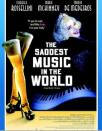

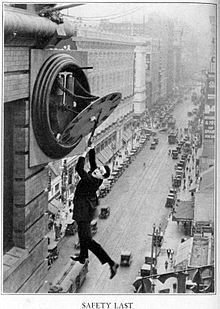

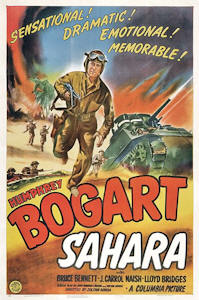



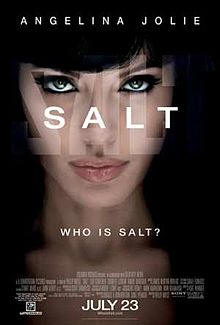
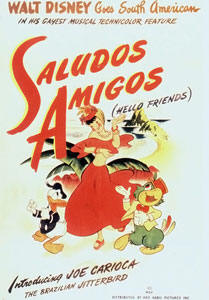

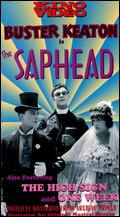


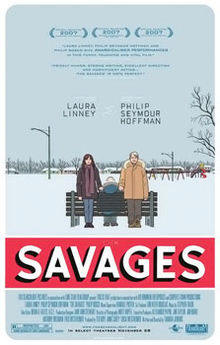
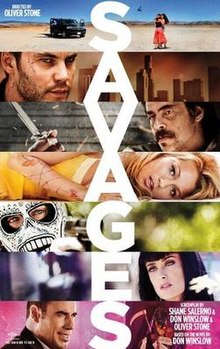

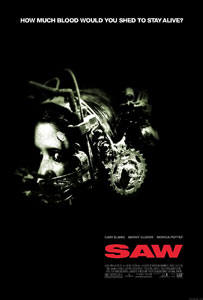

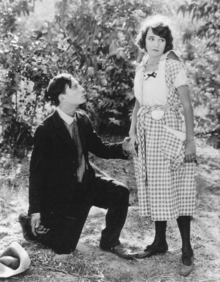



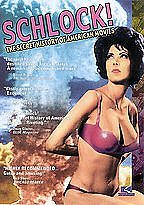


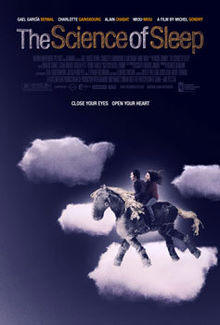


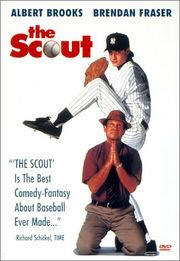
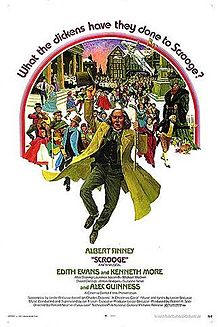
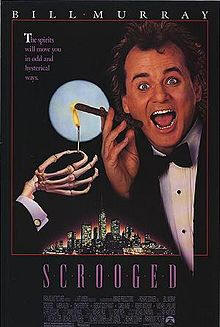
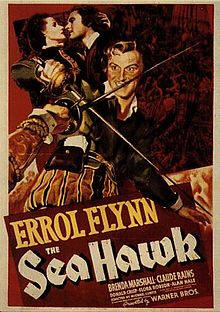


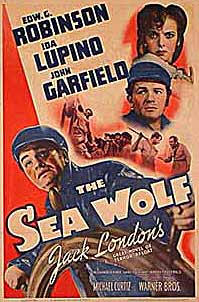

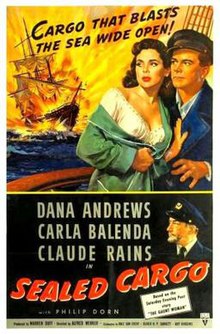




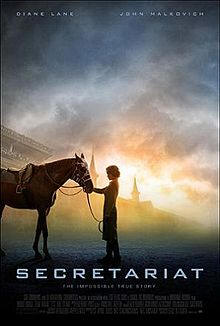









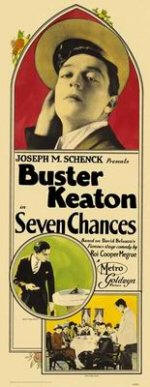
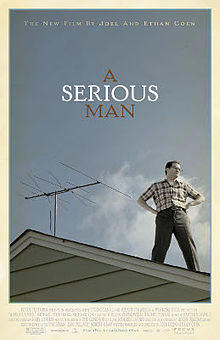

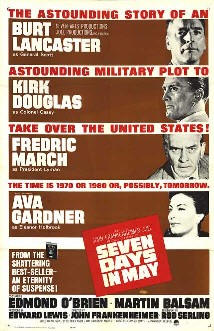
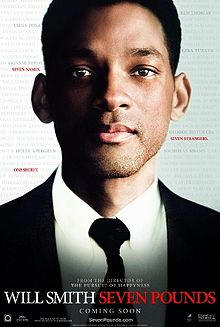








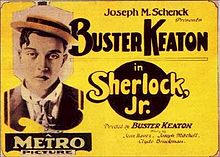
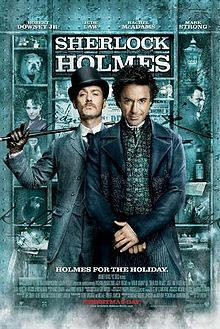
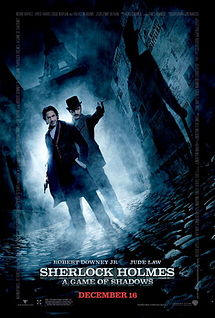

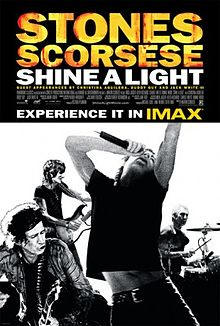


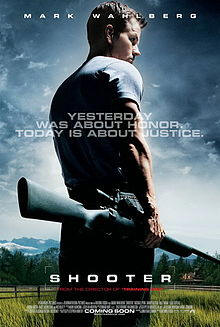
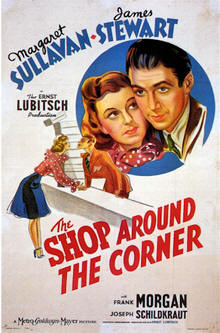
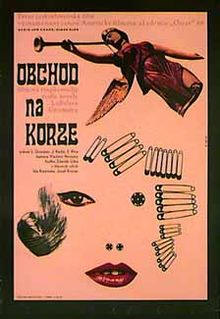

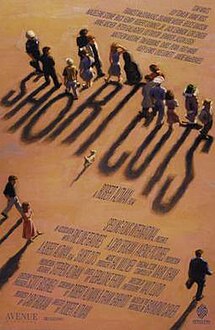
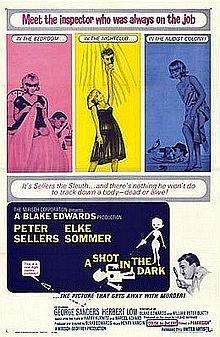
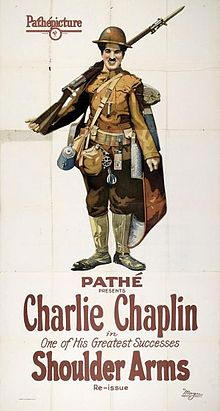
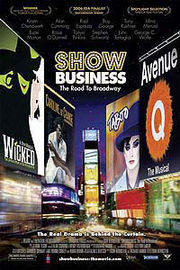
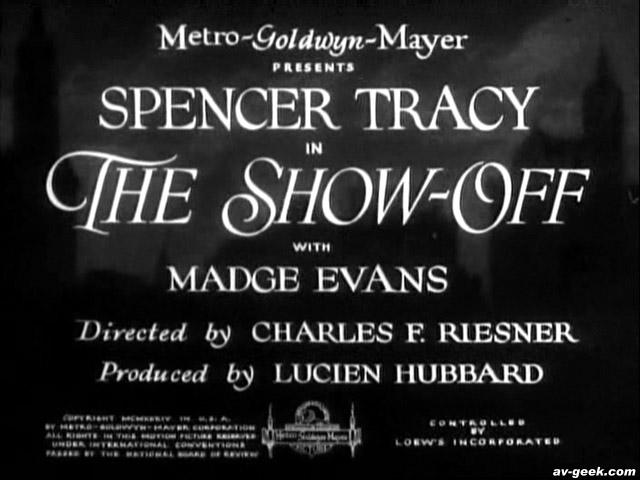


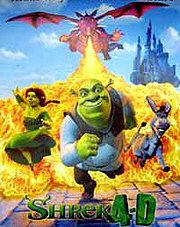
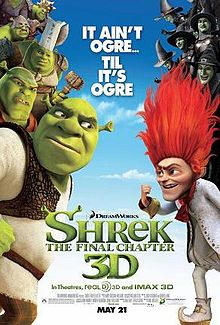
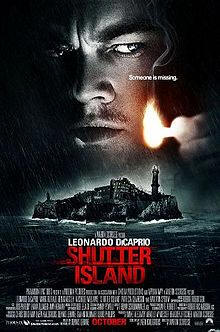





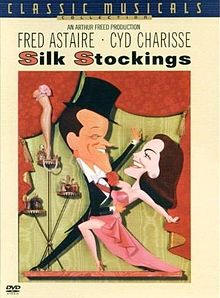



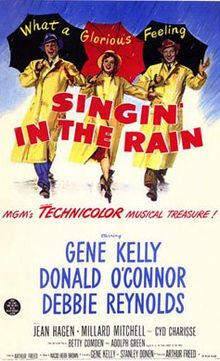








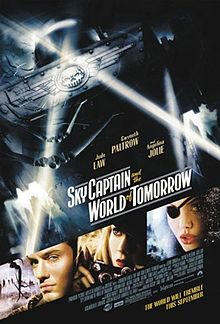


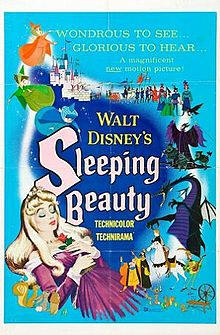
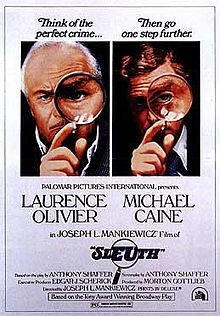
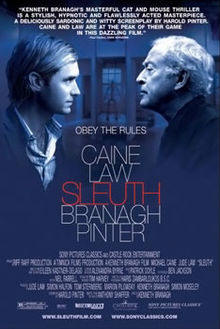
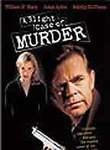
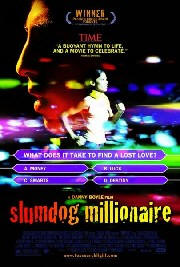
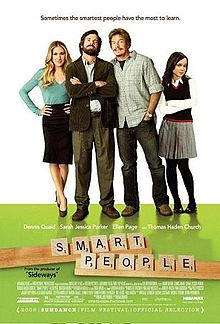

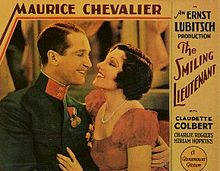

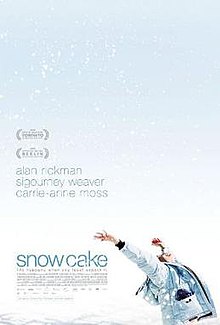


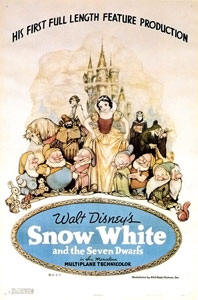
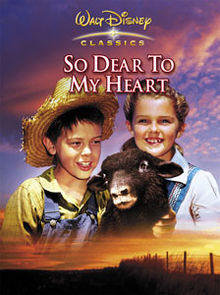
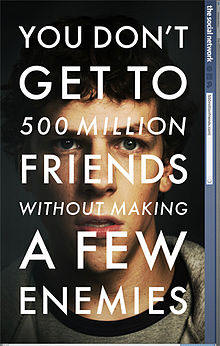

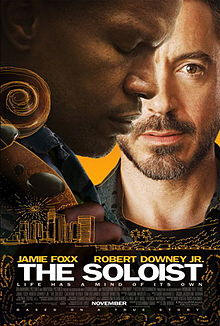
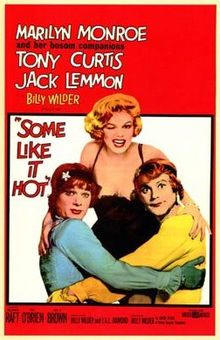
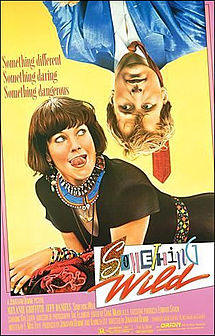


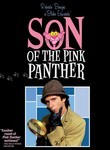
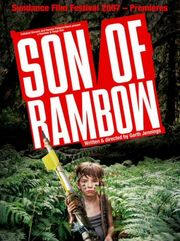
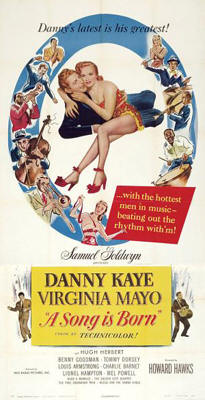
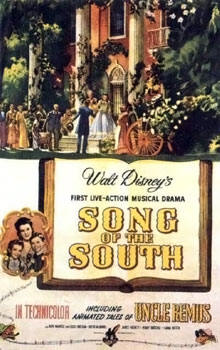
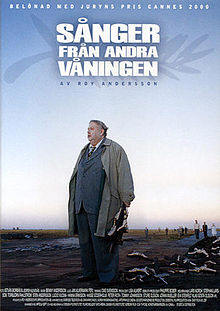



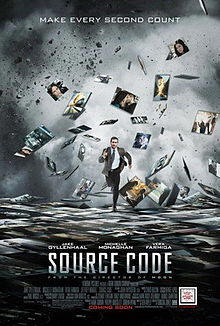




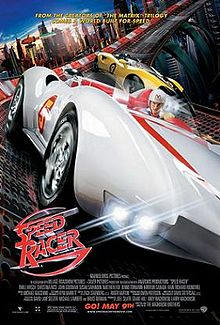




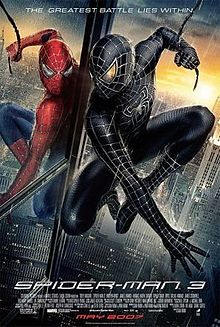
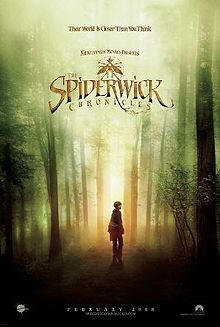







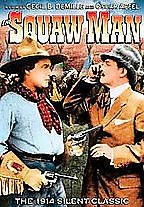
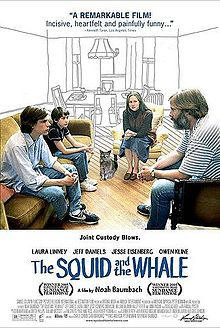

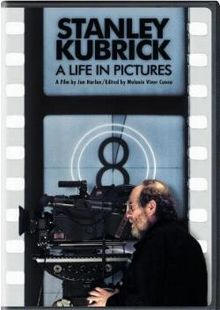

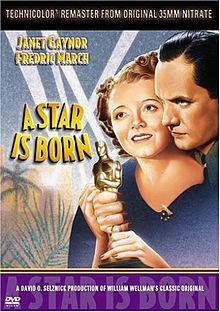
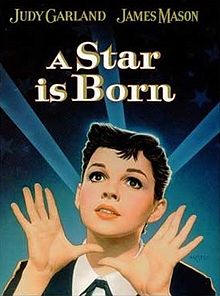
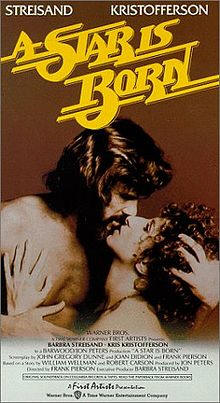
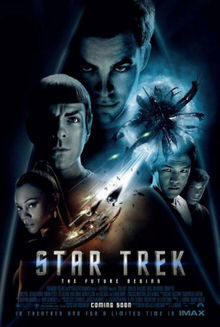
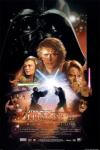
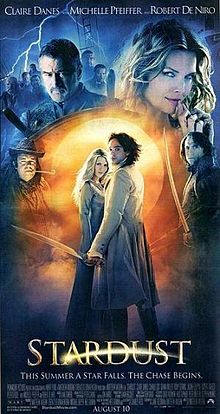
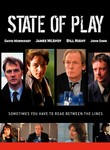
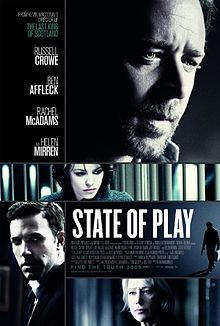



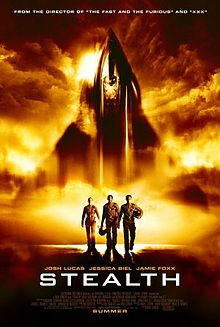
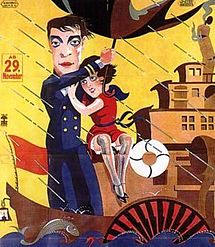
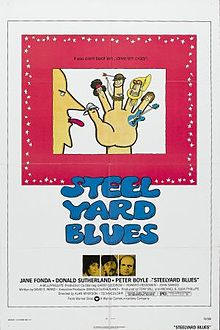
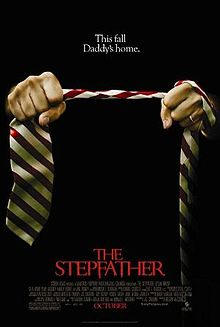






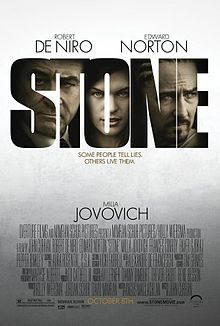



.jpg/220px-The_Stranger_(film).jpg)

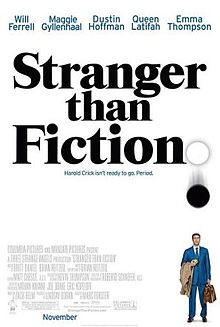

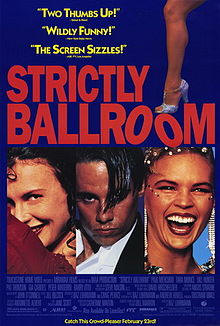

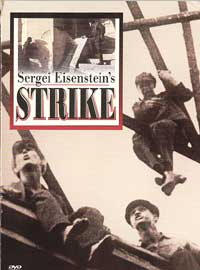

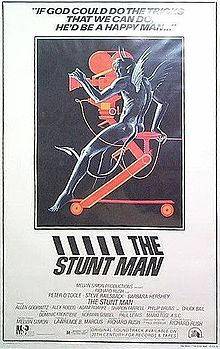
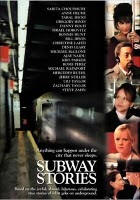
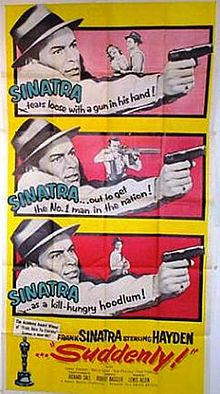
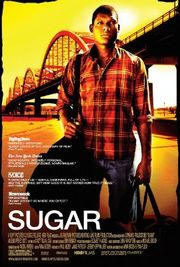
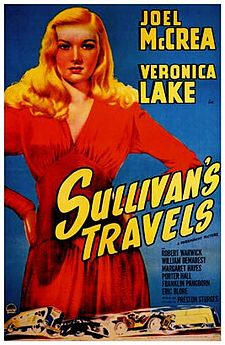
_poster.jpg/220px-L'Heure_d'été_(2008_film)_poster.jpg)

